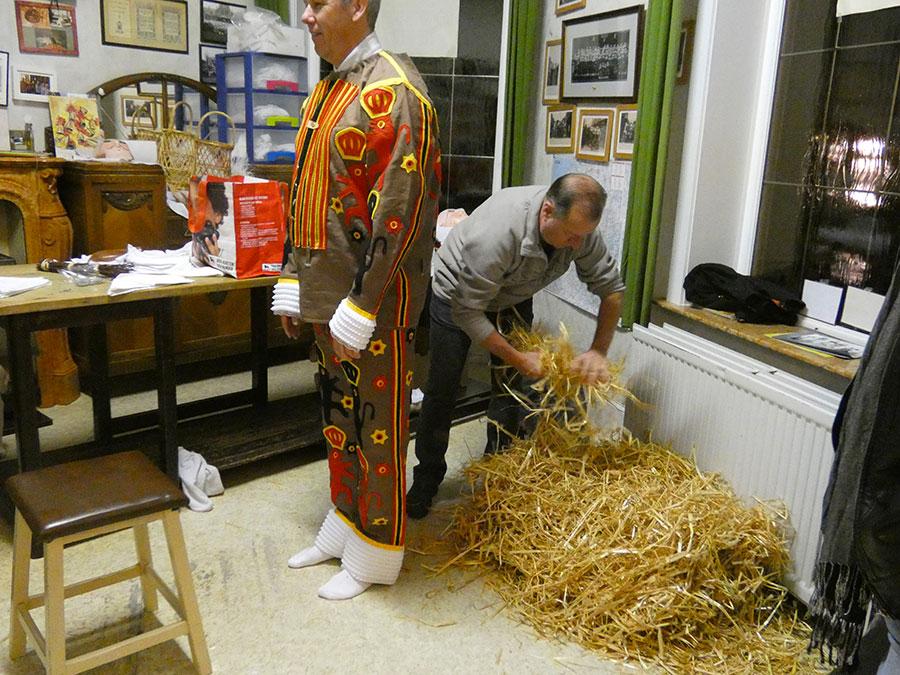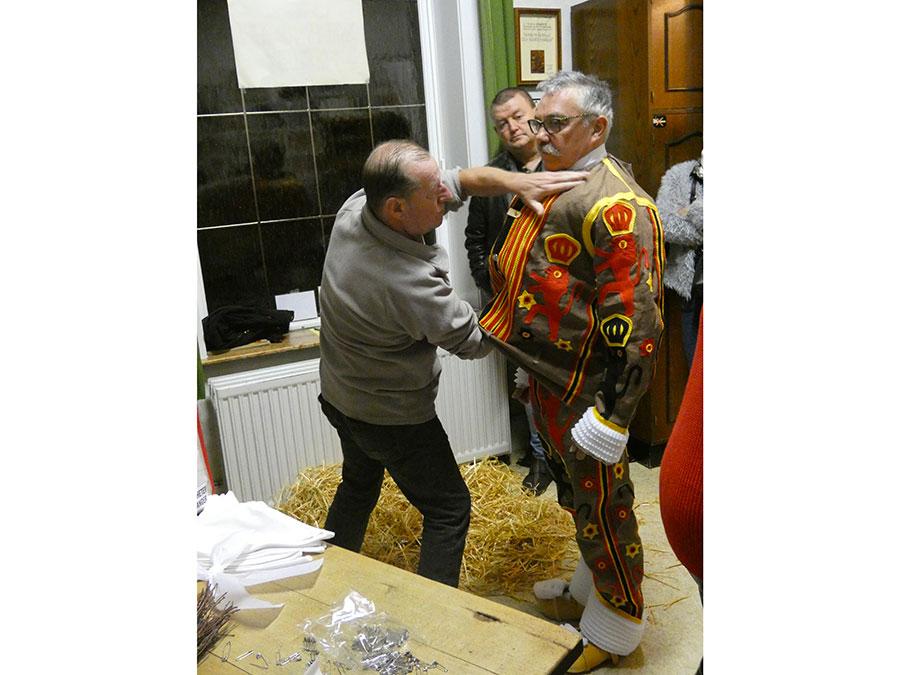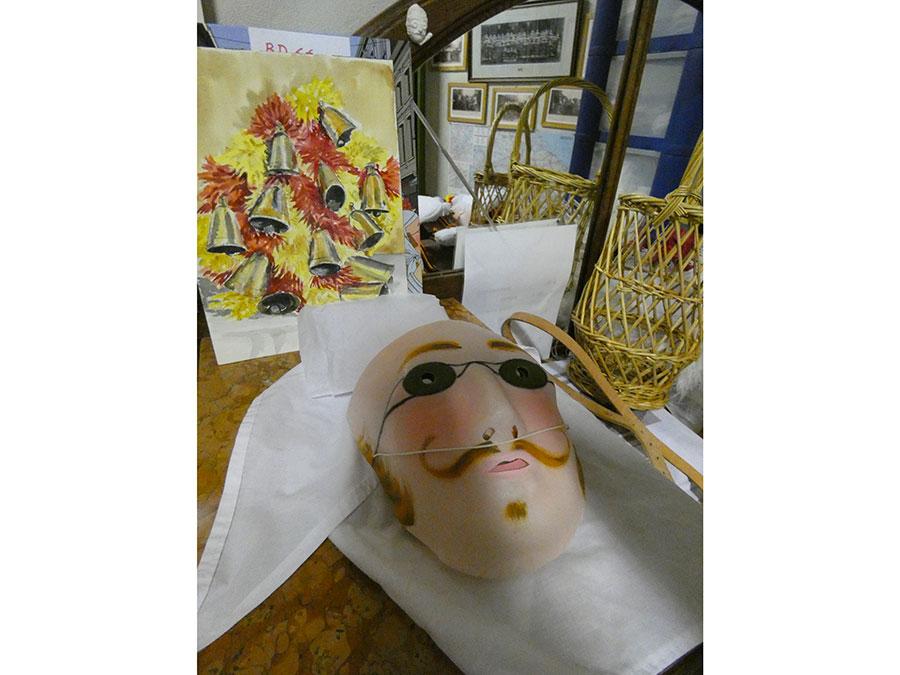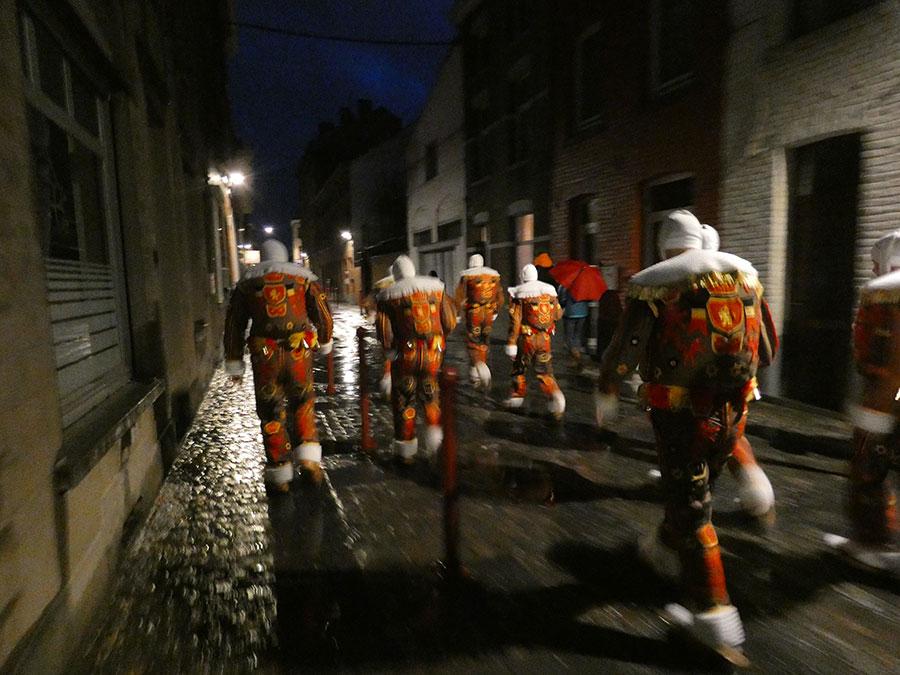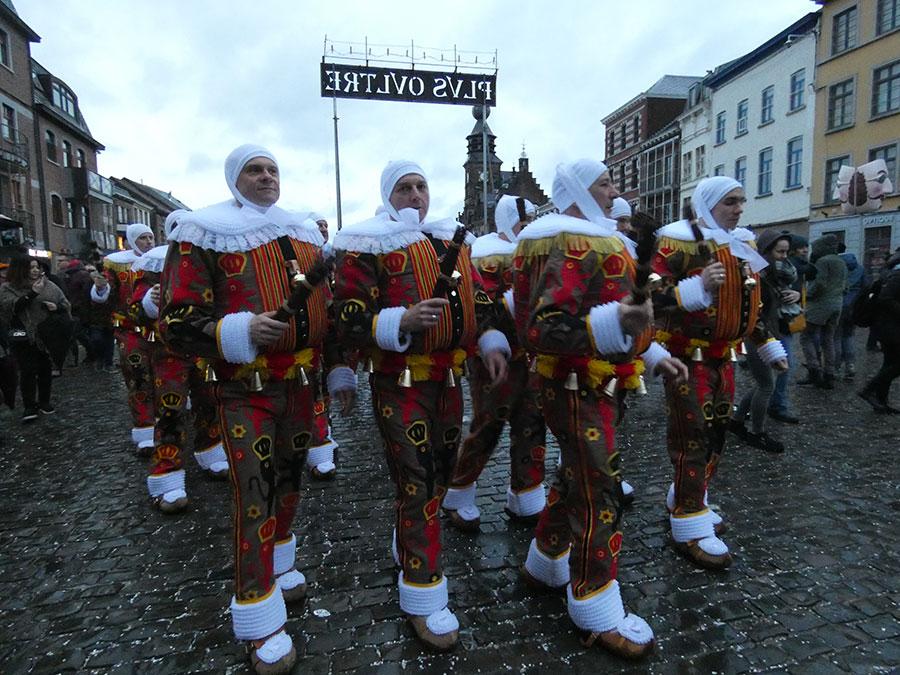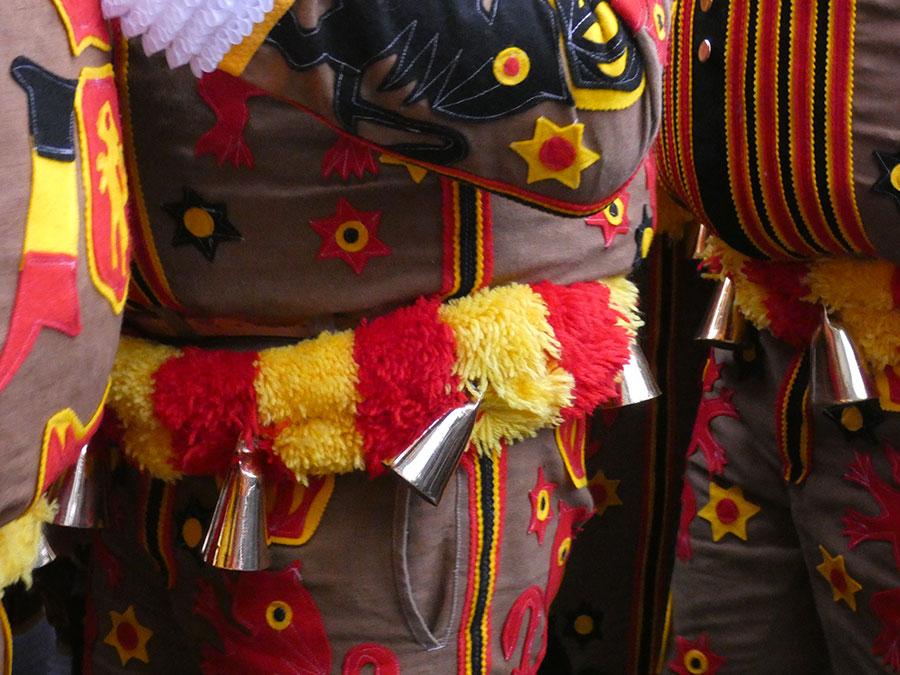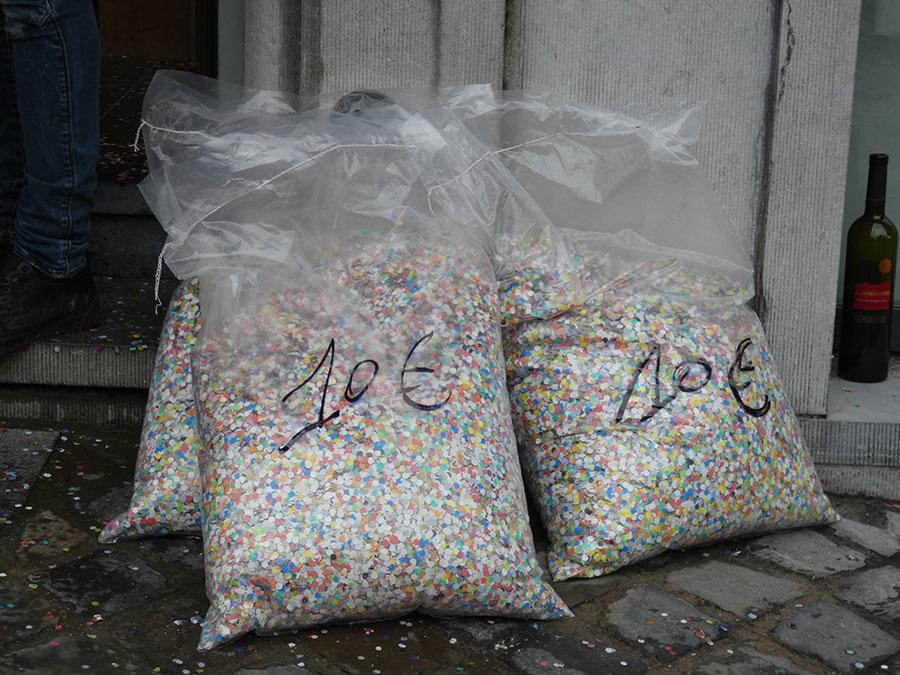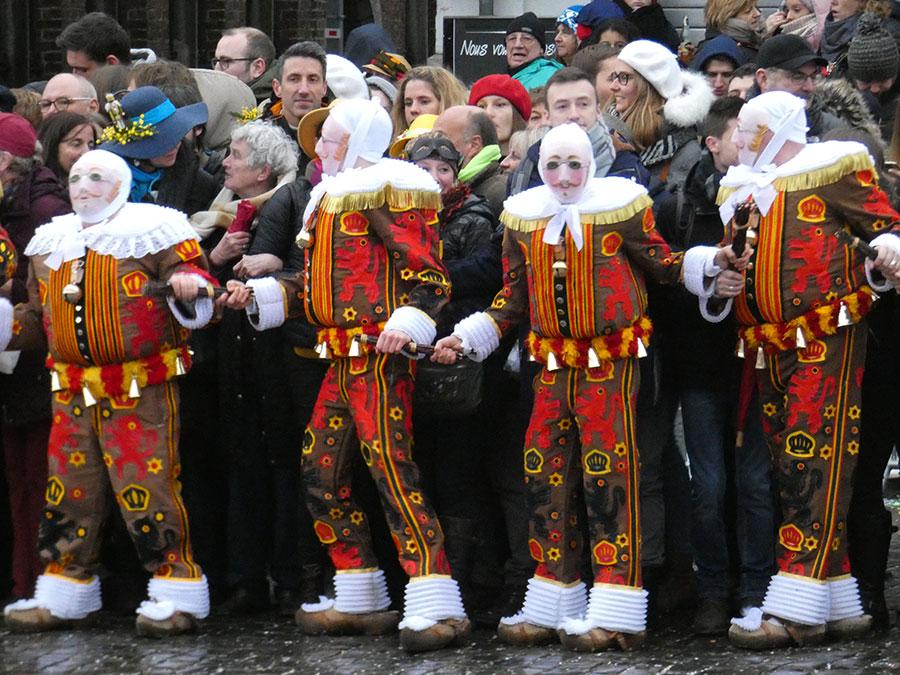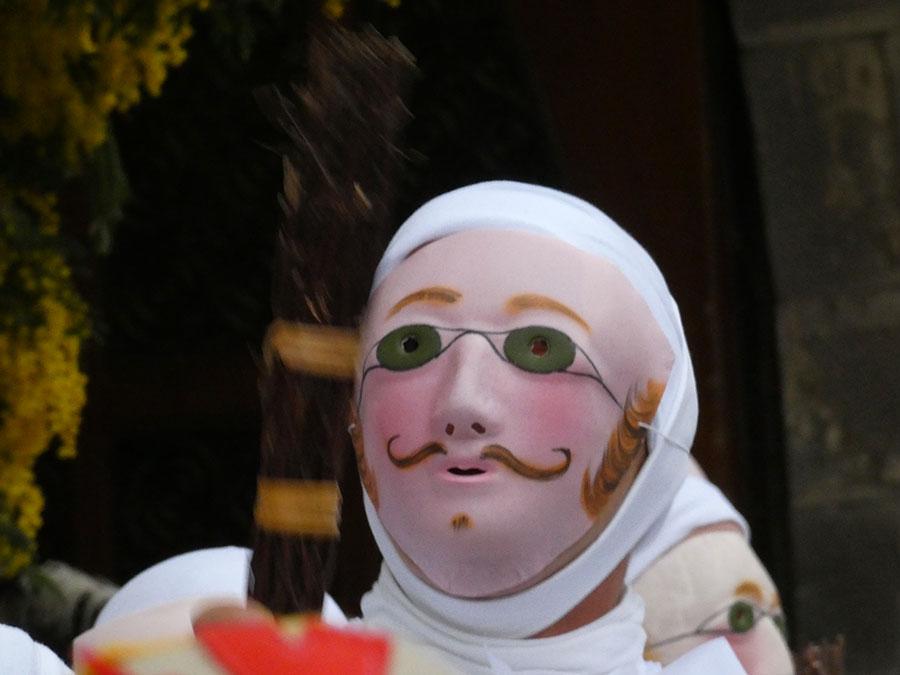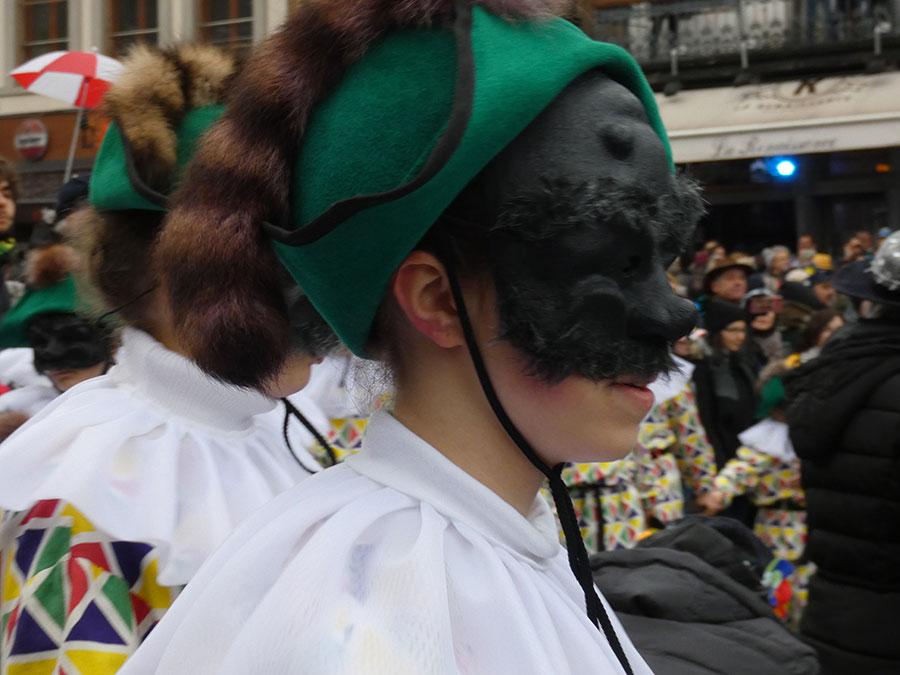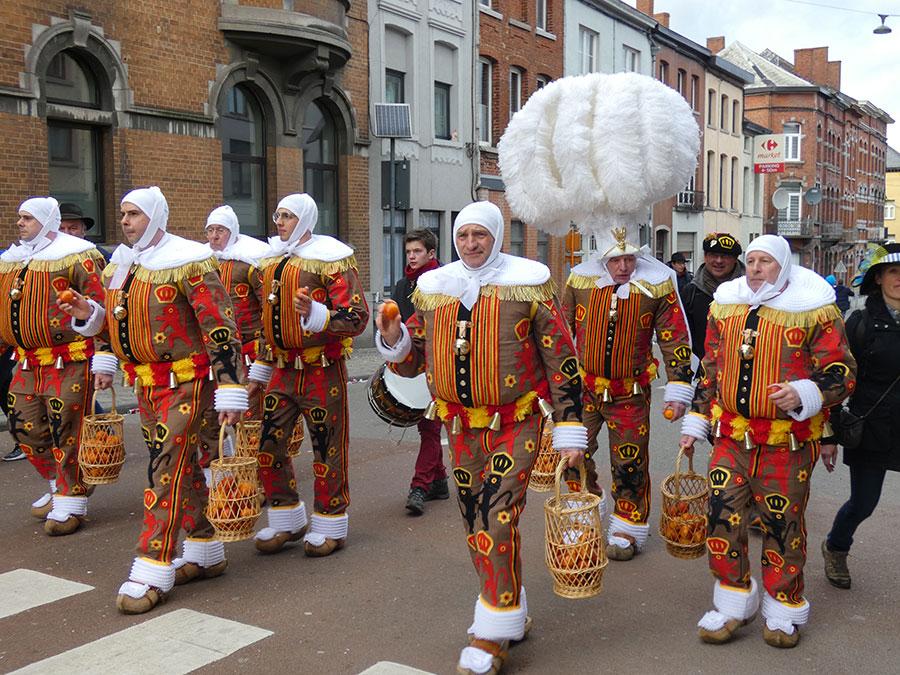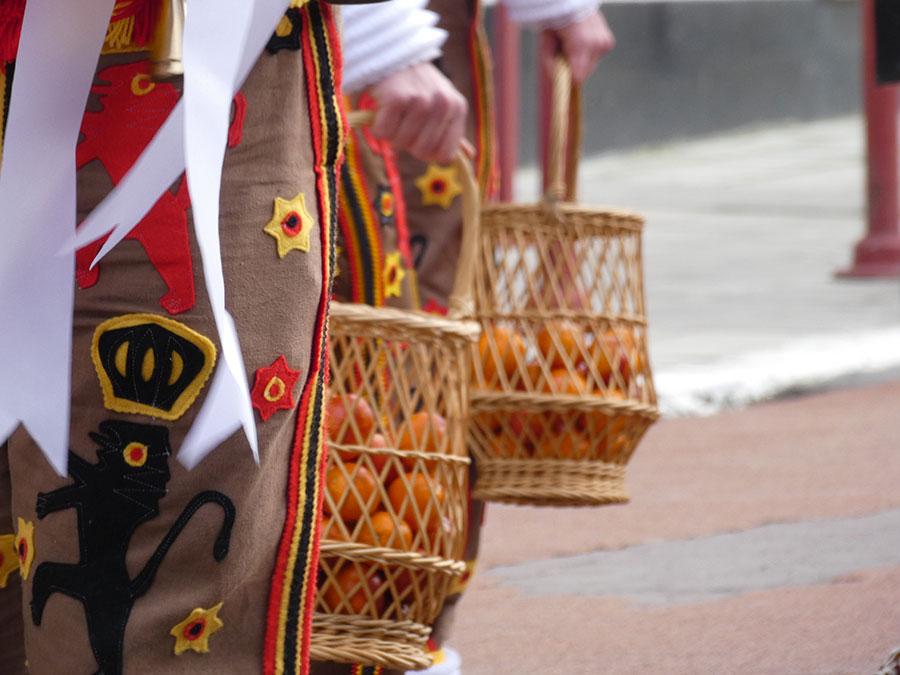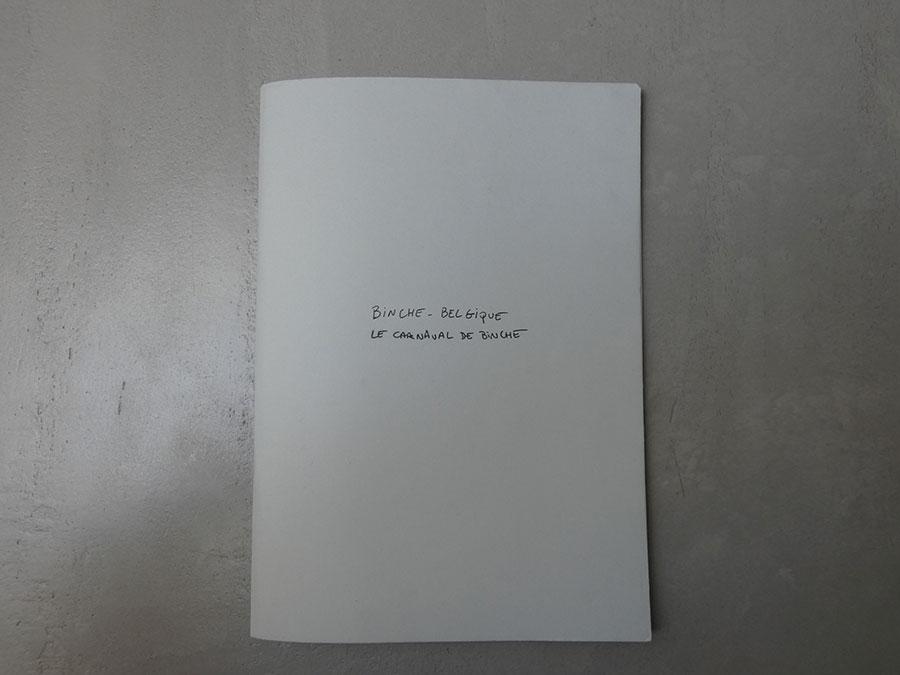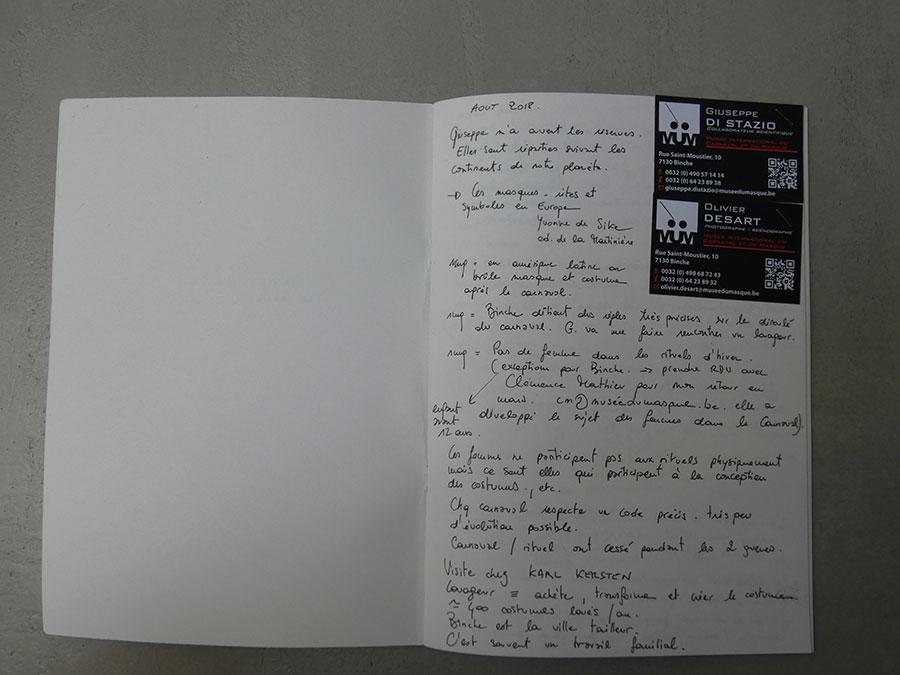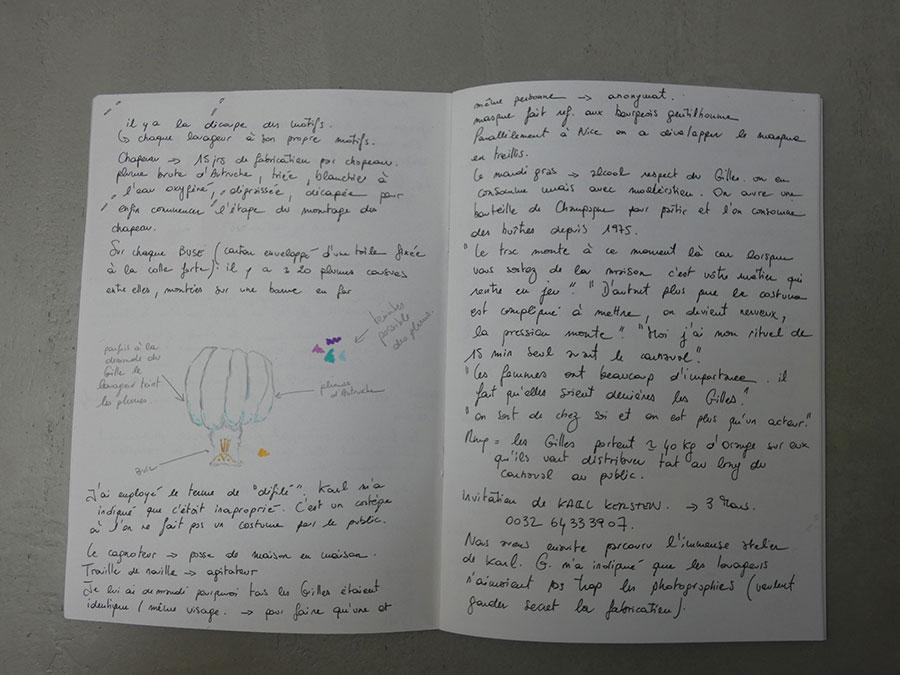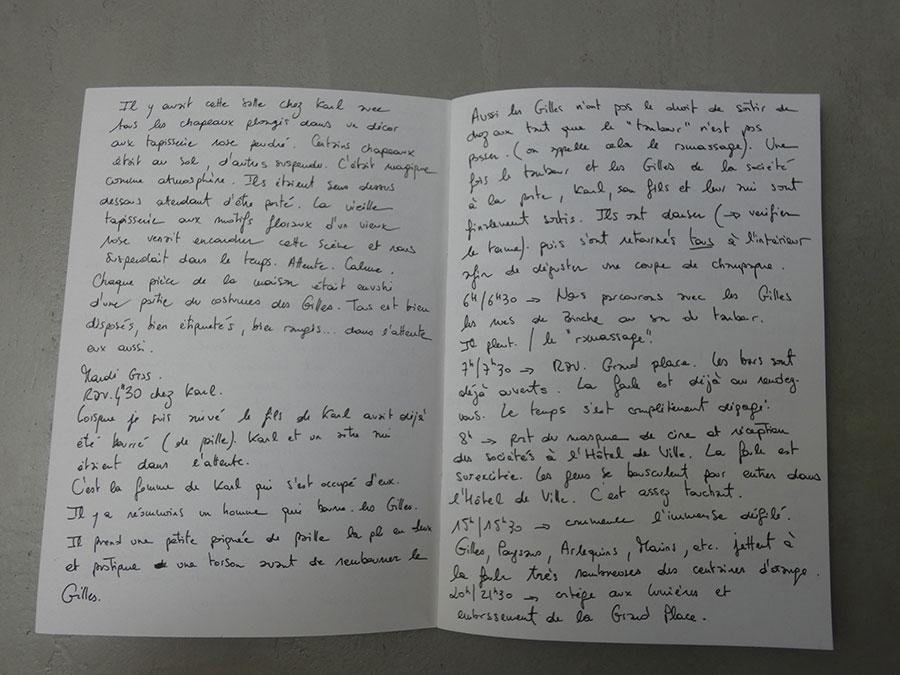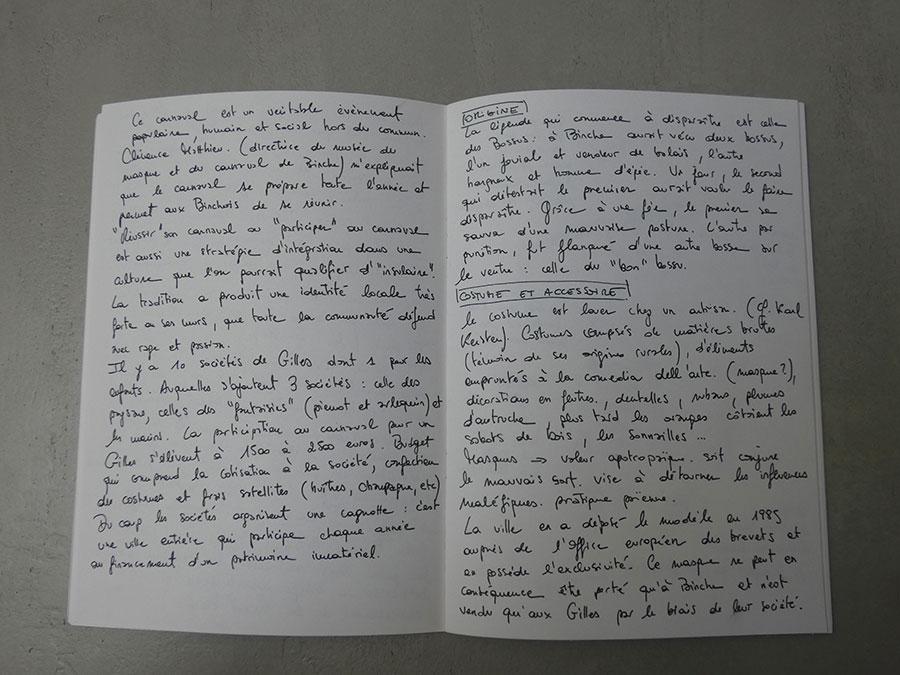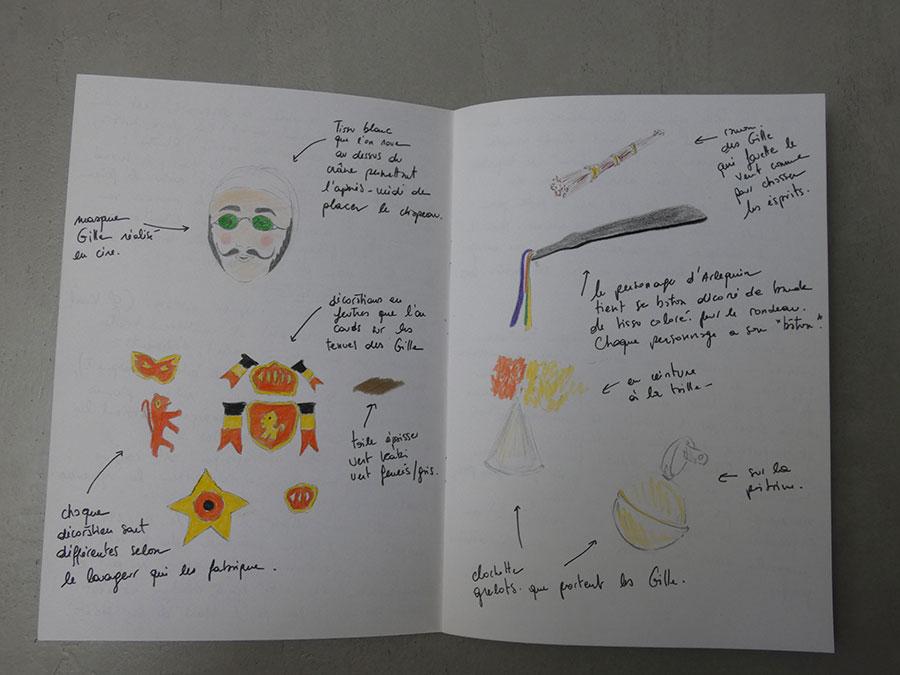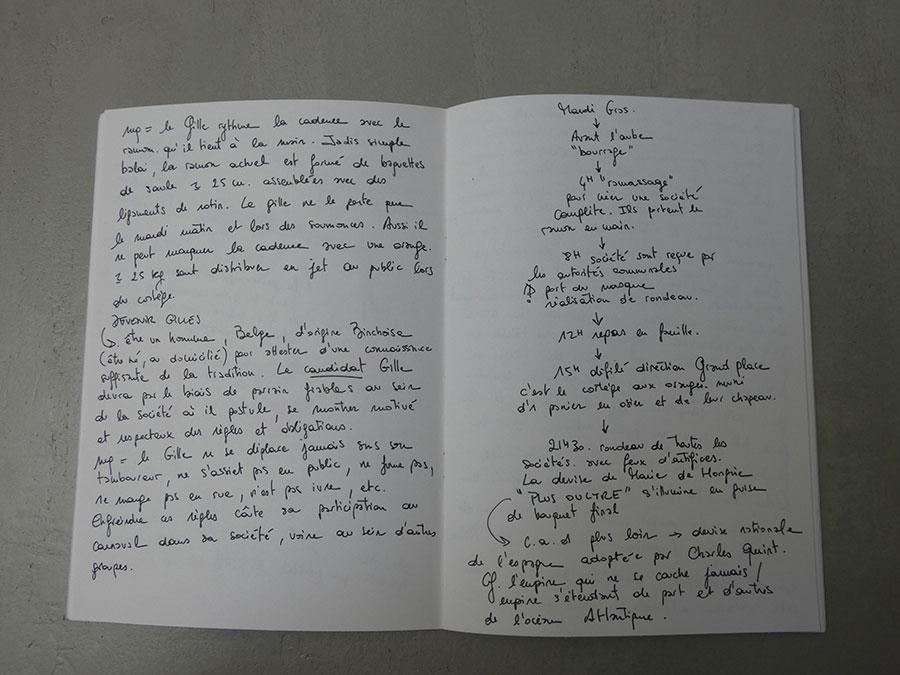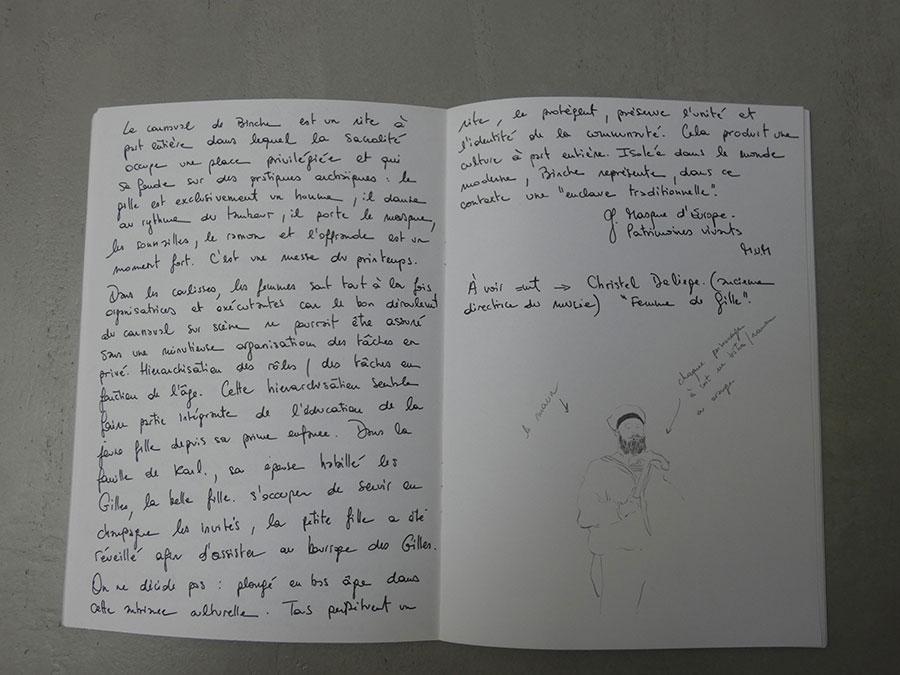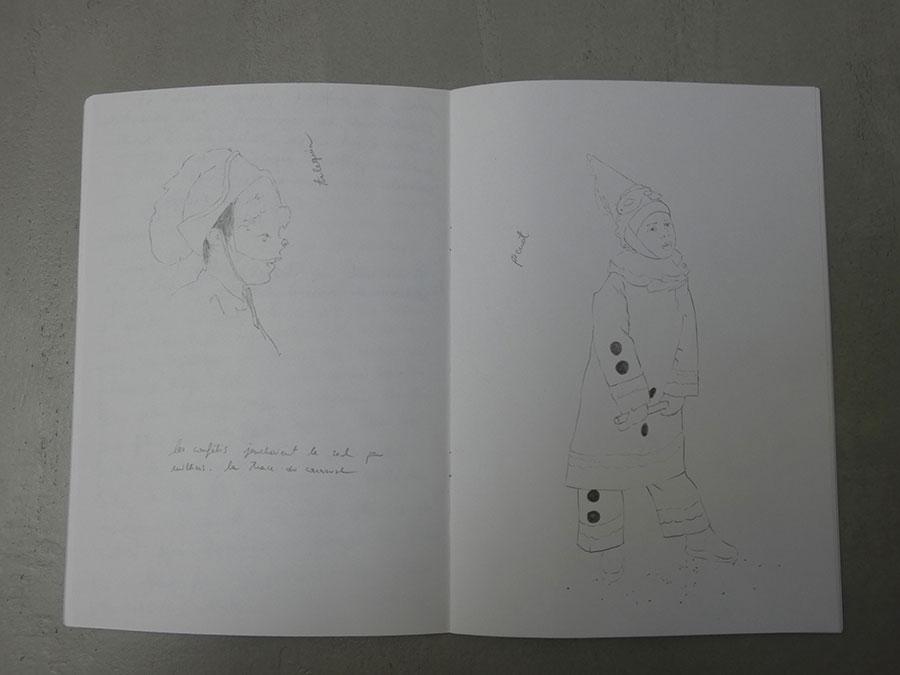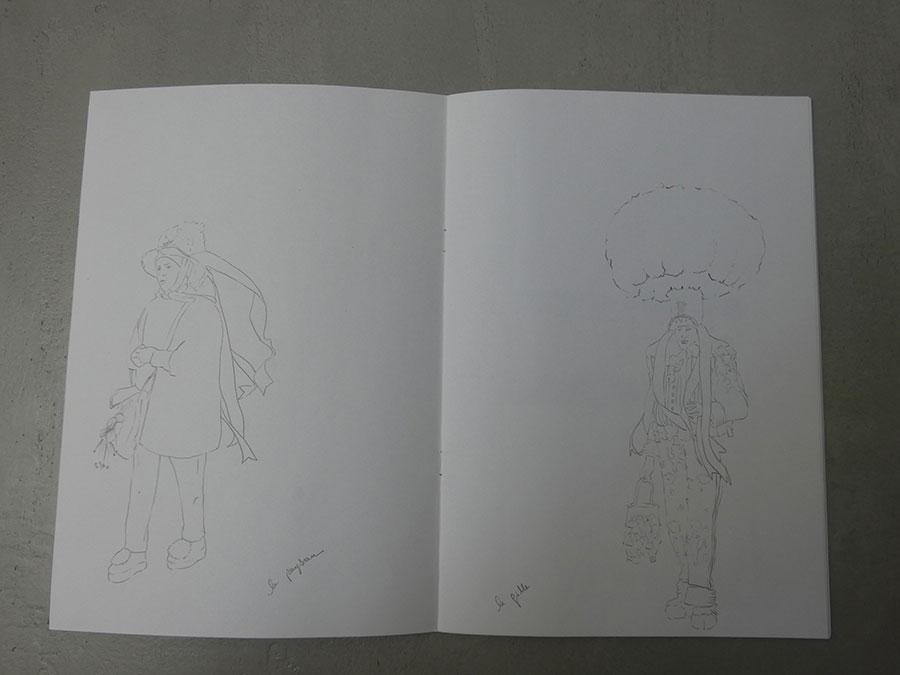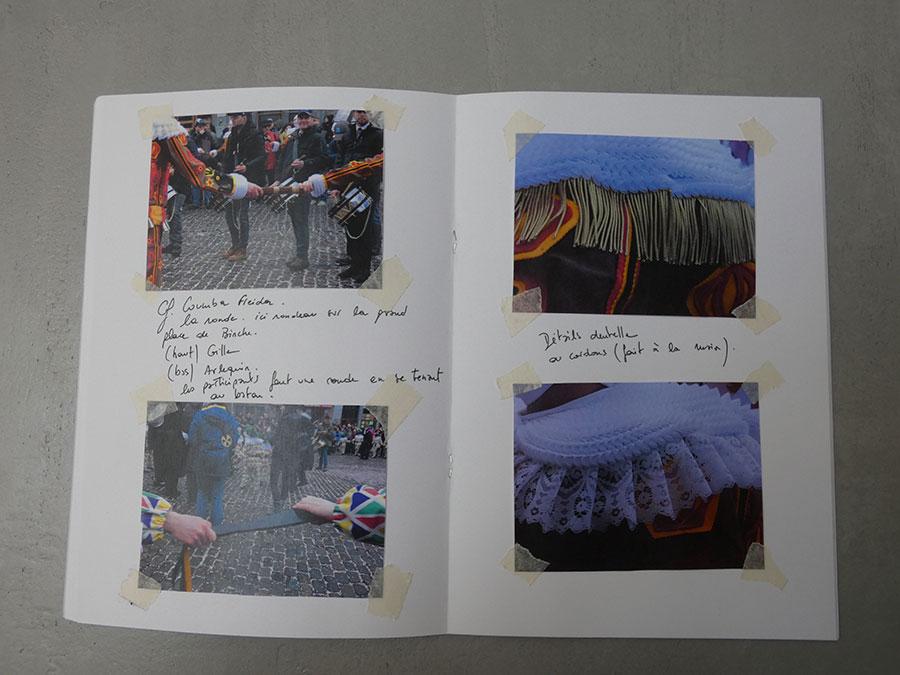Céline Marin
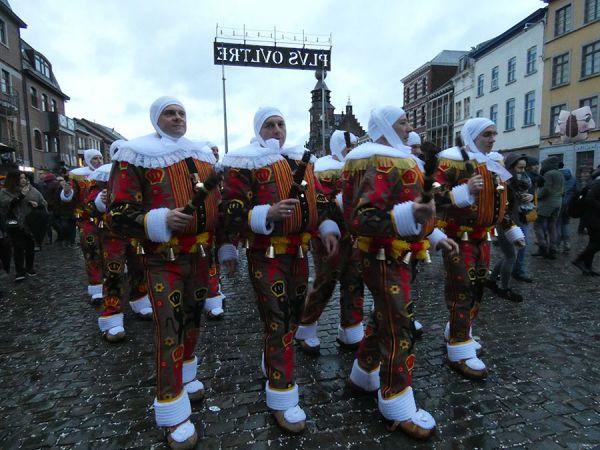
WILL THE WORLD BE REBORN THIS TIME AROUND?1
Ancient peoples considered the middle of winter a key period in time’s passage. Between dying nature and shortening days, up to the night of Winter Solstice, it was believed that malignant powers and demons hid behind it all. They were combatted through magical-religious practices. Midwinter thus gave rise to many rituals. The church’s feast days were added on top of these older practices, “putting a Christian robe on their shoulders” and trying to push them into the background or change their meanings2.
Today, spectators and participants alike express a need to perpetuate ancestral rites proper to their communities. Still the 20th century has seen many interruptions, with the young men in charge of these rituals leaving the countryside. Masquerades we might witness today are revivals or renewals of these rituals. For some of them, inspiration comes from neighbors, or with the internet, from the world over or popular Western culture (Heroic Fantasy films, heroes, etc.). Yet local actors tell the same story with great conviction: “fighting off winter or assuring the victory of life over death.”3
My drawings are the fruit of long research on iconography consisting of photography, both amateur and personal, post cards, images cut out of magazines, etc., thus creating, since leaving school, a veritable vocabulary of personal forms. My travels have allowed me to take on the printed page. The immersive journey provided by this project has added new tools to my artistic practice and new ambitions for my research.
It’s been a plunge into a carnivalesque imaginary referencing ancient, sometimes reinvented mythologies, Christian and Celtic myth combined and, in some cases, far-off shamanic and neolithic antiquity colored by modernity.
The work involved directly archiving data from improbable mixtures (of costumes, masks, ritual events, temporal jumbles, etc), approaching various cultural institutions, then collecting testimony from local actors or spectators of these rites and joining them on the streets of villages as a quiet observer.
Transforming the data into images gives the subject an immediately perceptible narrative structure. I was thus able to take pleasure in the unusual by drawing these magical-religious encounters in a world in which the impossible truly exists.
Notes :
1 Michel Agier, anthropologist
2 Le Livre des Masques, Collections from the Musée International du Carnaval et du Masque (Binche) by Michel Revelard and Guergana Kostadinova, La Renaissance du Livre.
3 Le Monde à l’Envers, Flammarion Mucem
THE JOURNEY
> BELGIUM
Contact/meeting: Musée International du Carnaval et du Masque, Binche, Clémence Mathieu and Guiseppe di Stazio.
> SPAIN
January 7/ Silio, Spain/ La Vijanera/ Banishing evil spirits from the city.
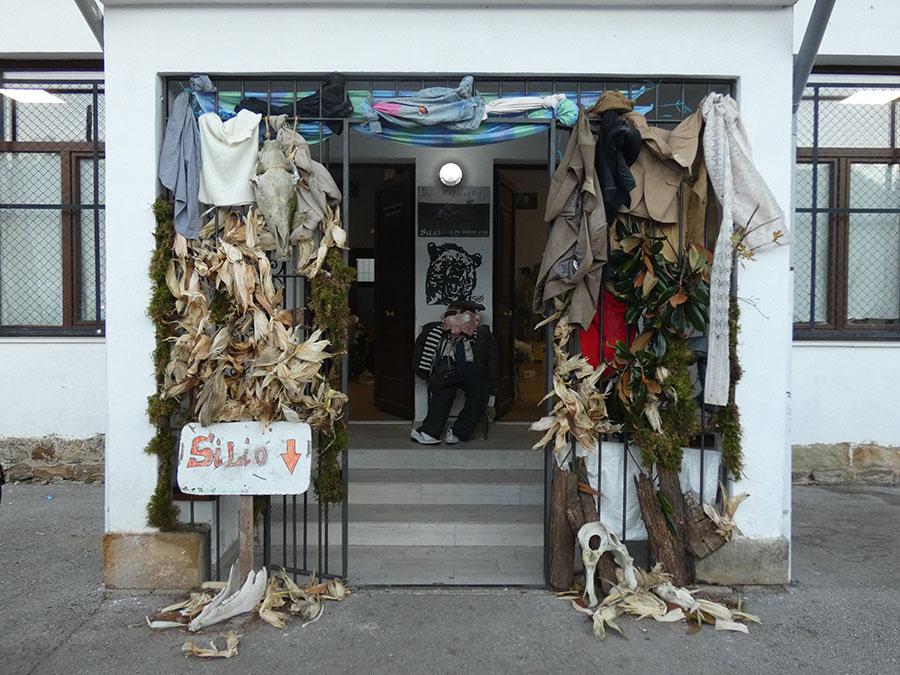
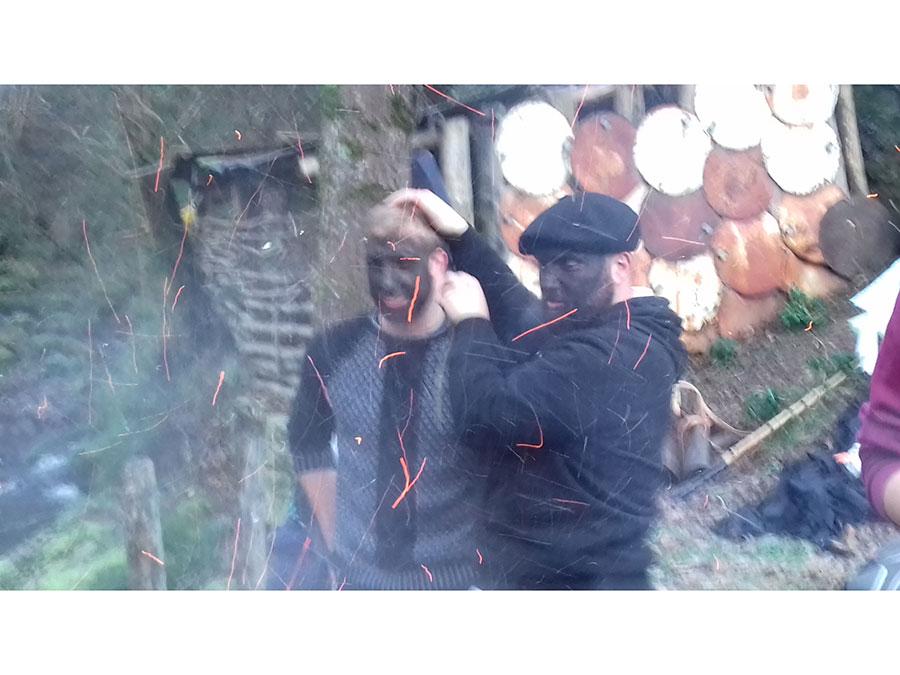
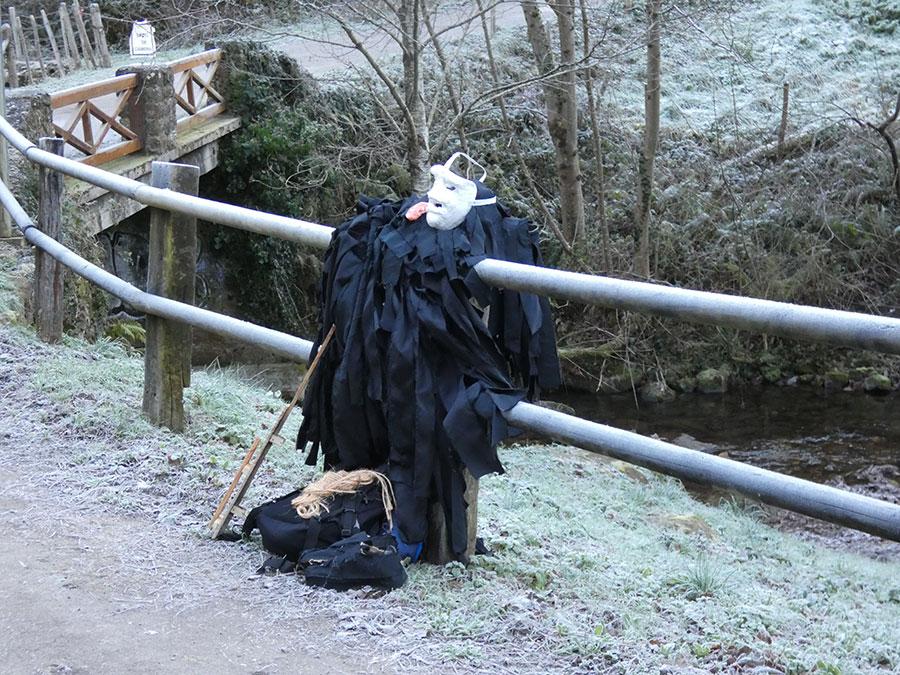

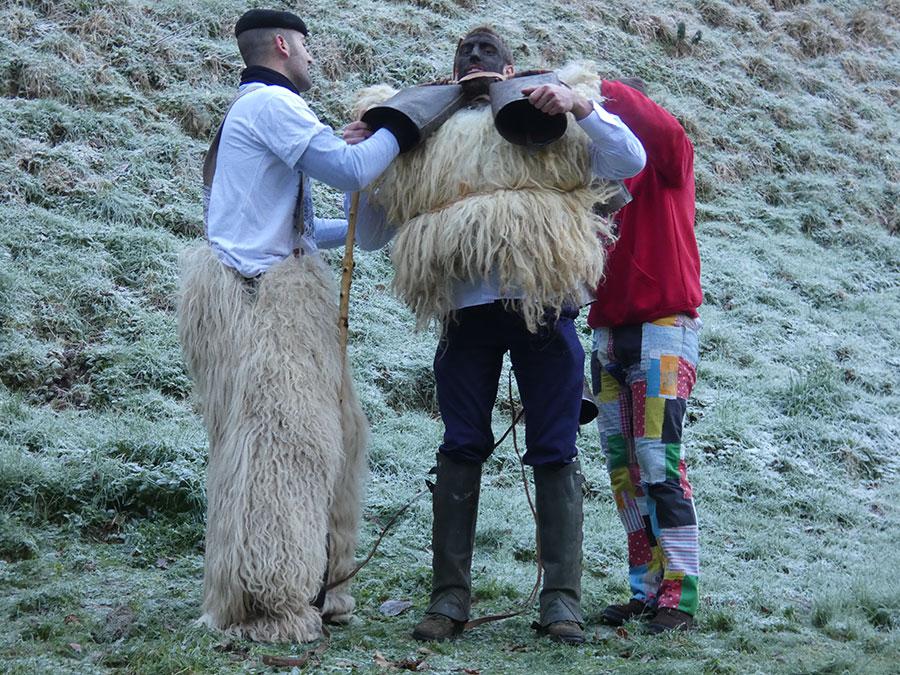
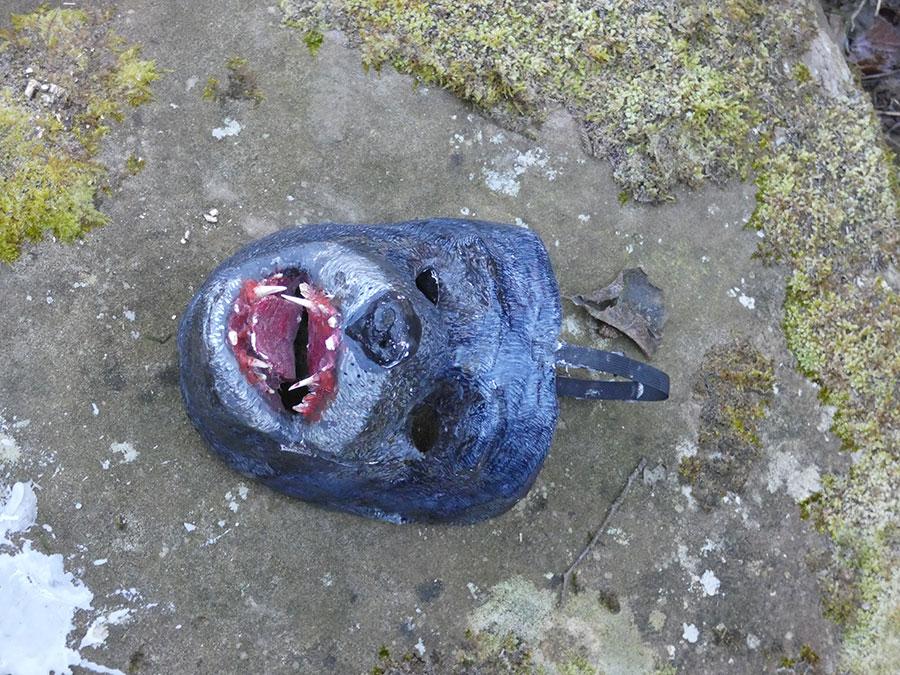

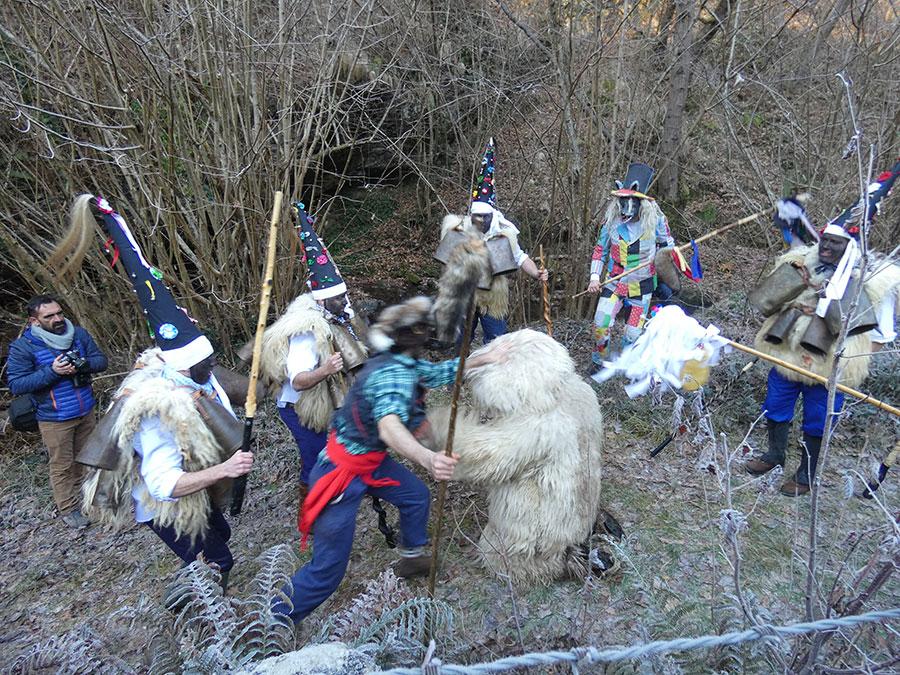
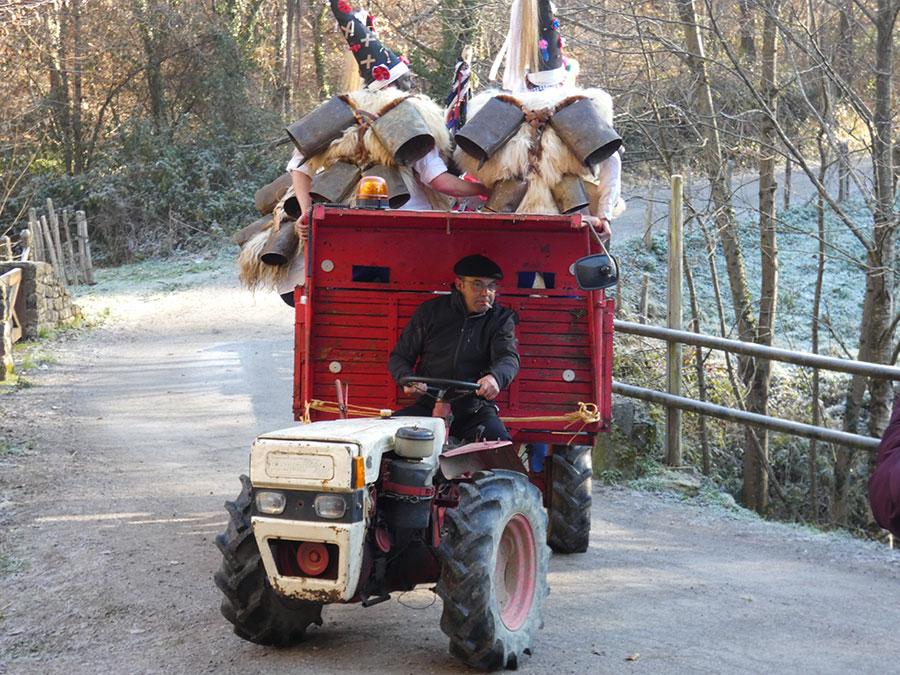

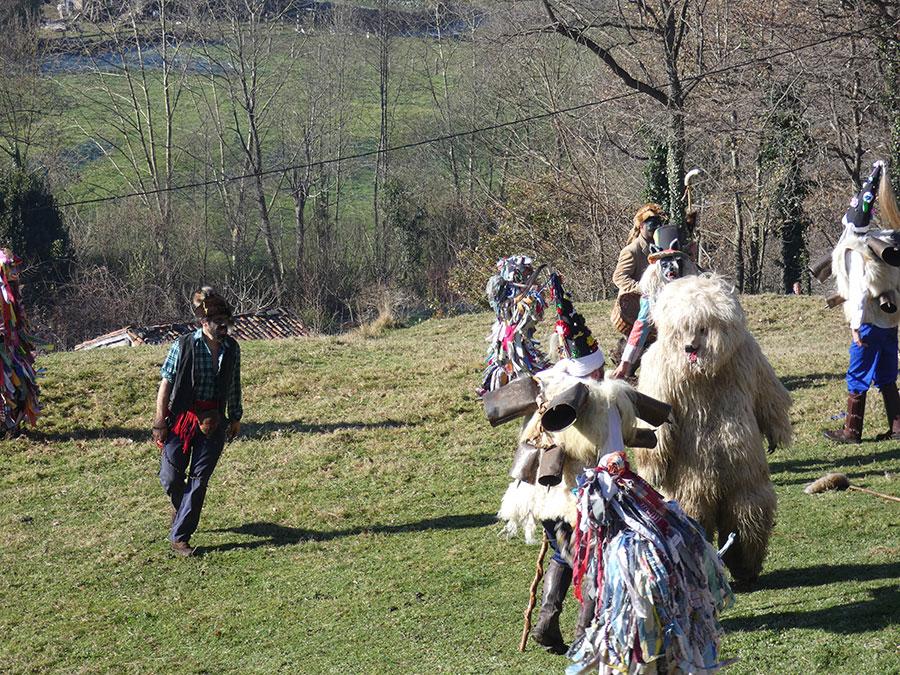
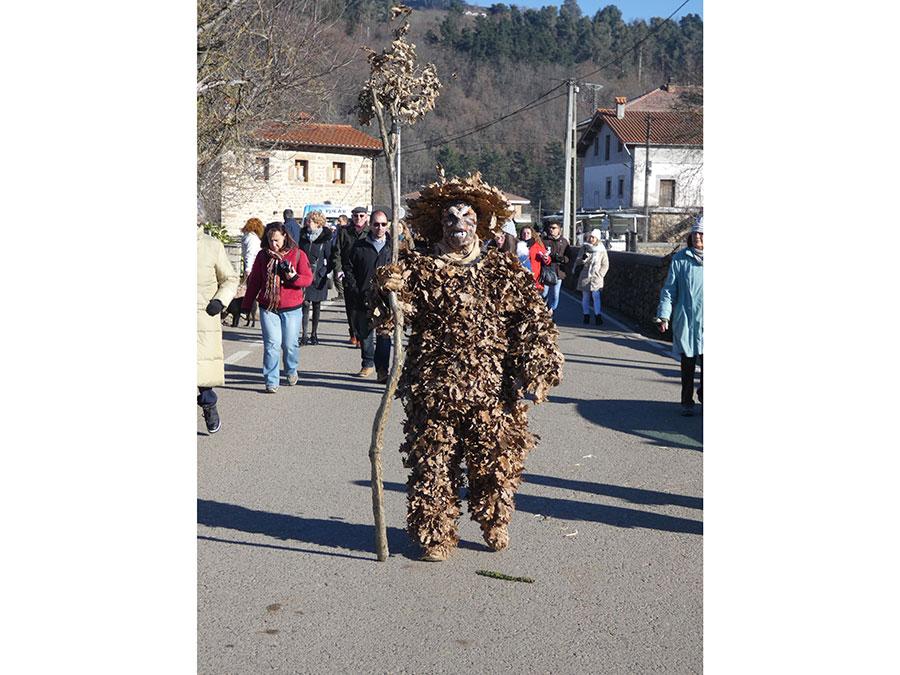
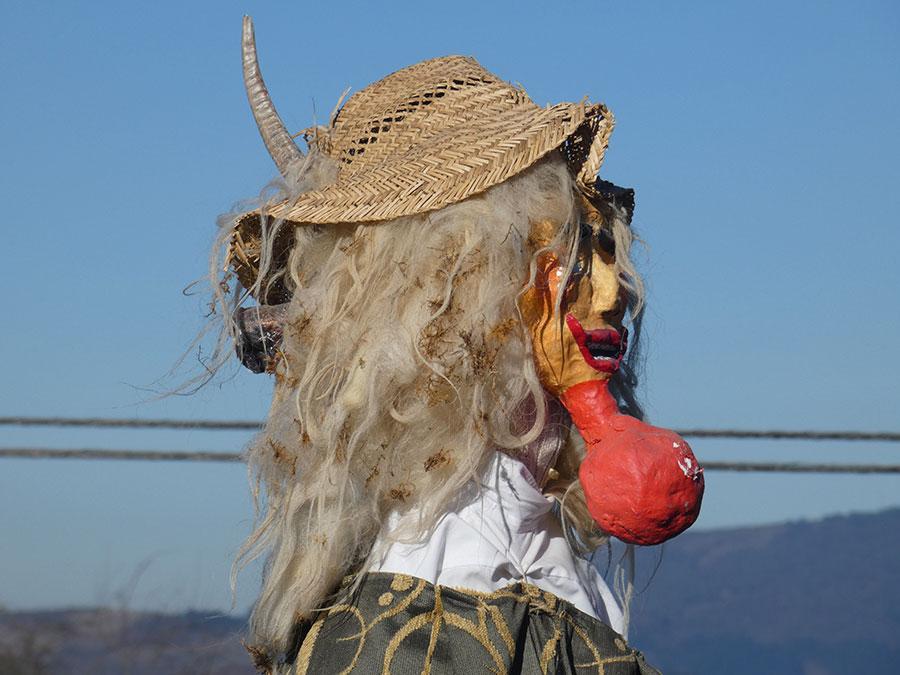
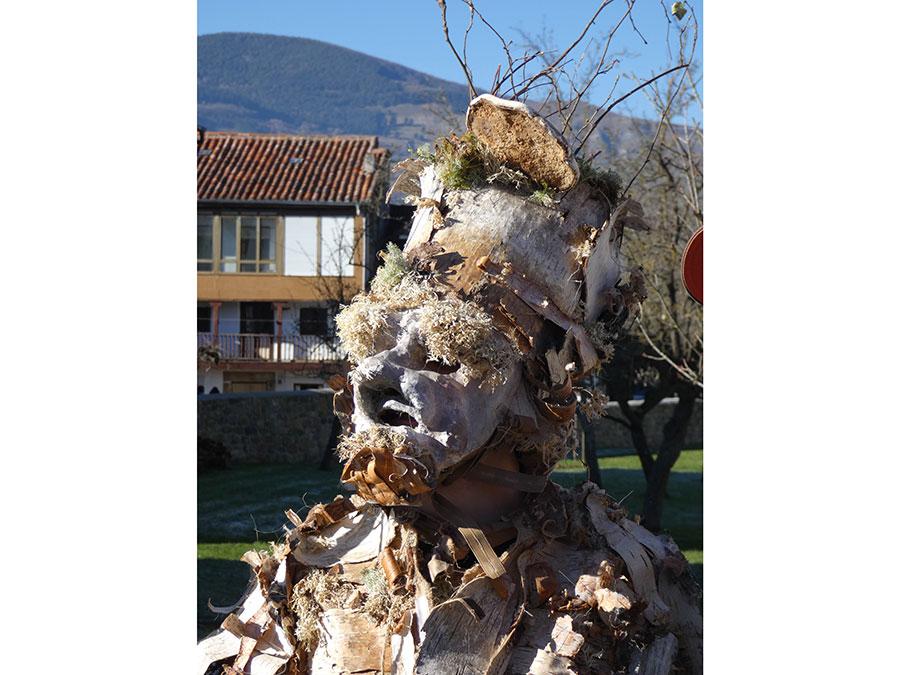
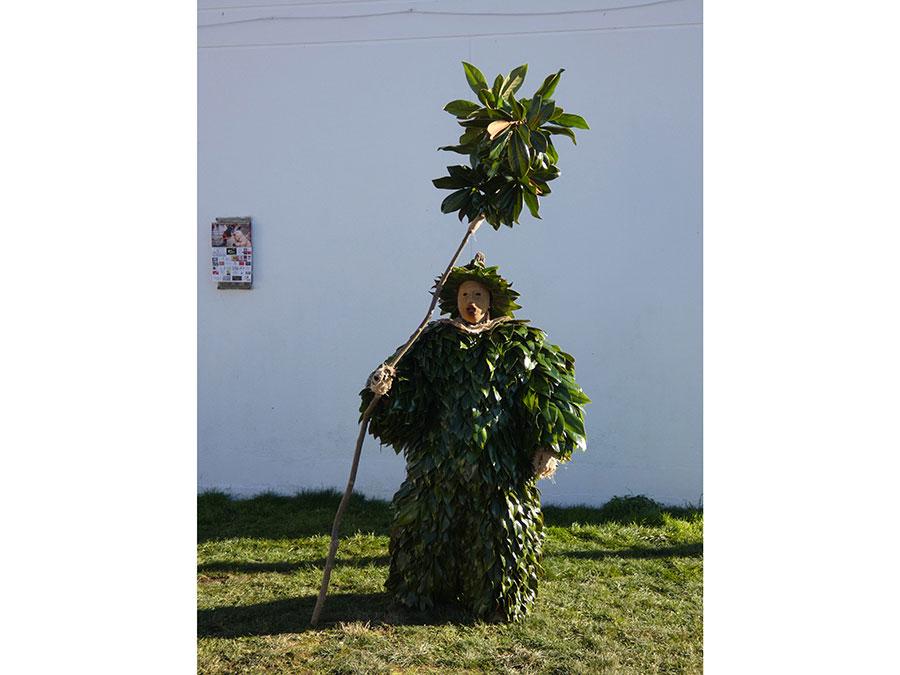
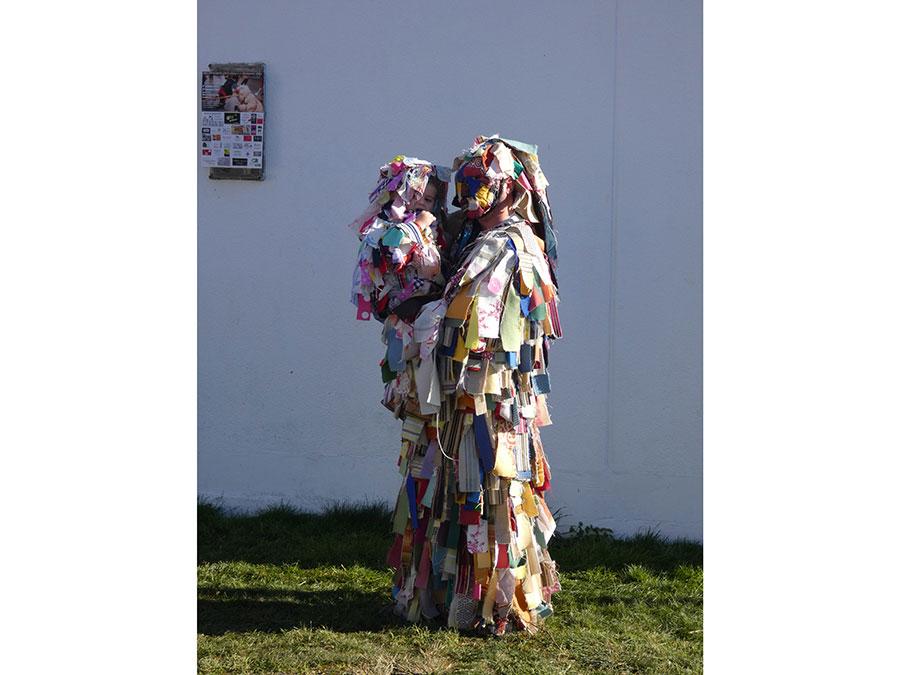
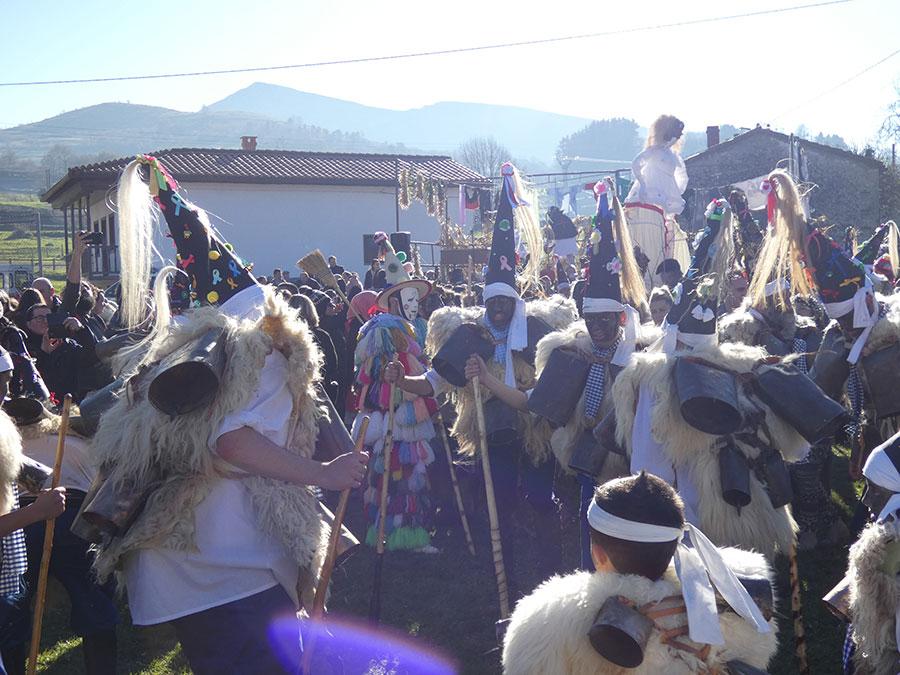
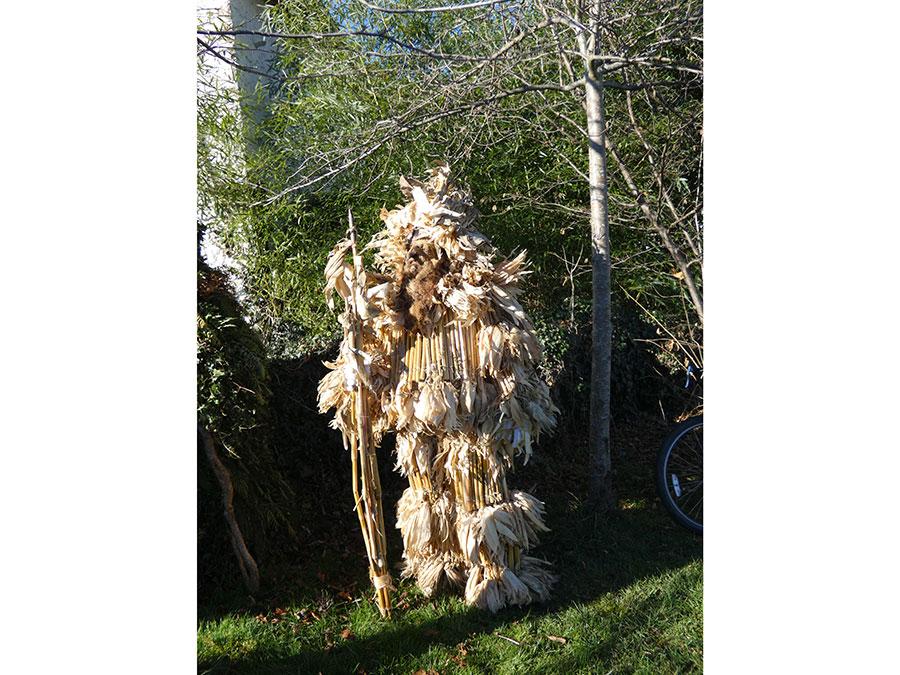
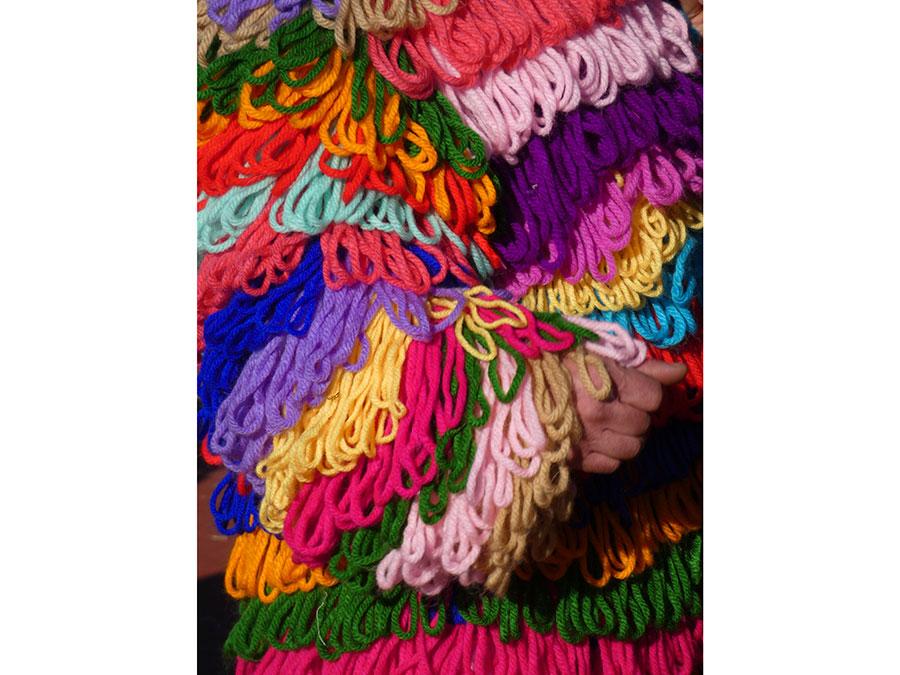
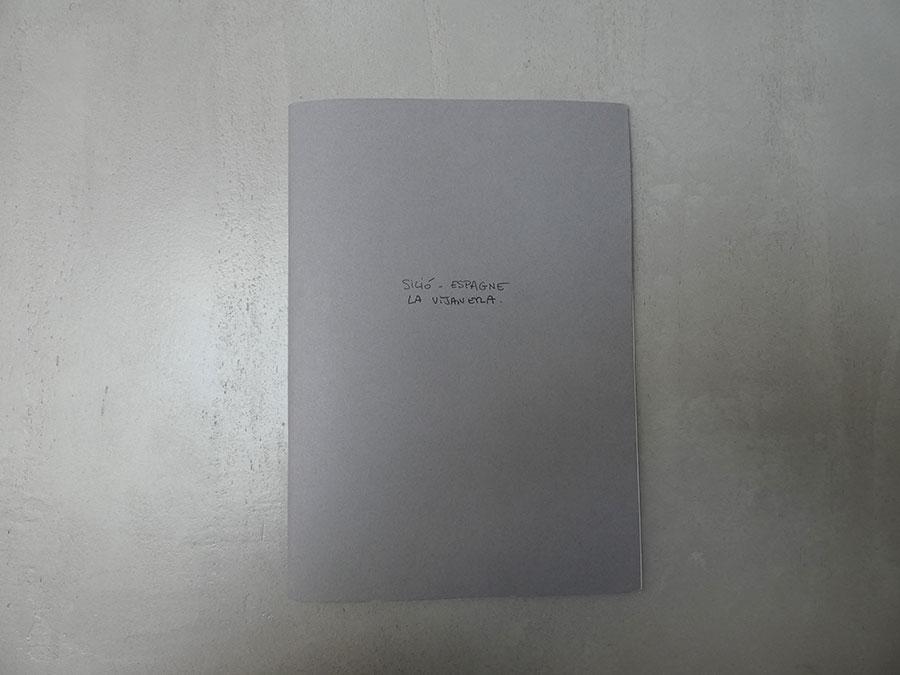
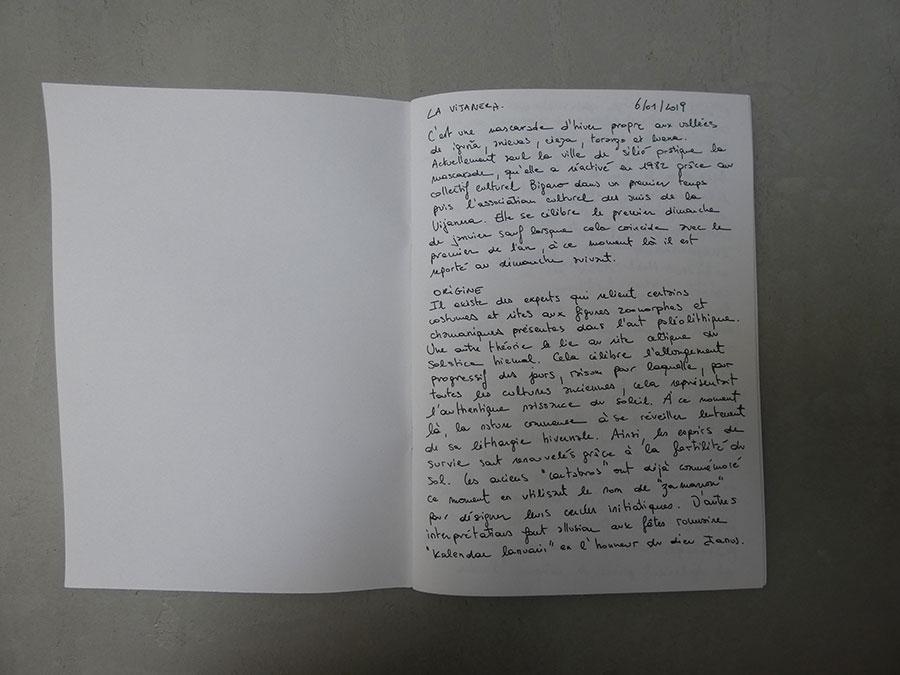
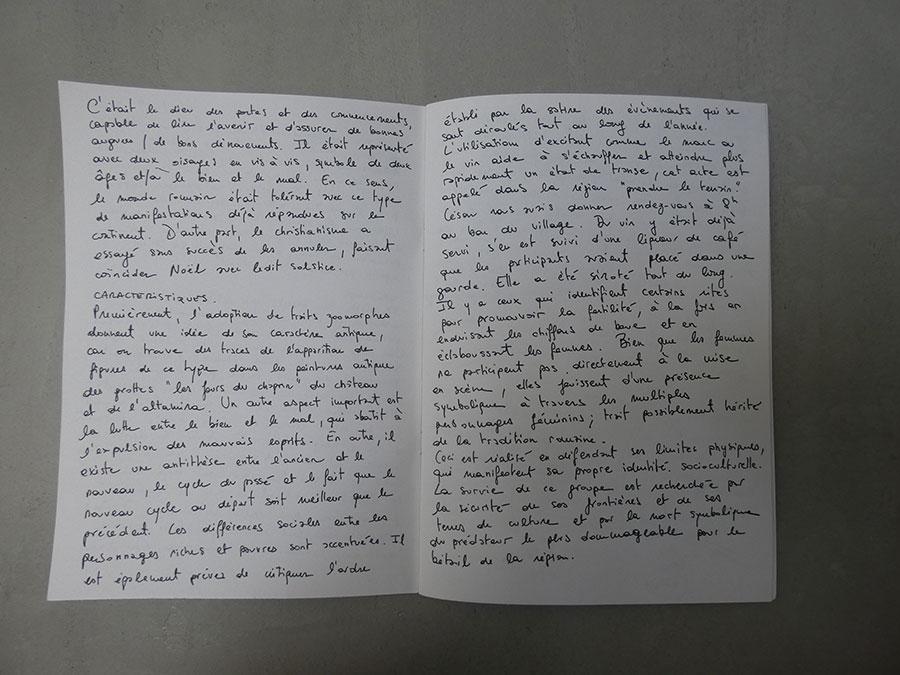
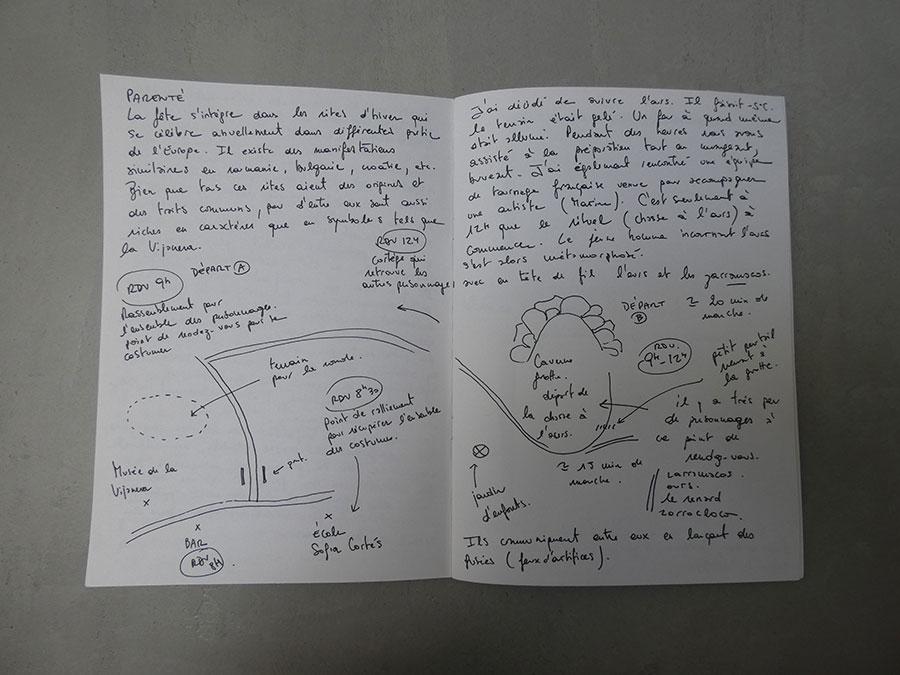
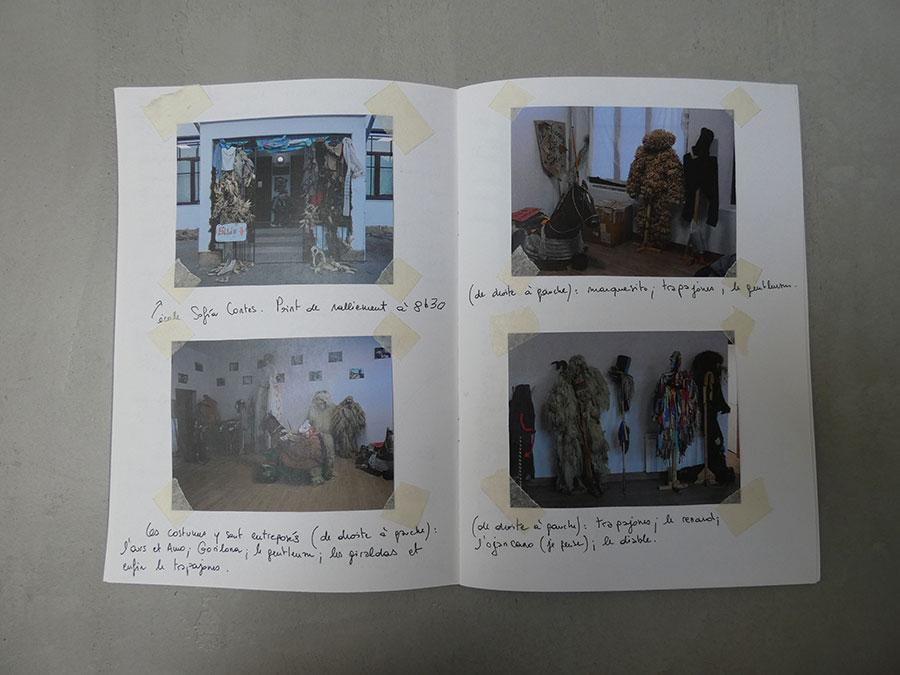
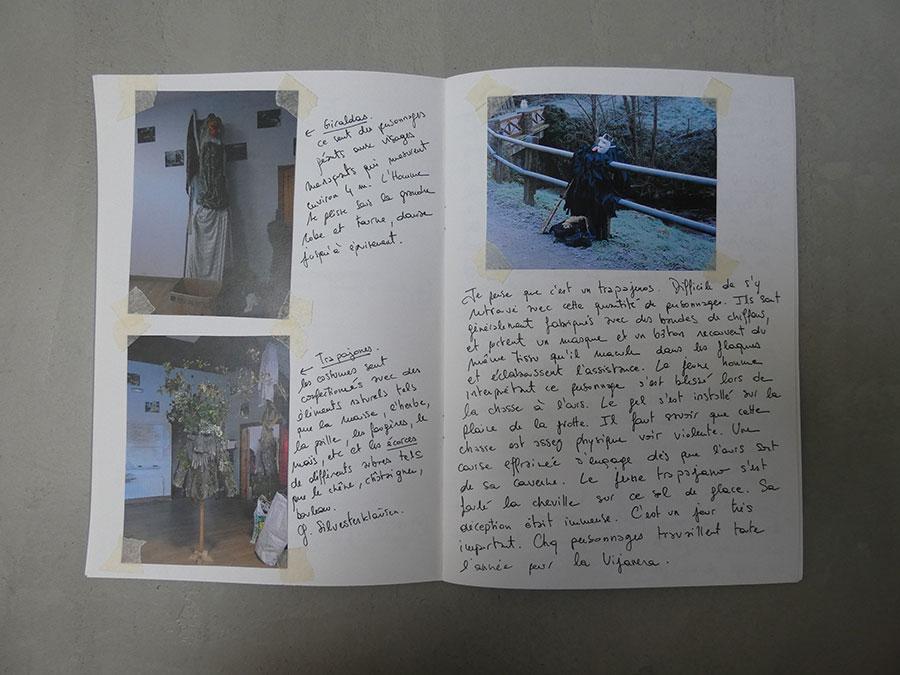
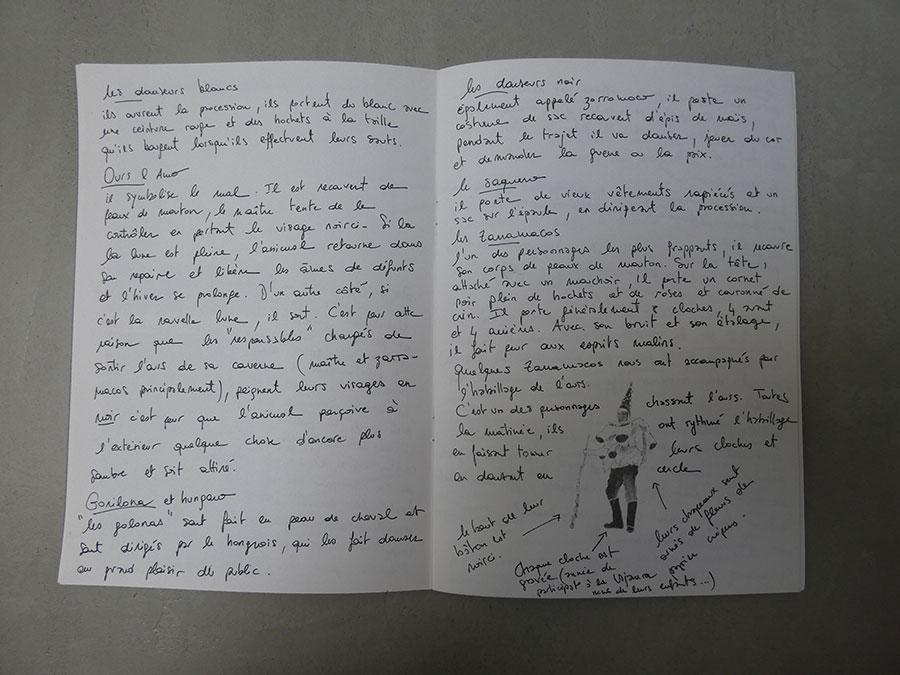
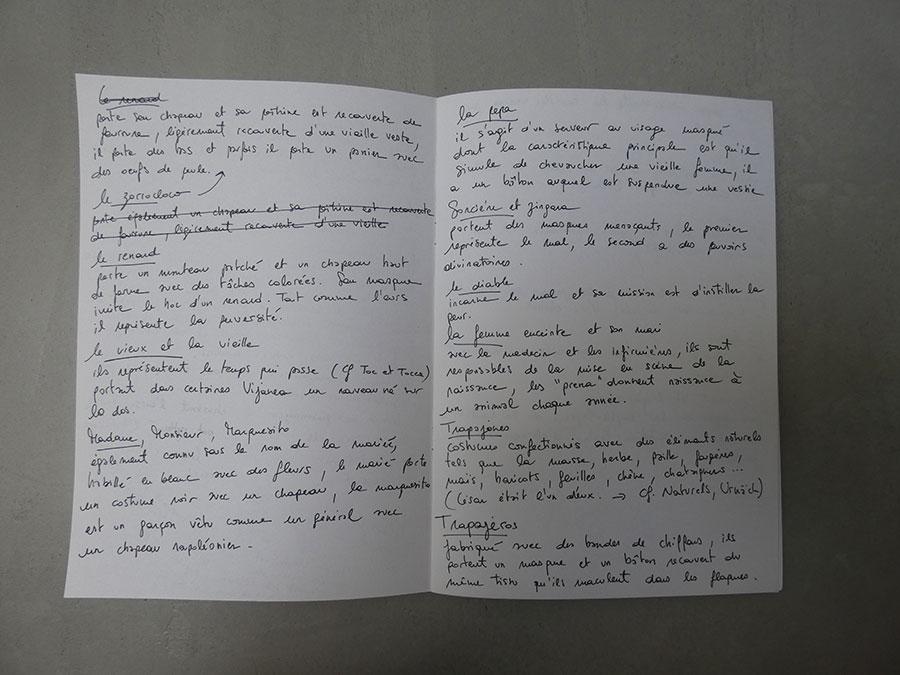
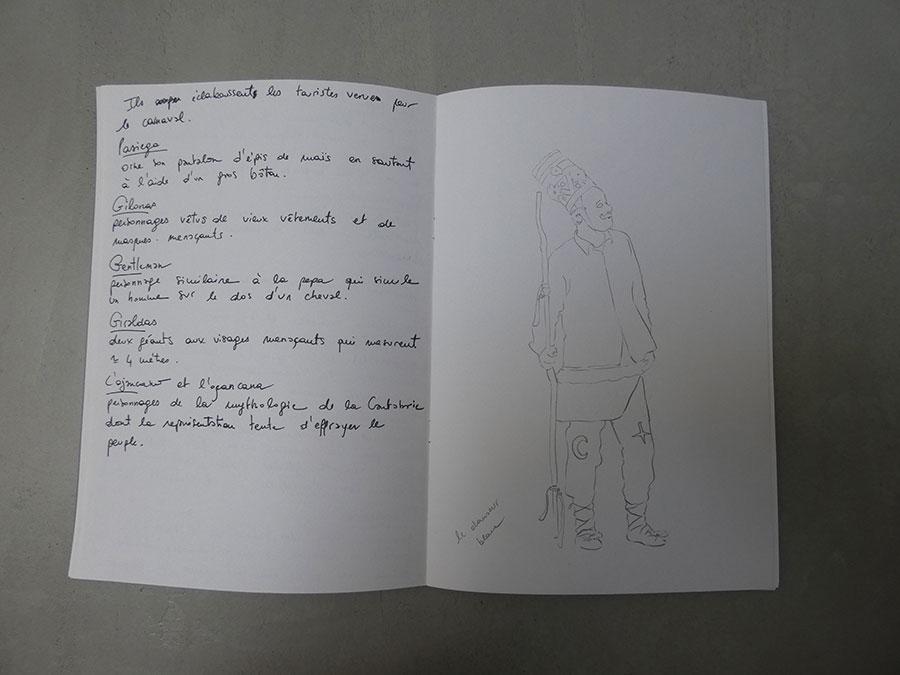
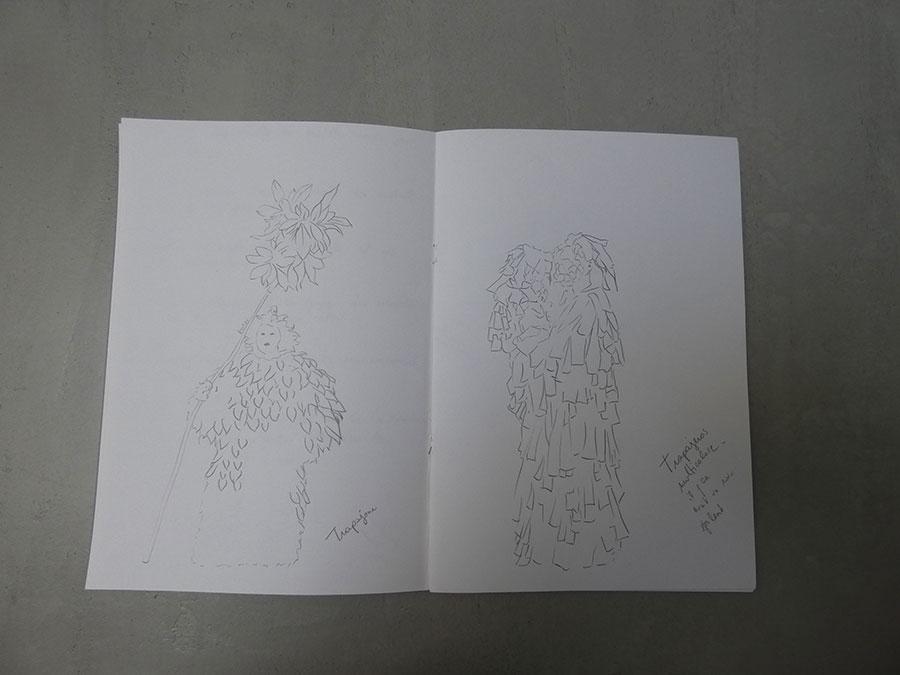
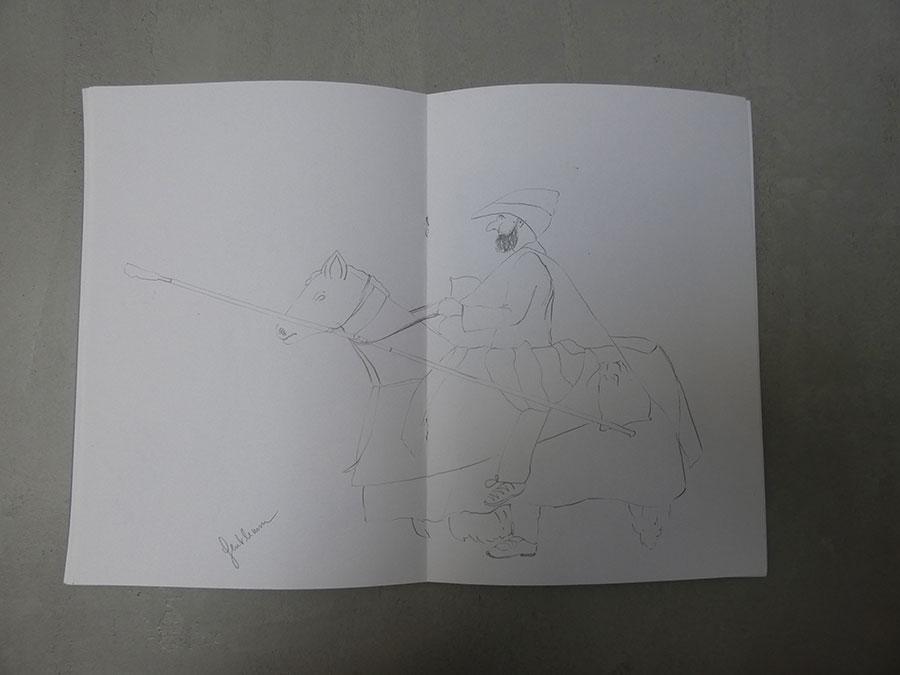
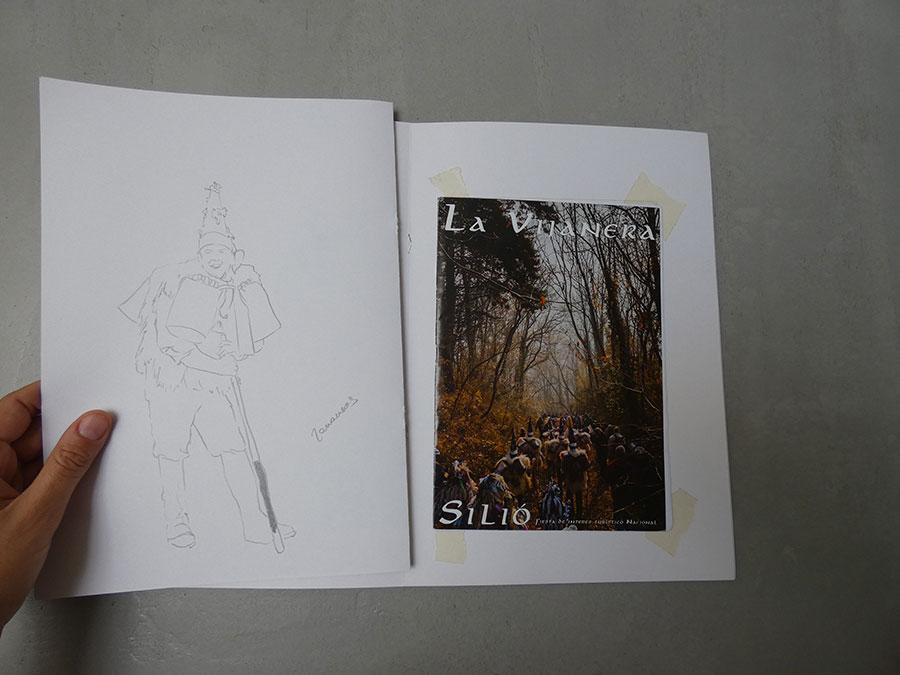
> SWITZERLAND
January 13 / Urnäsch, Switzerland/ Schöne Klause, Silvesterchlausen / New Year Festival. Participants go from farm to farm with good wishes for families to make their year a prosperous one. They Yodel to shoo evil spirits.
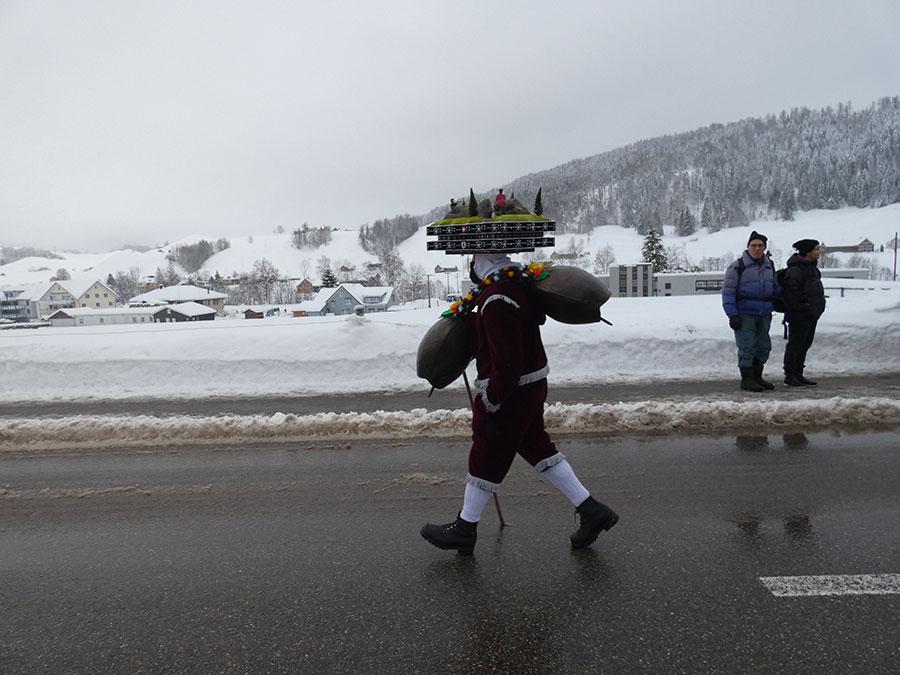
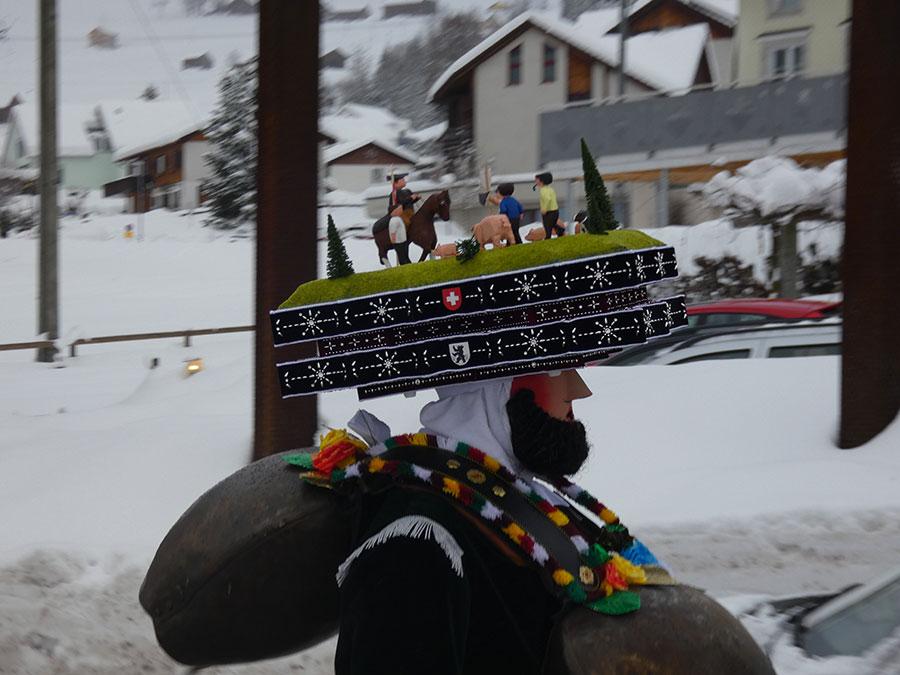
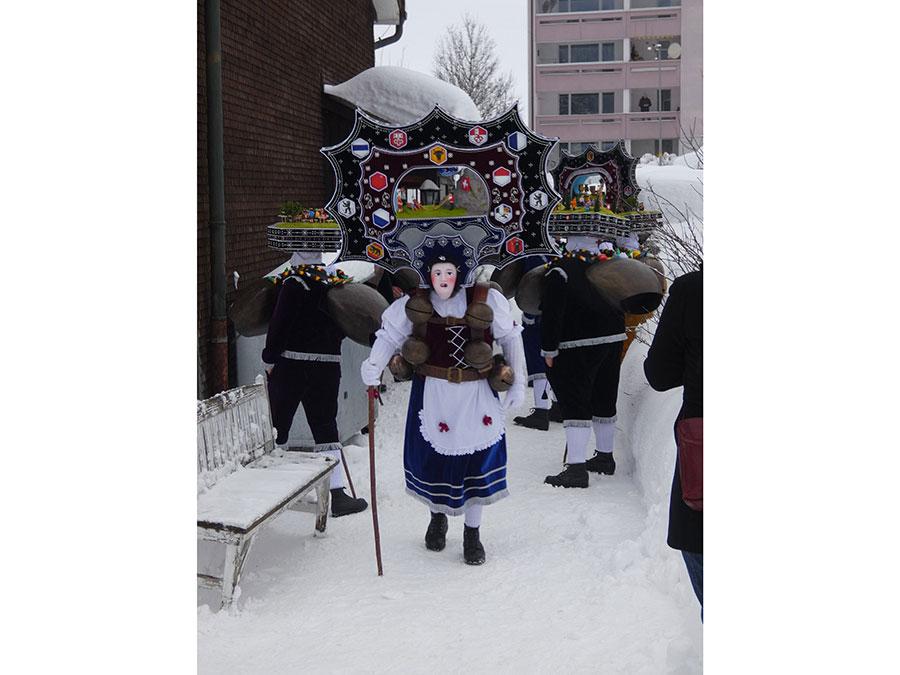

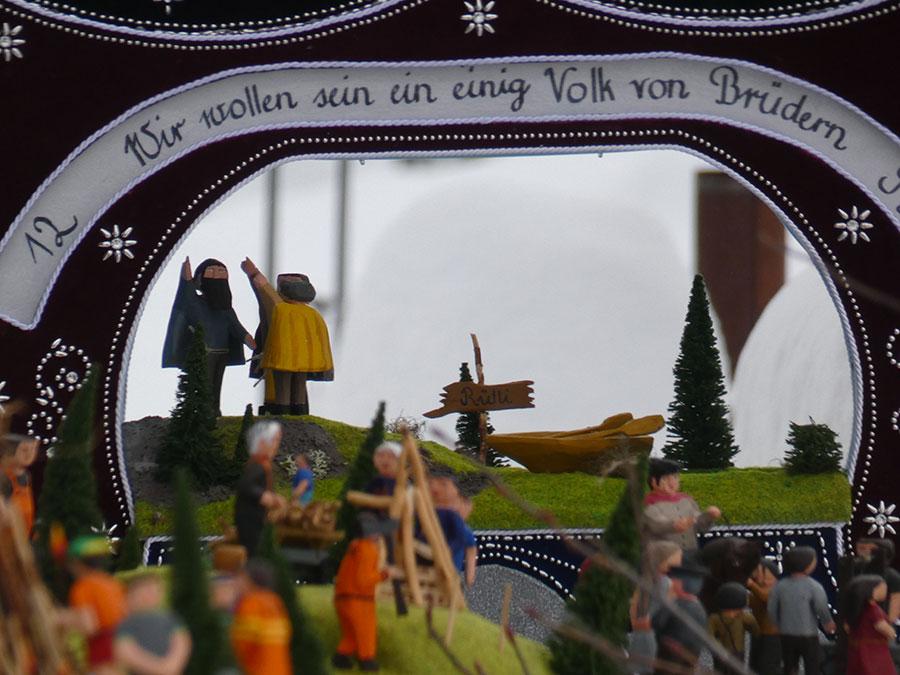
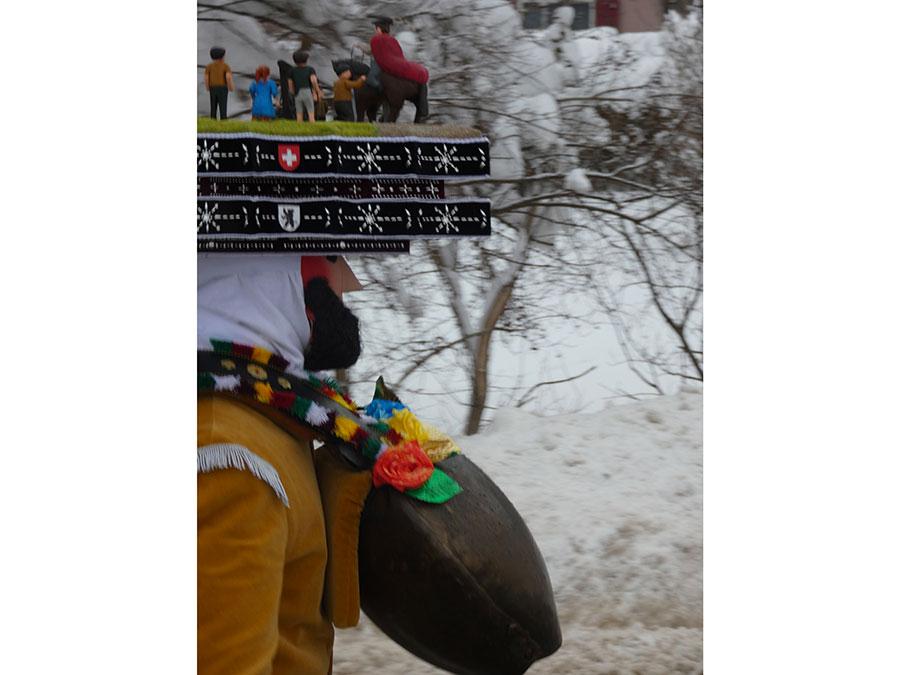
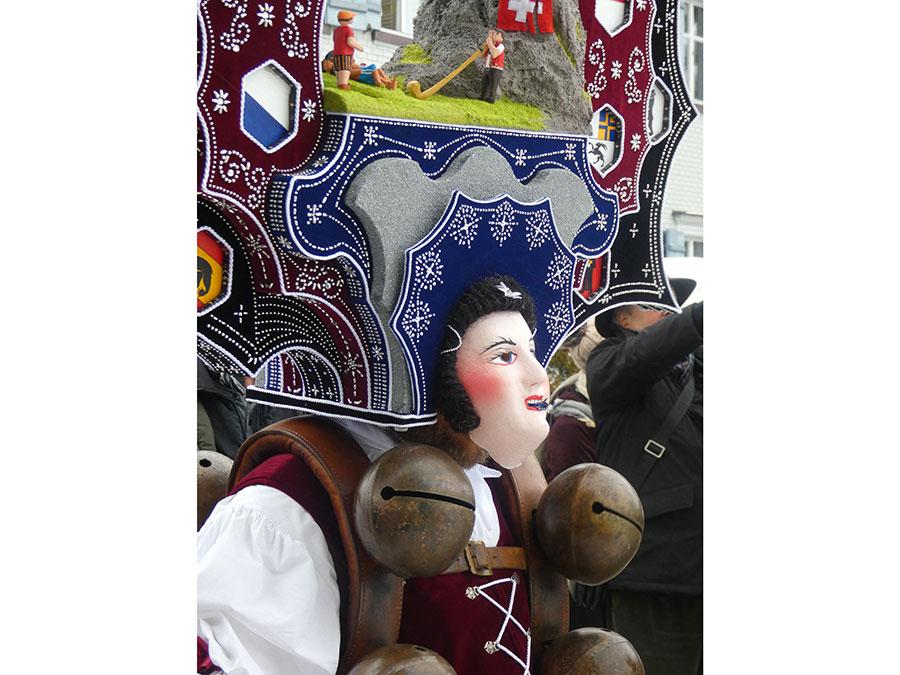
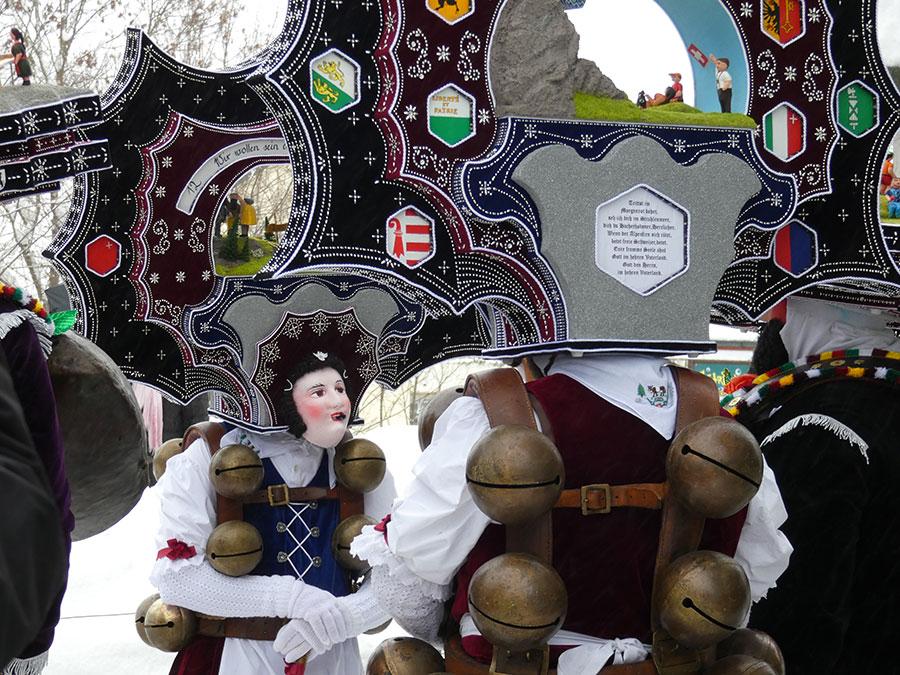
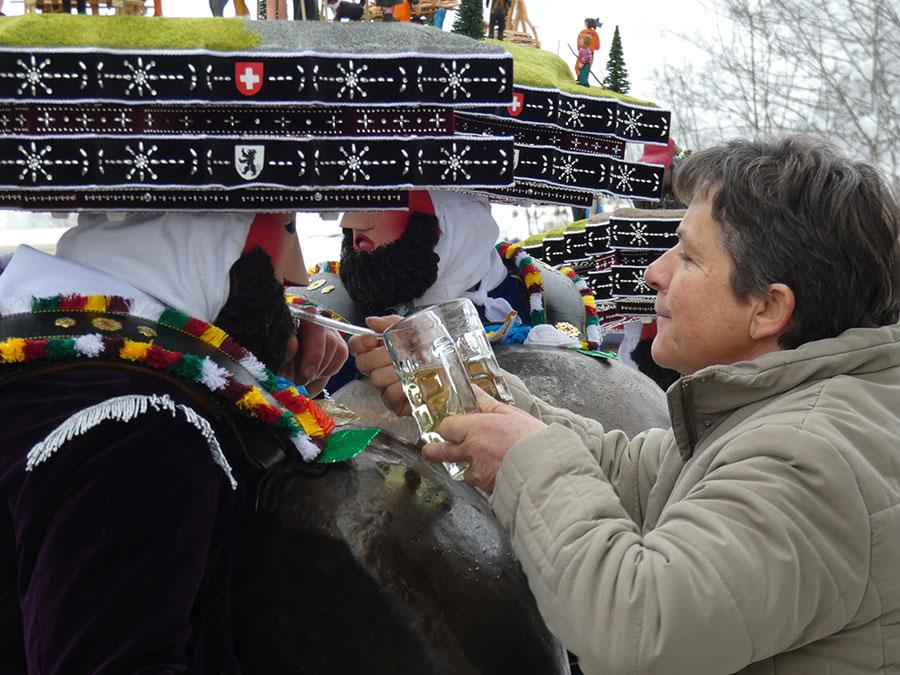
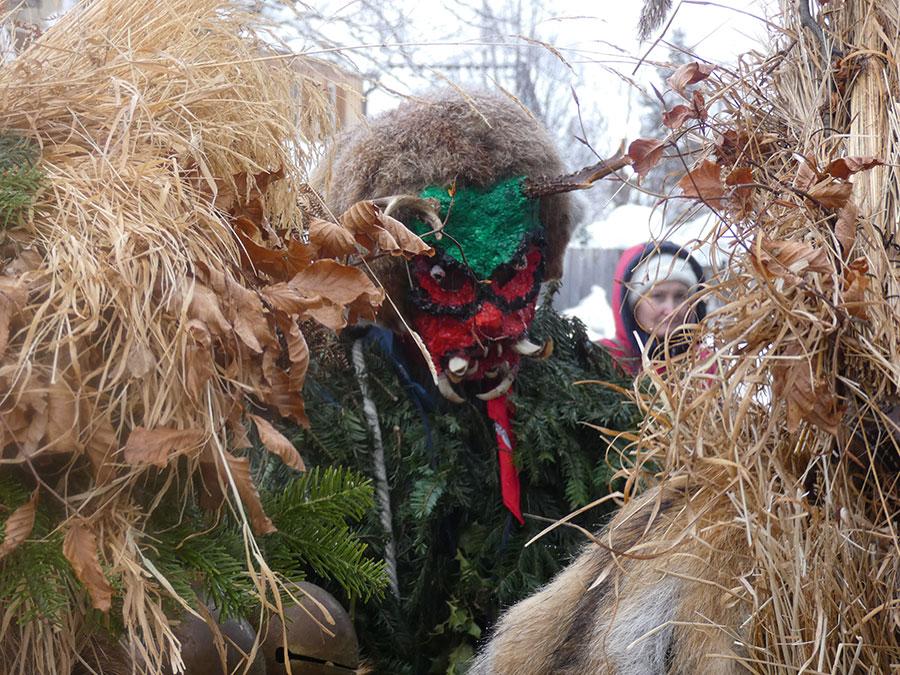


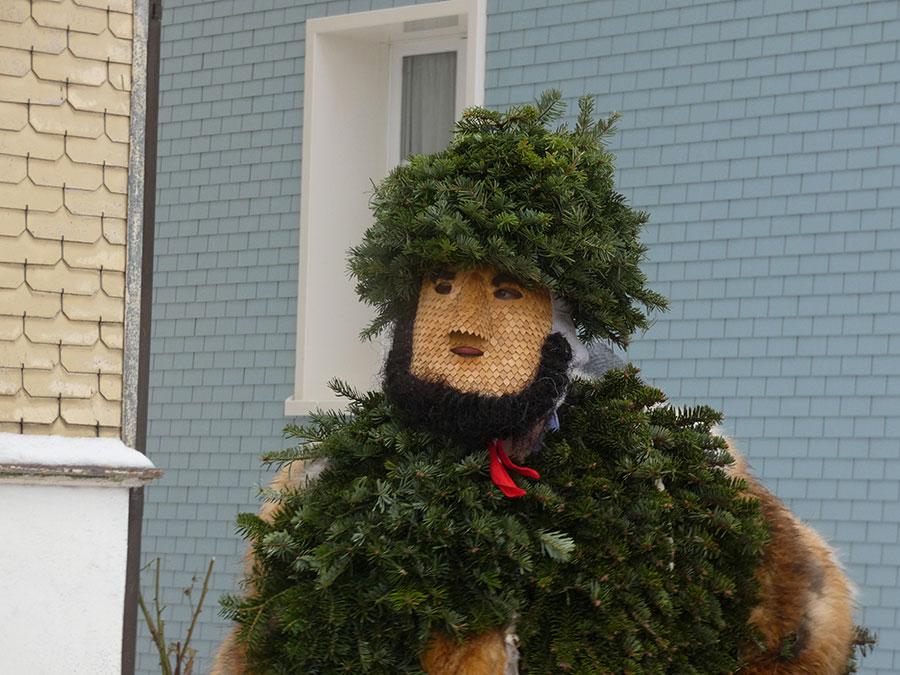

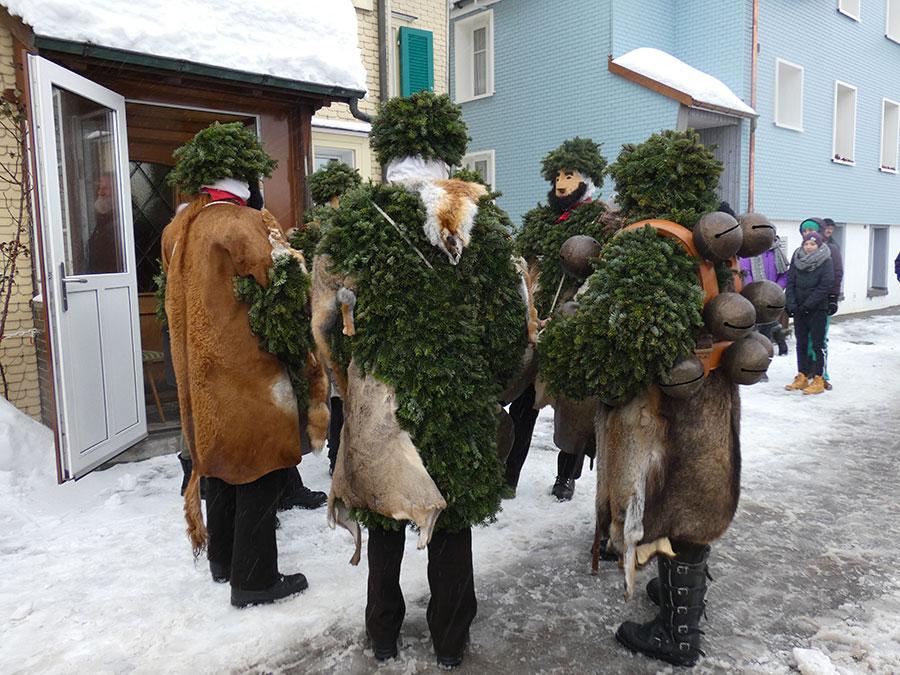
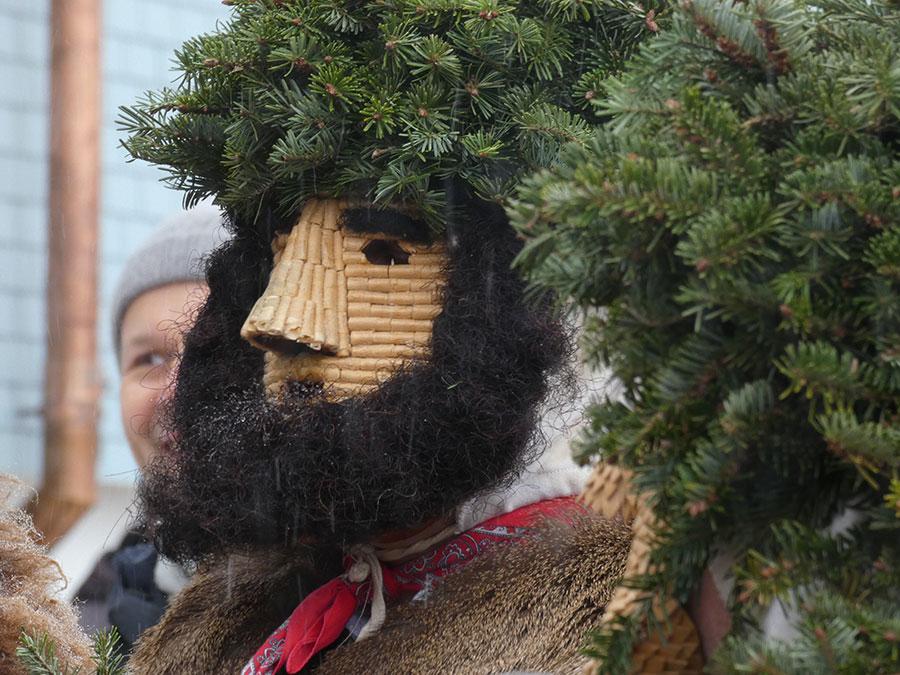
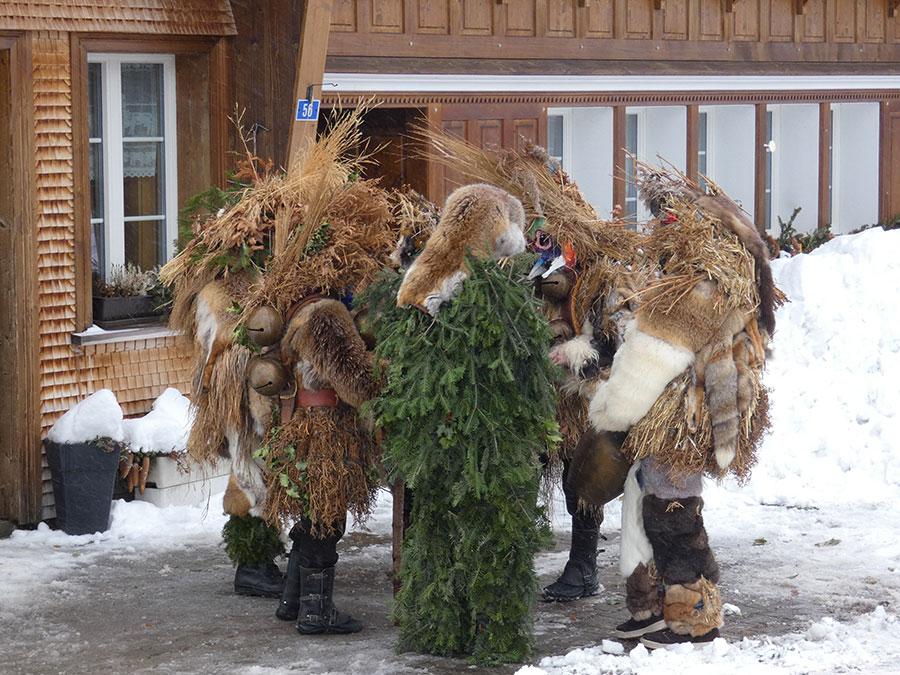
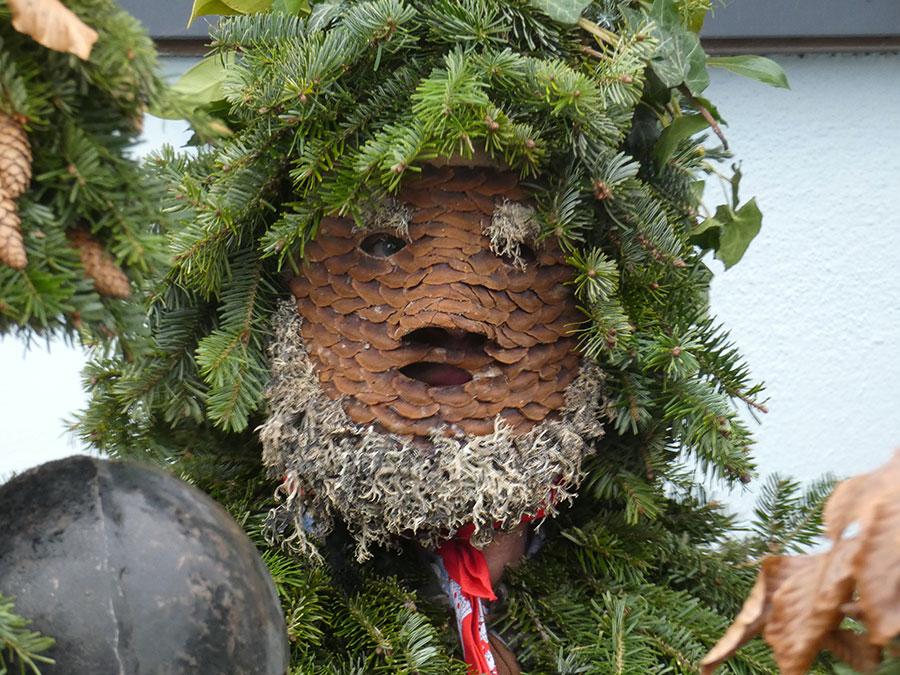
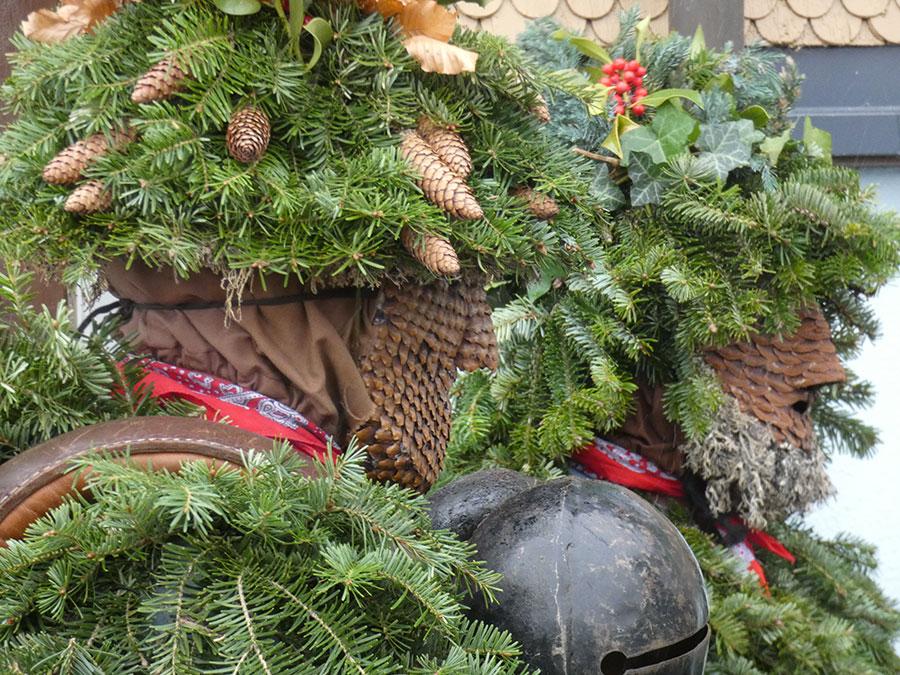
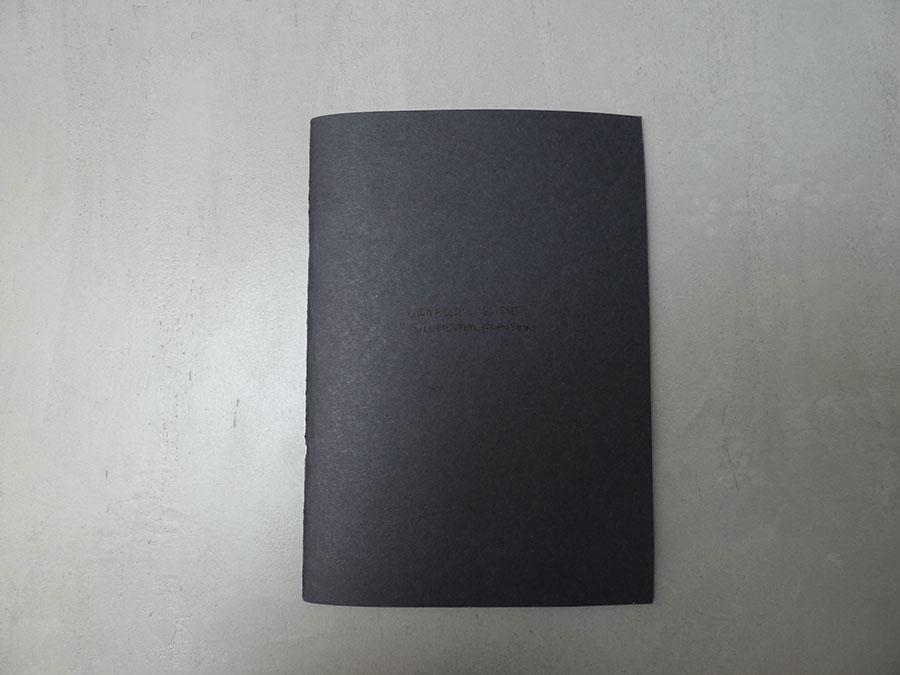
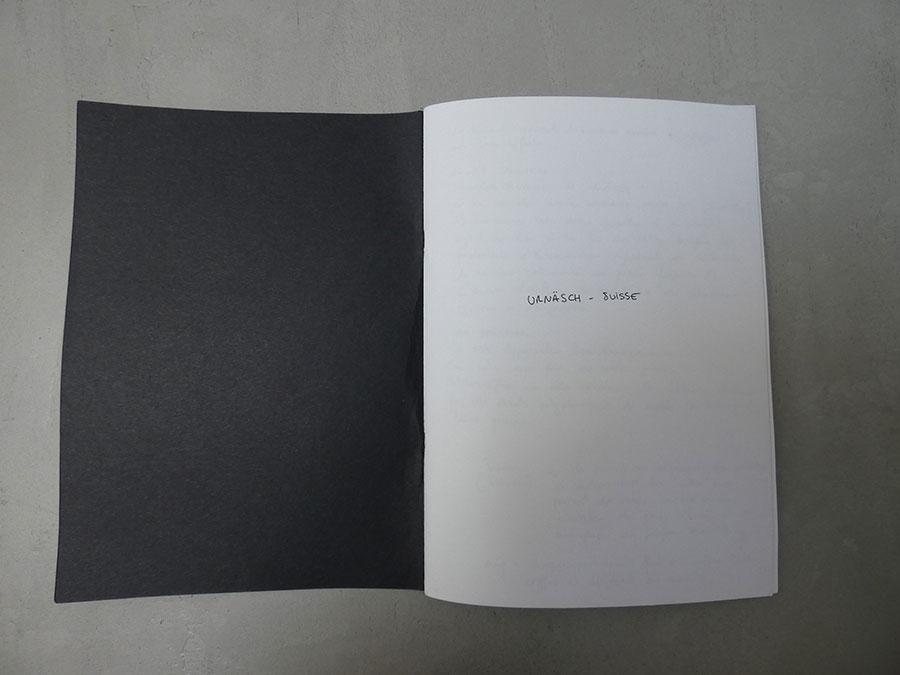
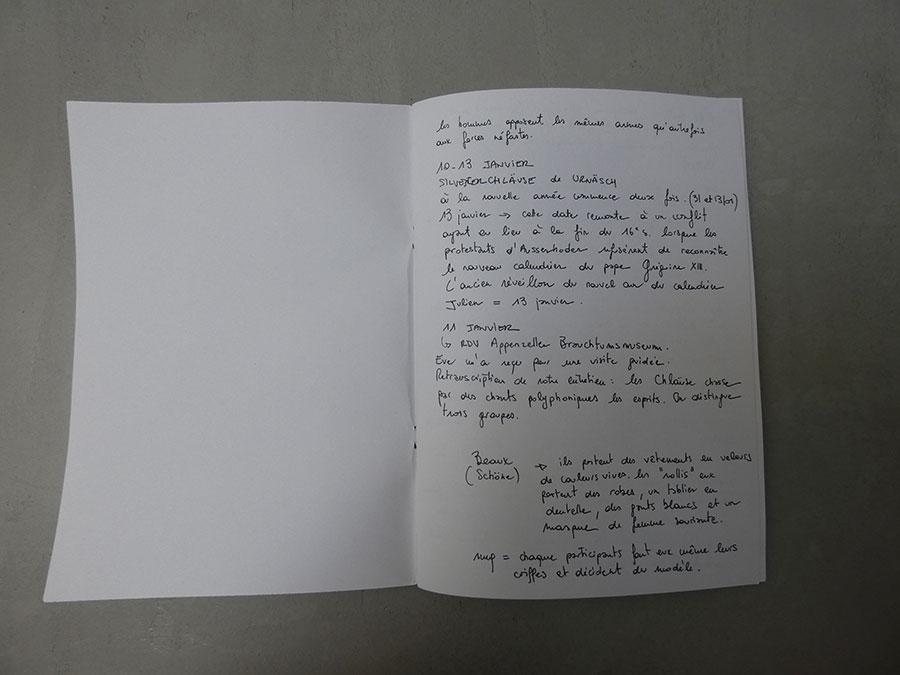
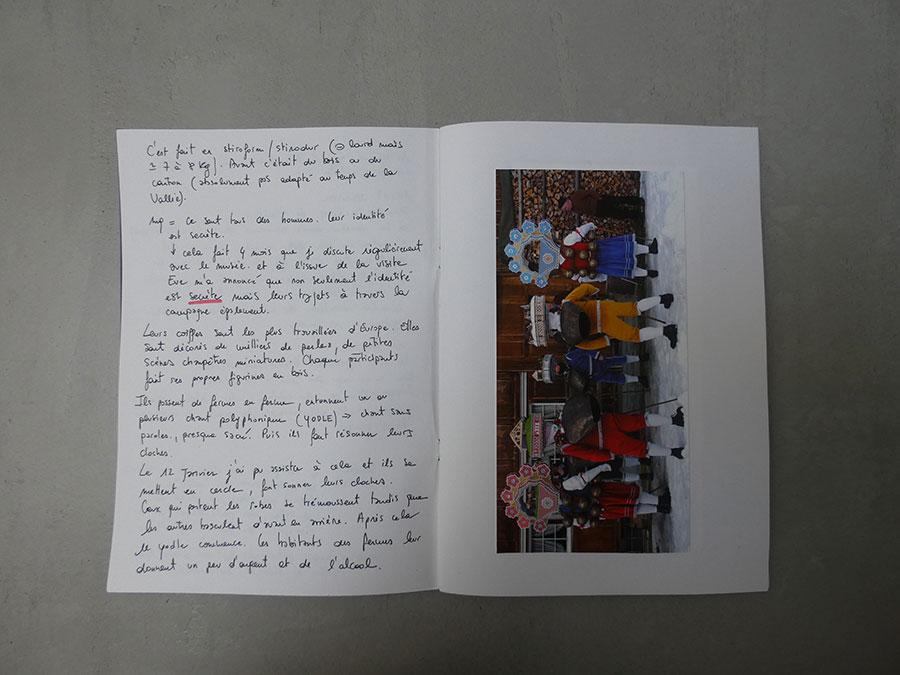
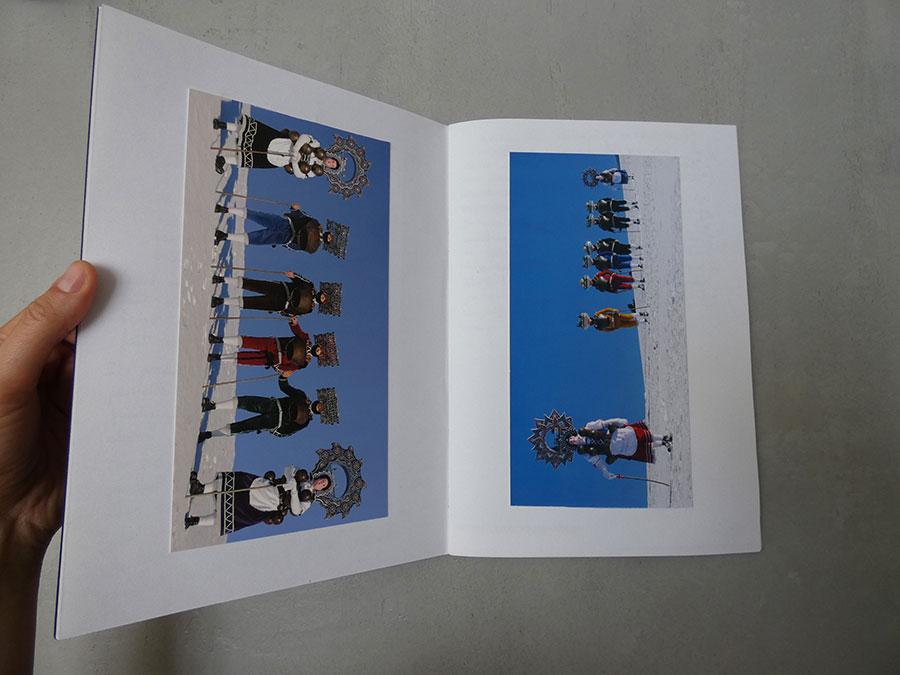

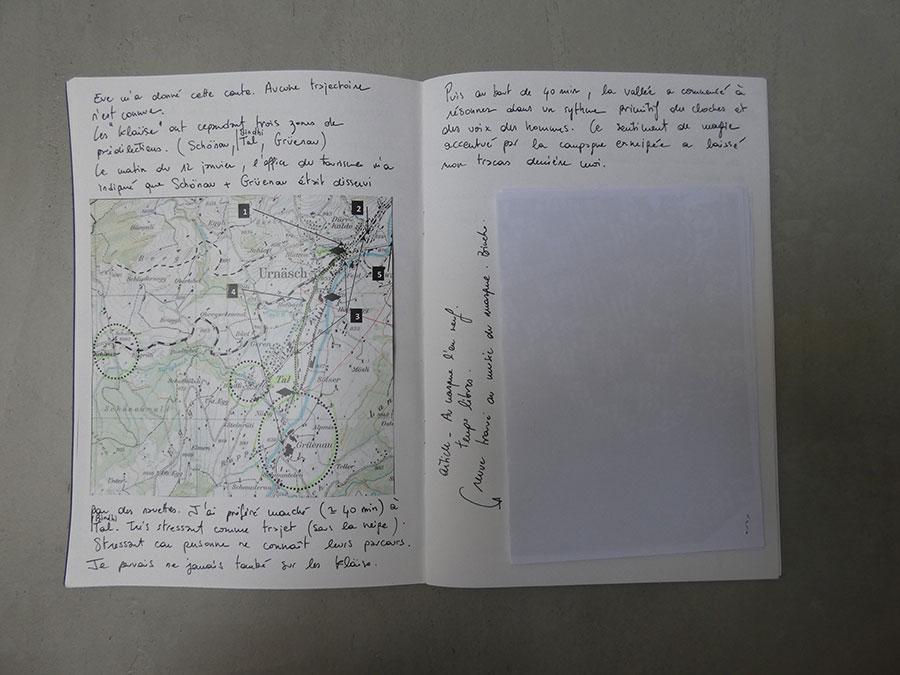
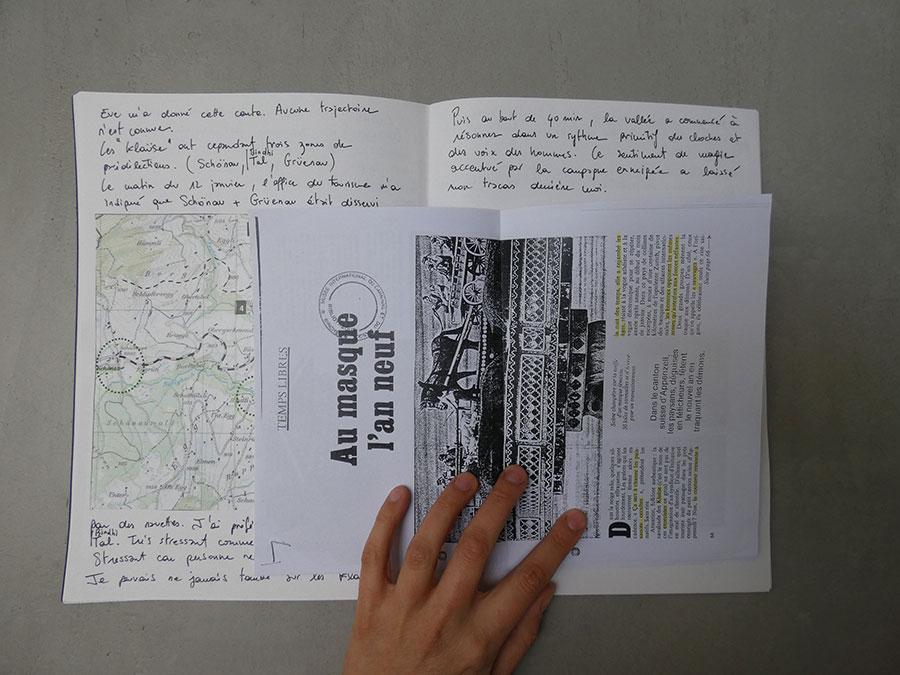
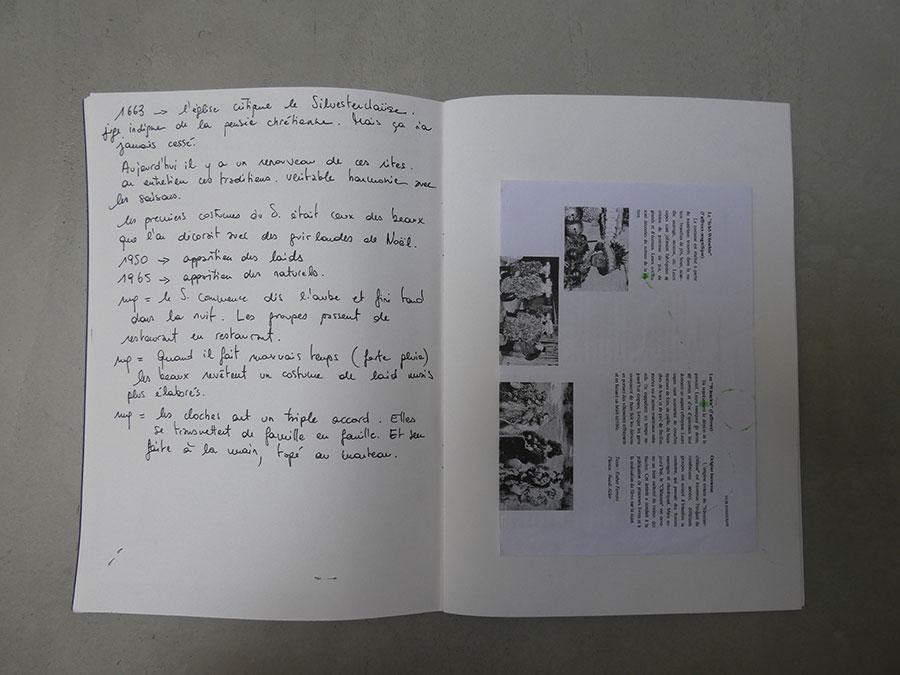

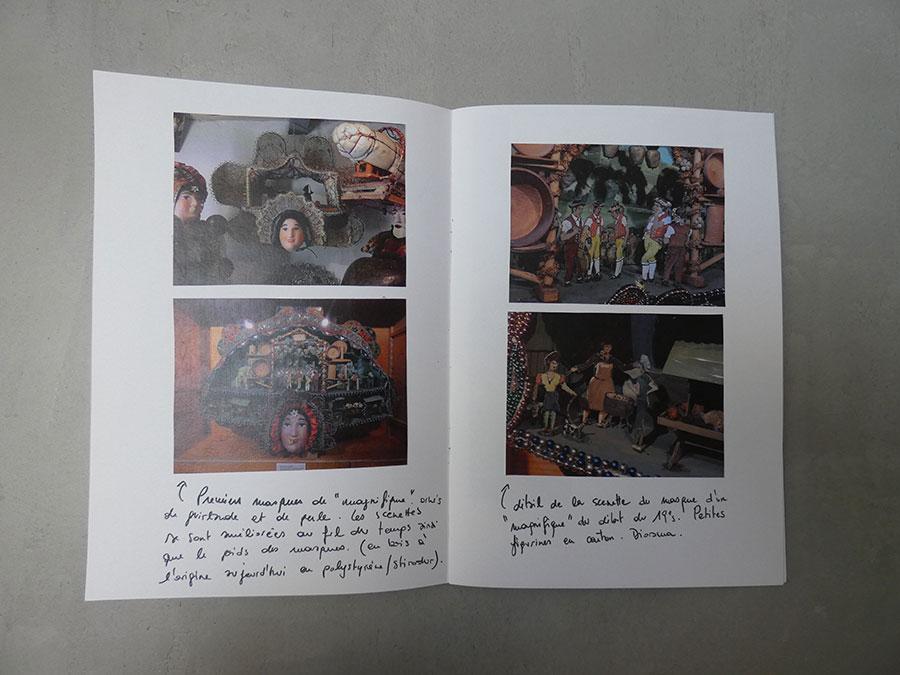
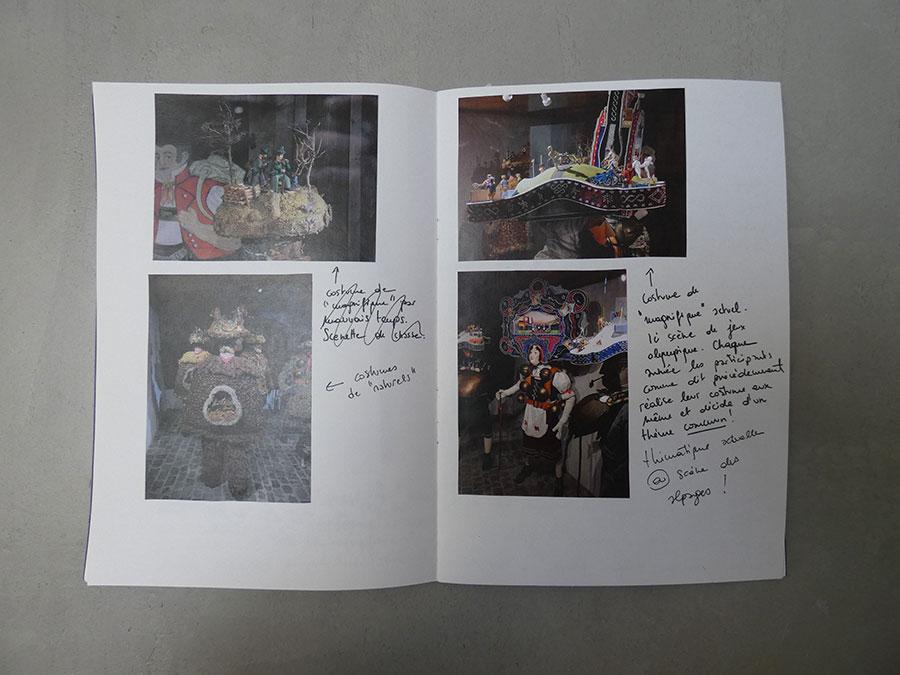
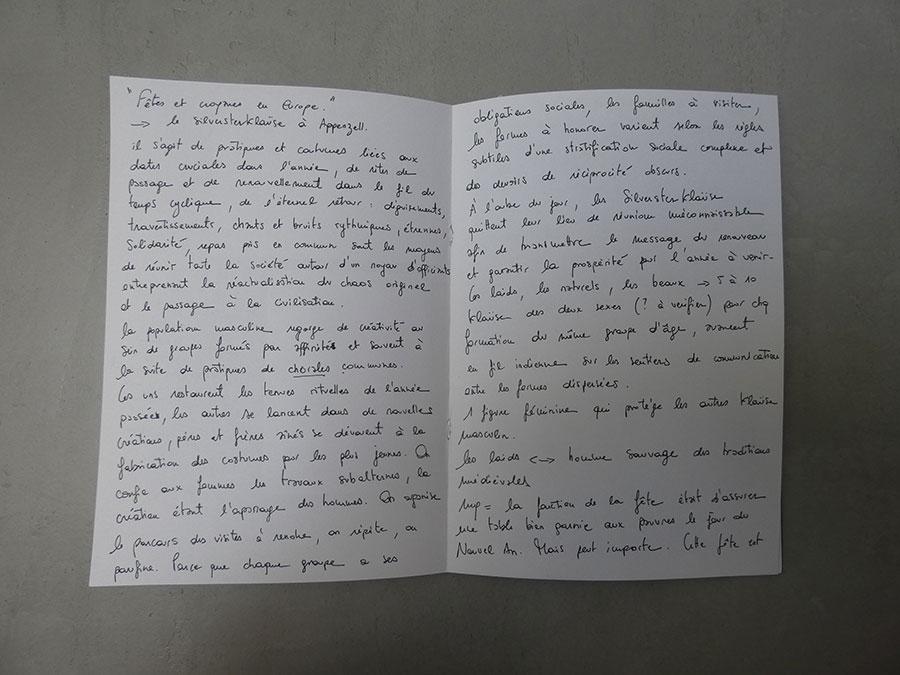
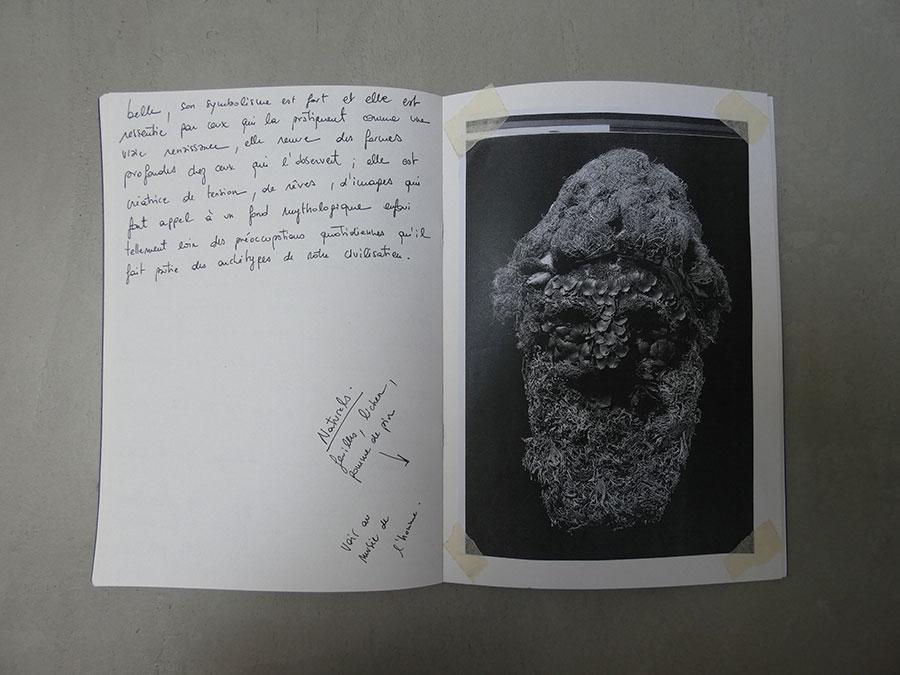
> ITALY
February 9/ Allein, Aoste Valley, Italy / La Coumba Freida / Involving chasing off harmful drafts using mule-tail whips.
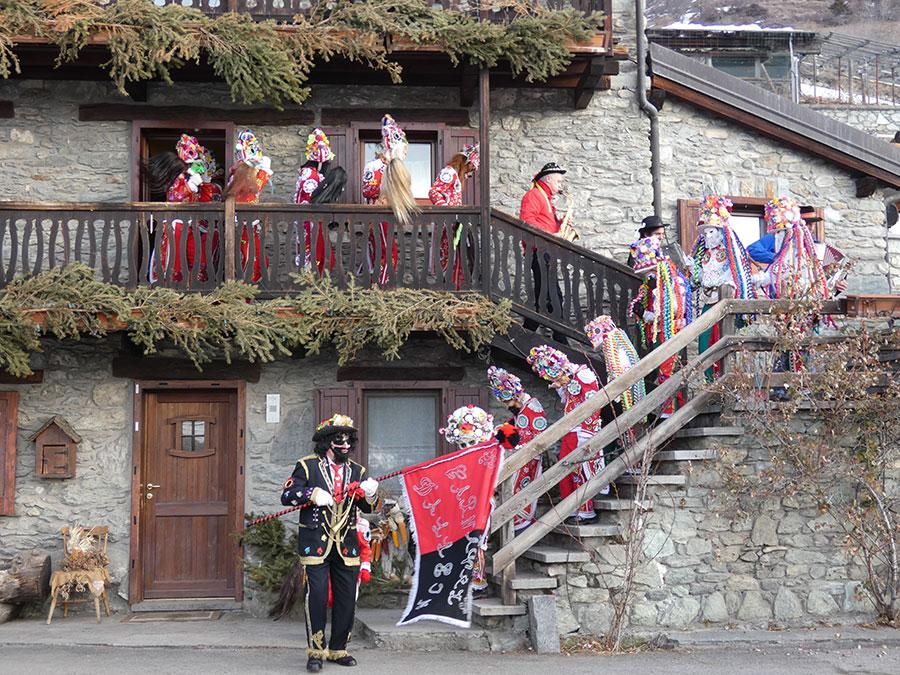
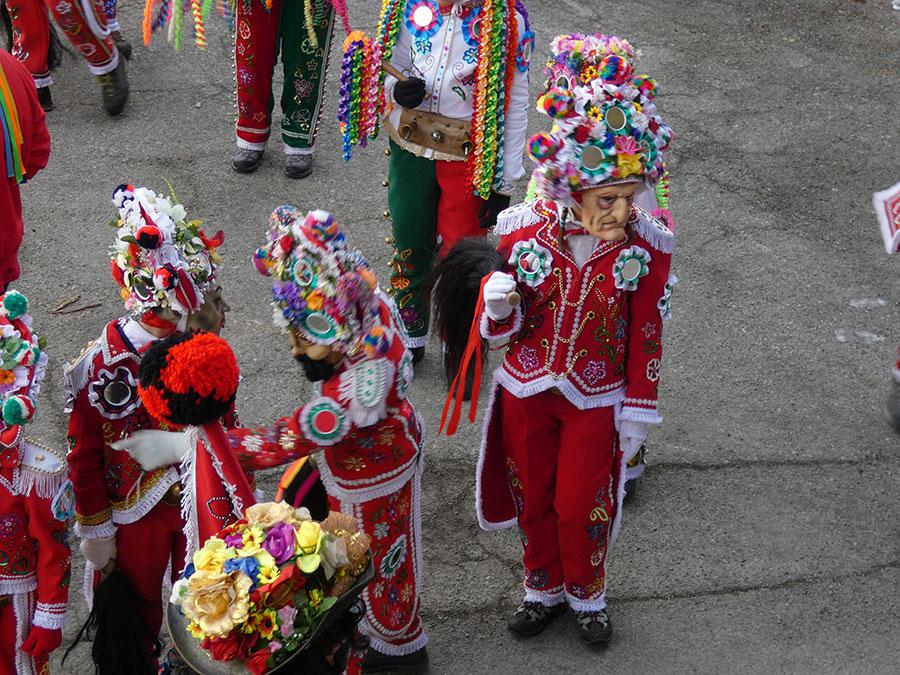
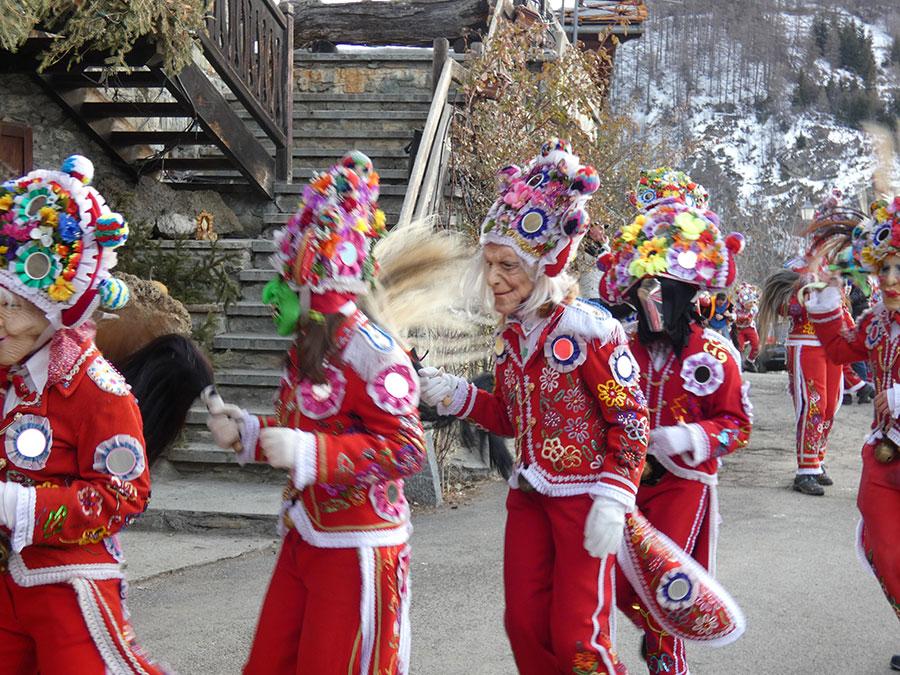
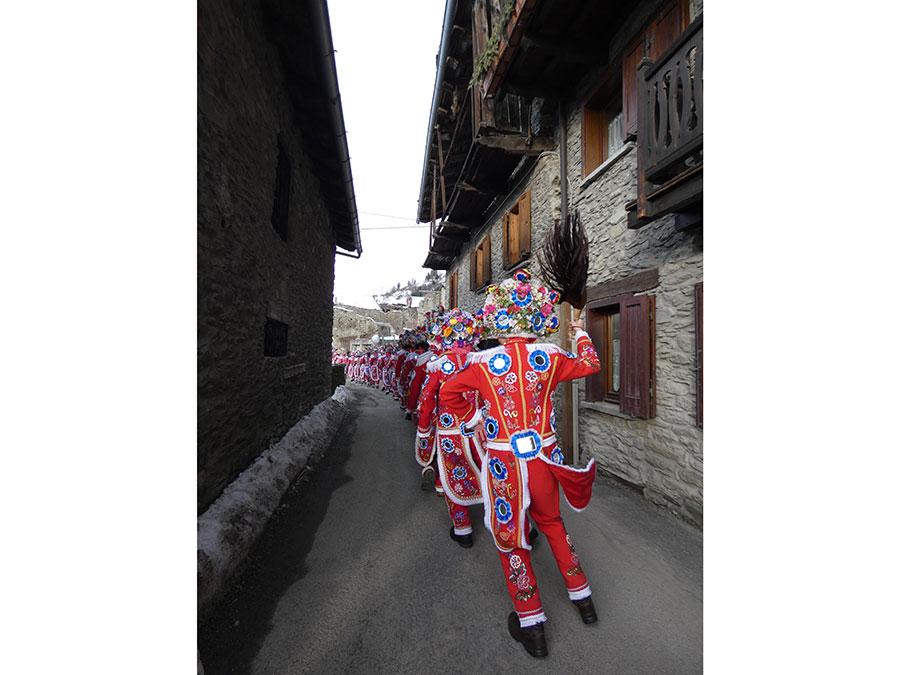
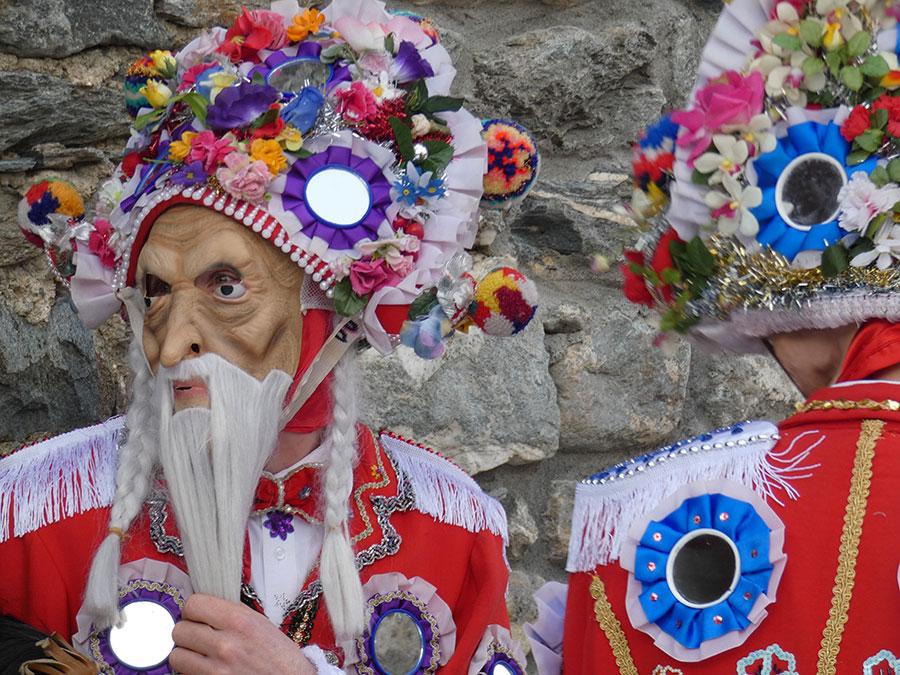
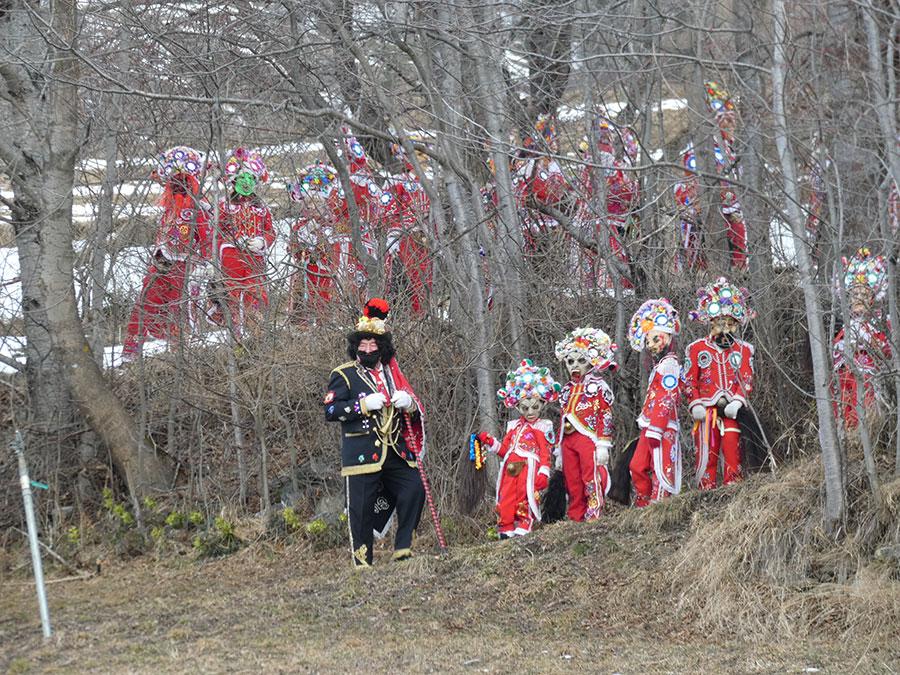
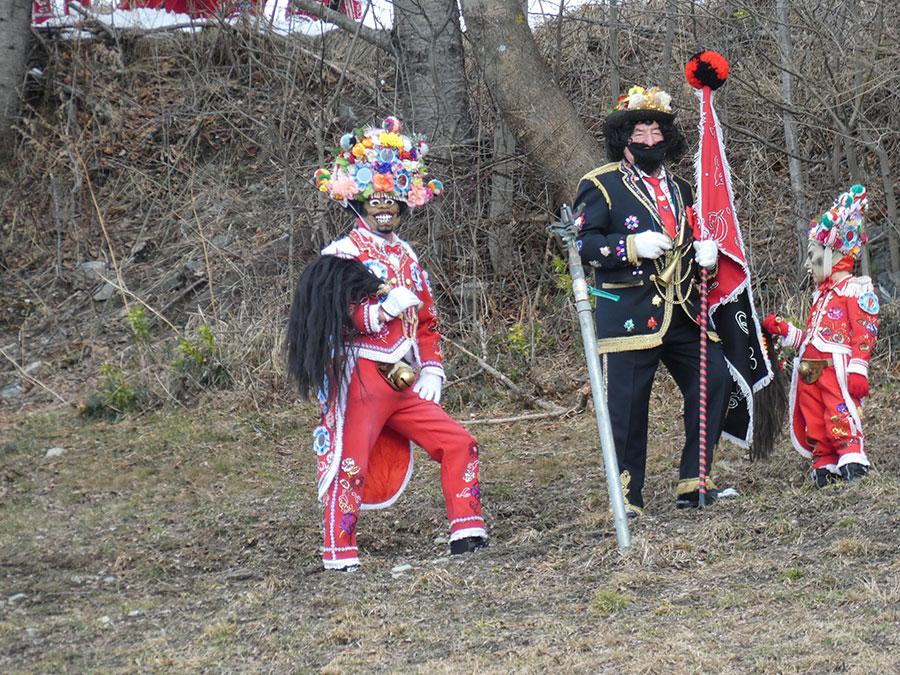

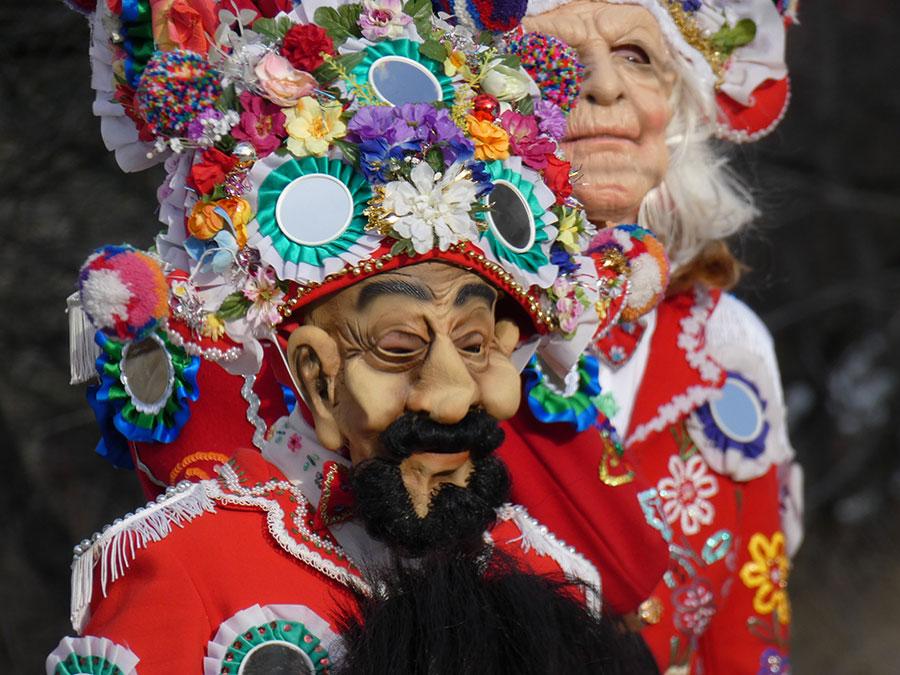
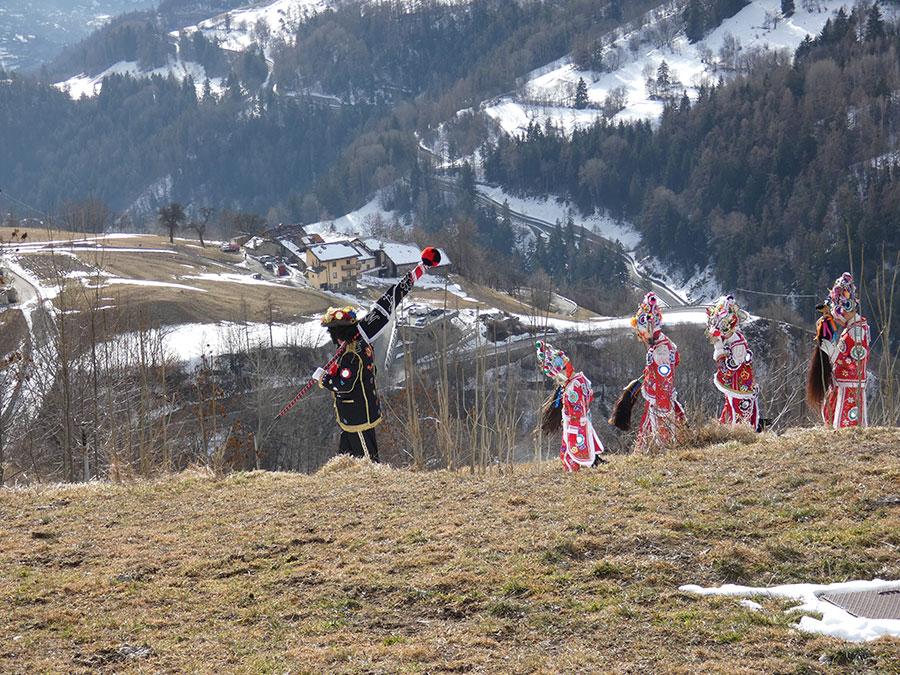
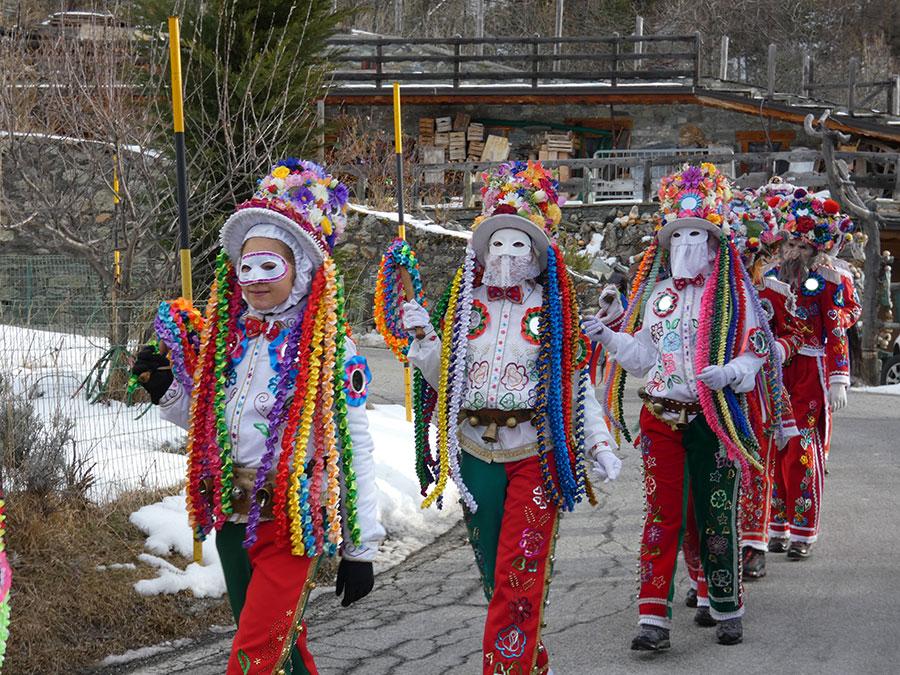
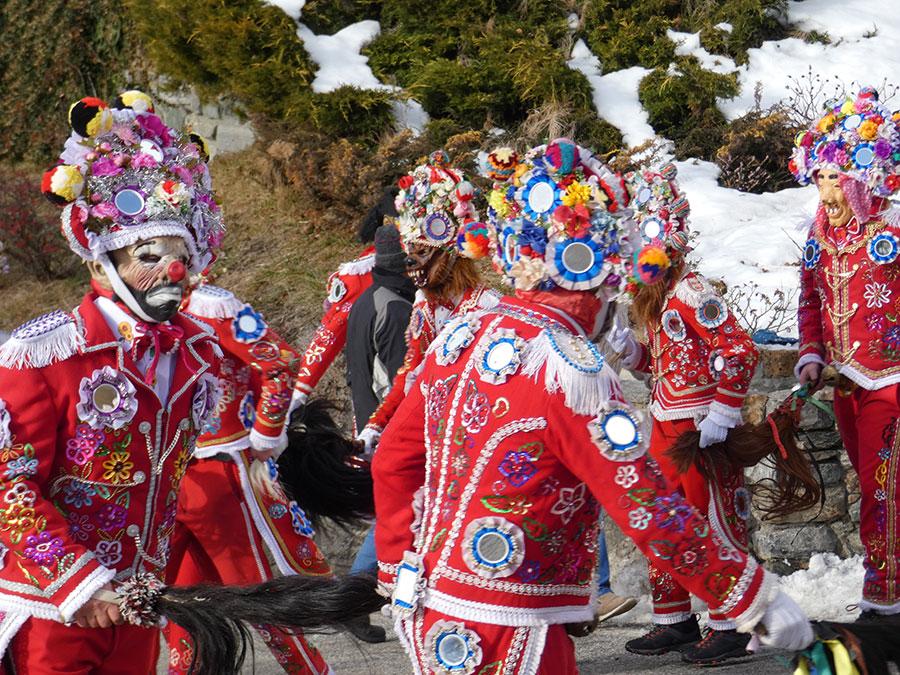
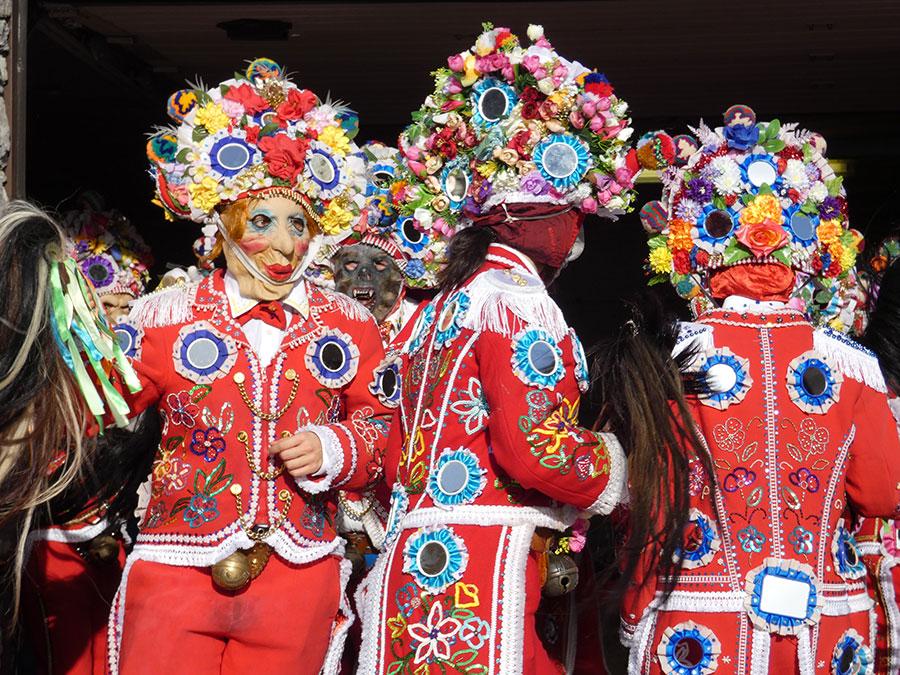
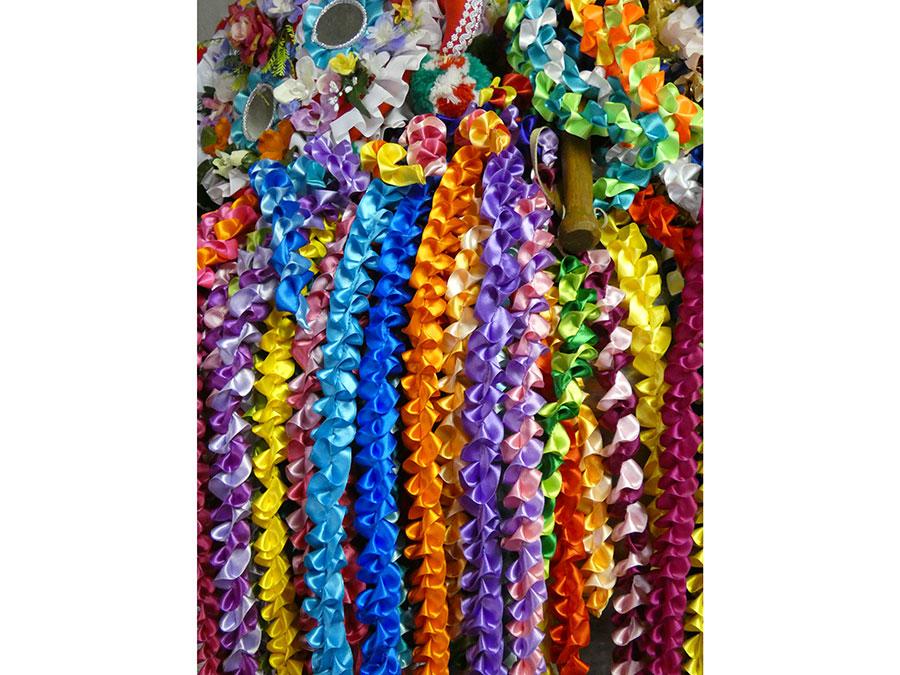
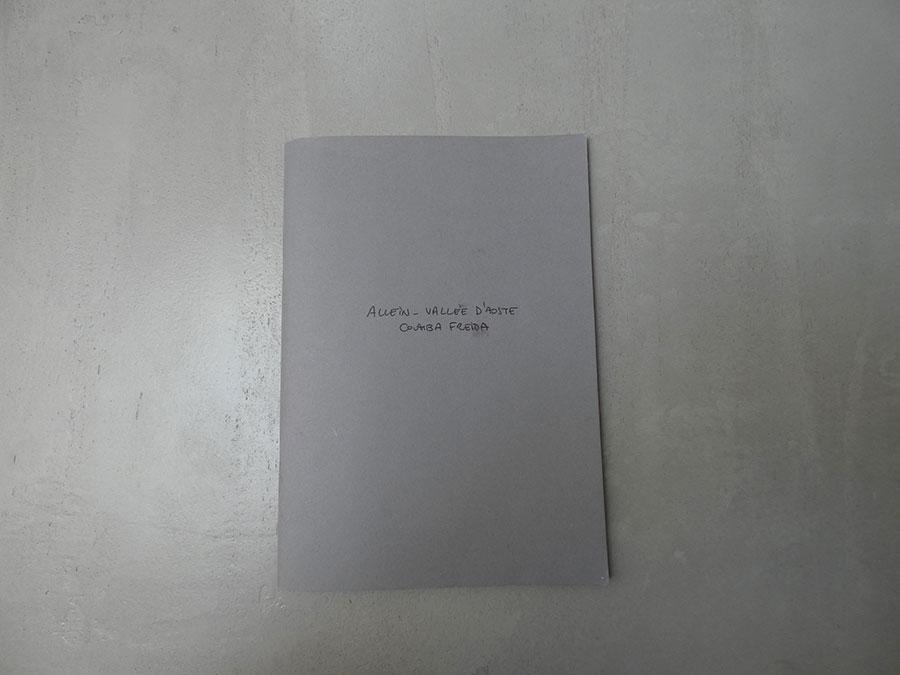
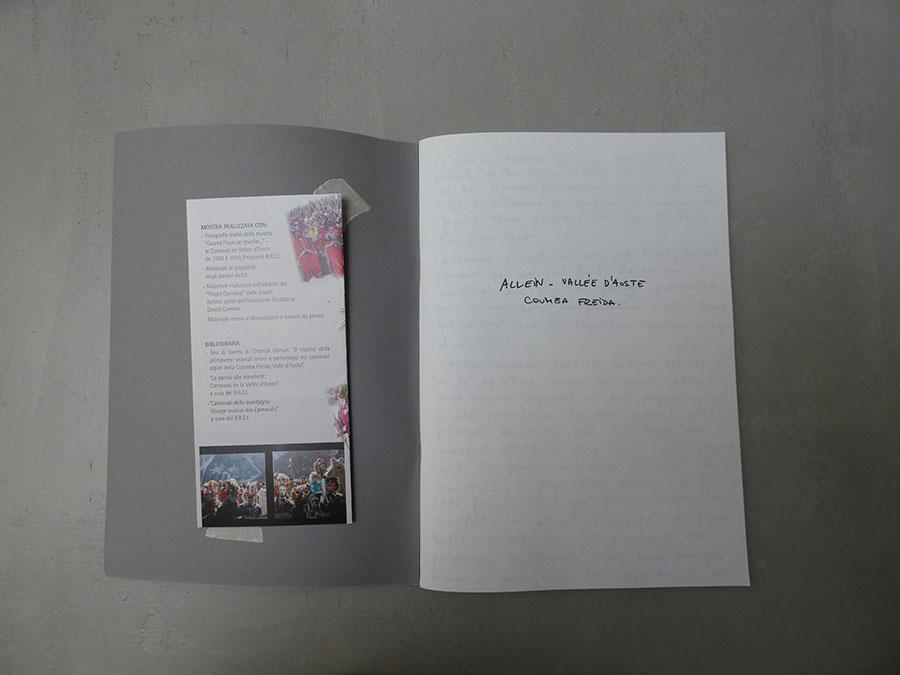
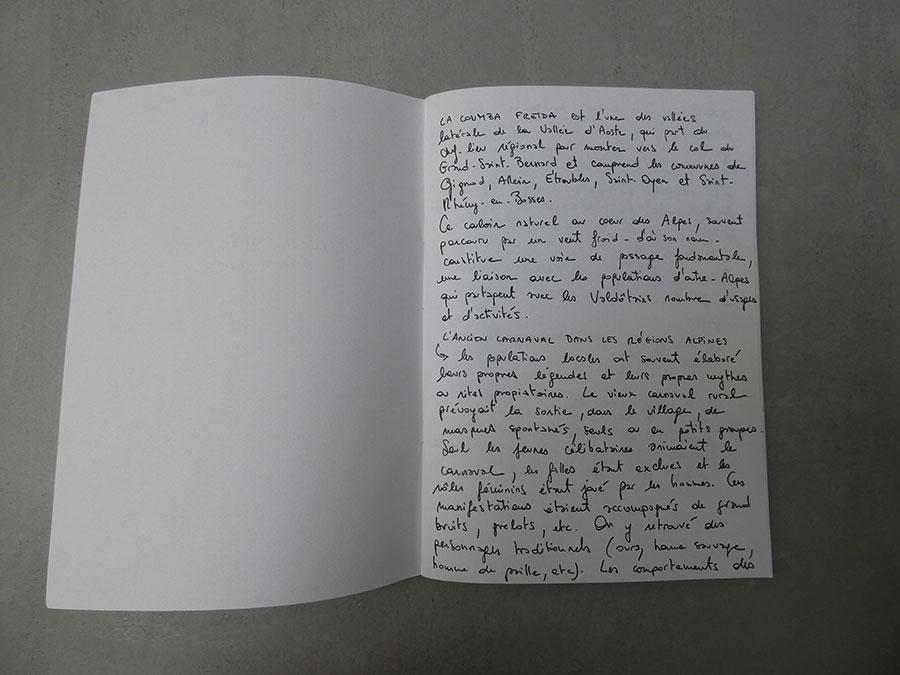

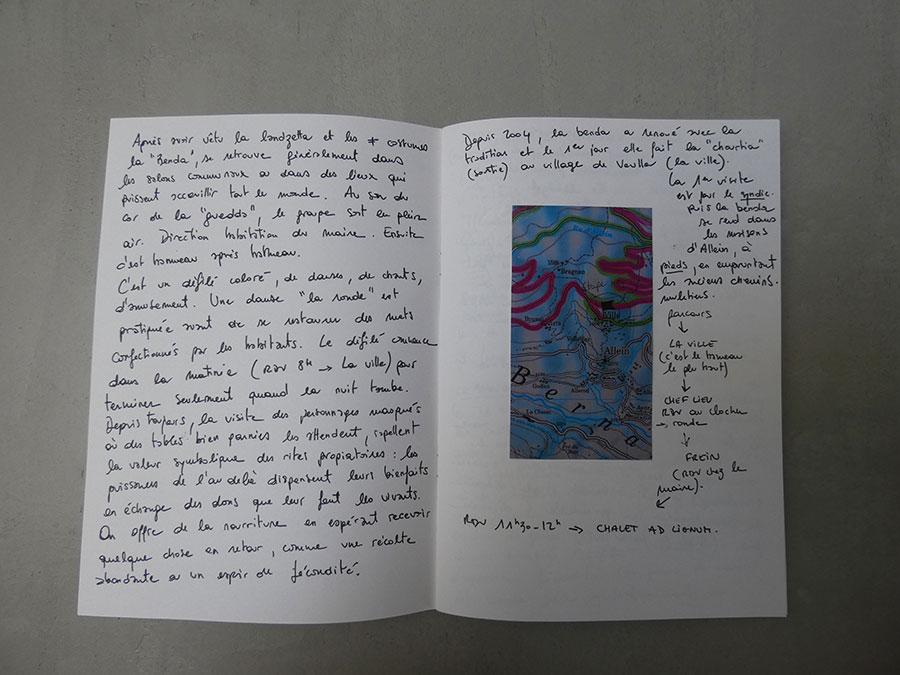

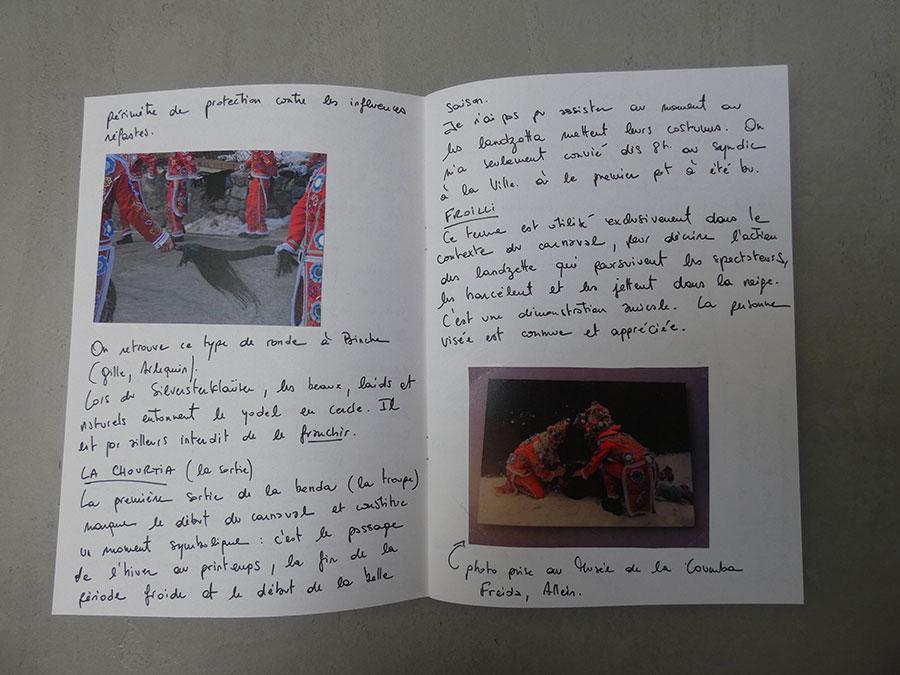
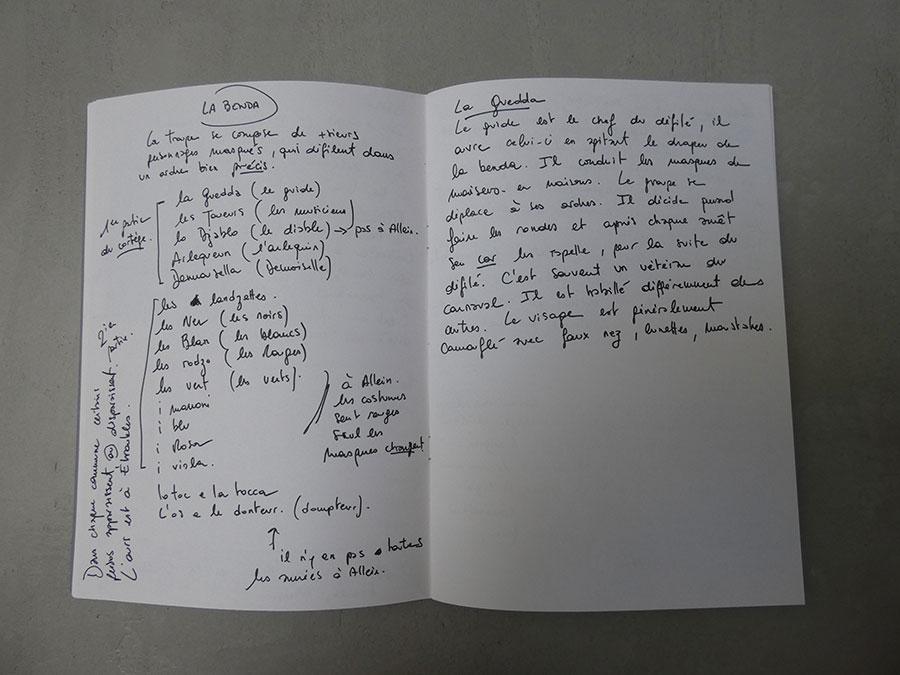
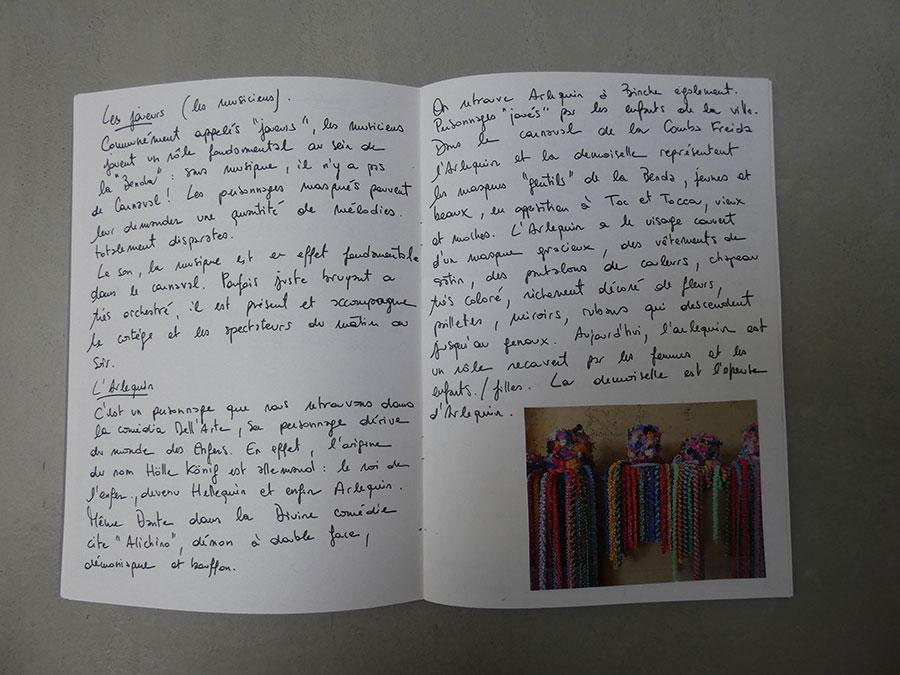
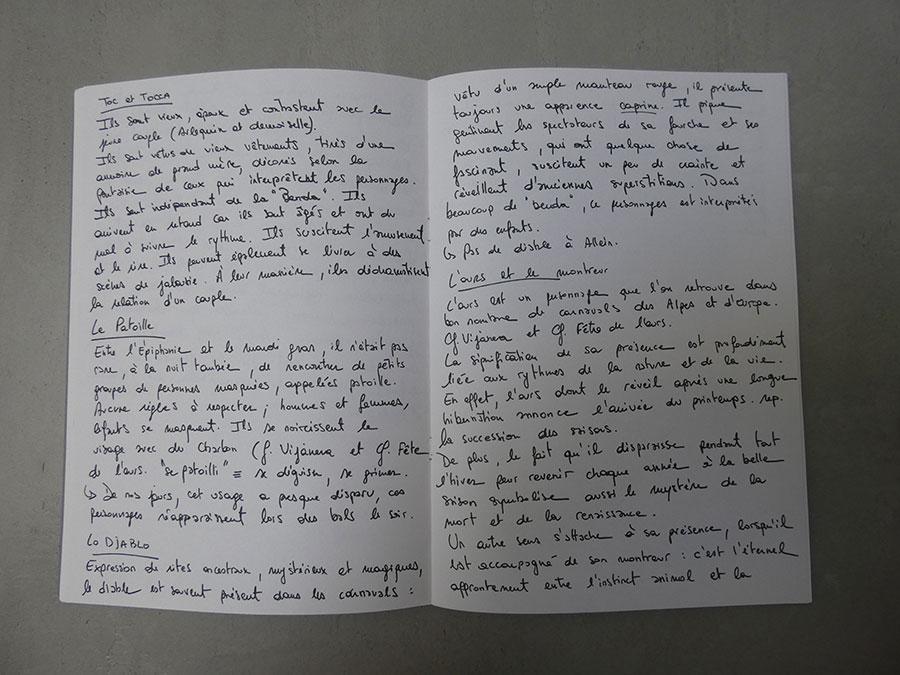
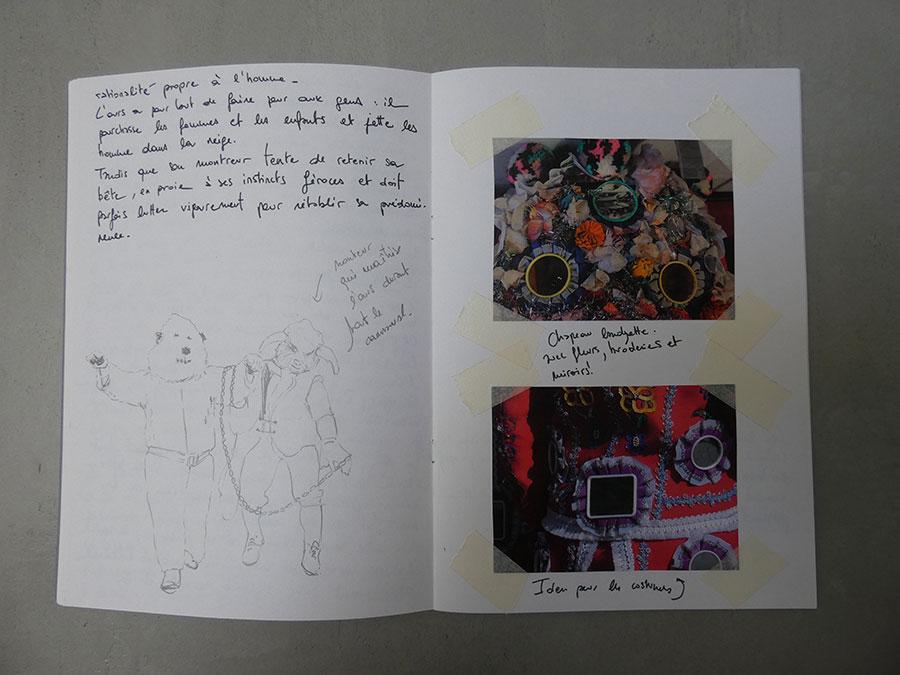
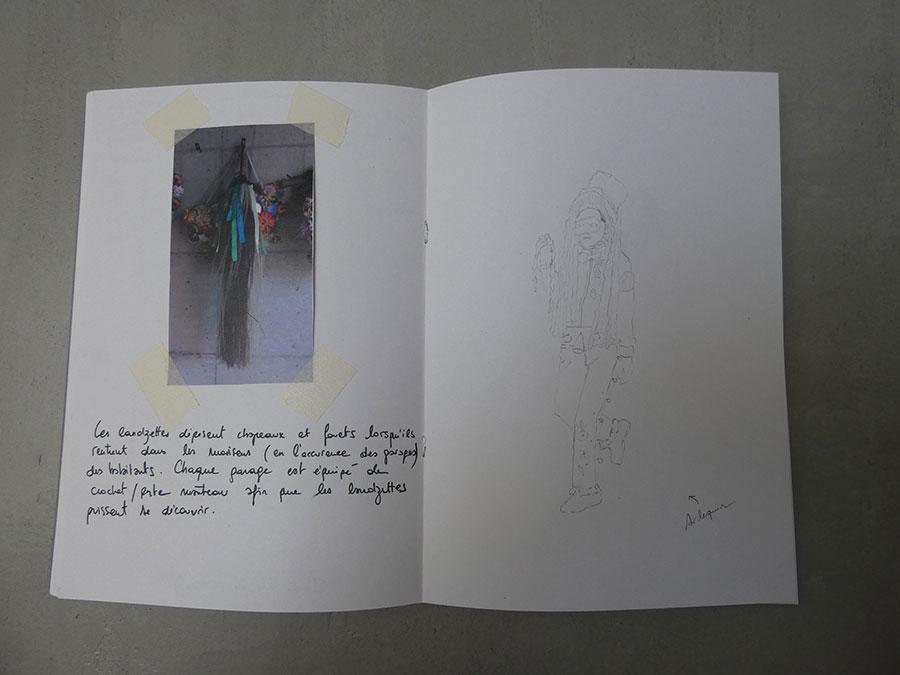
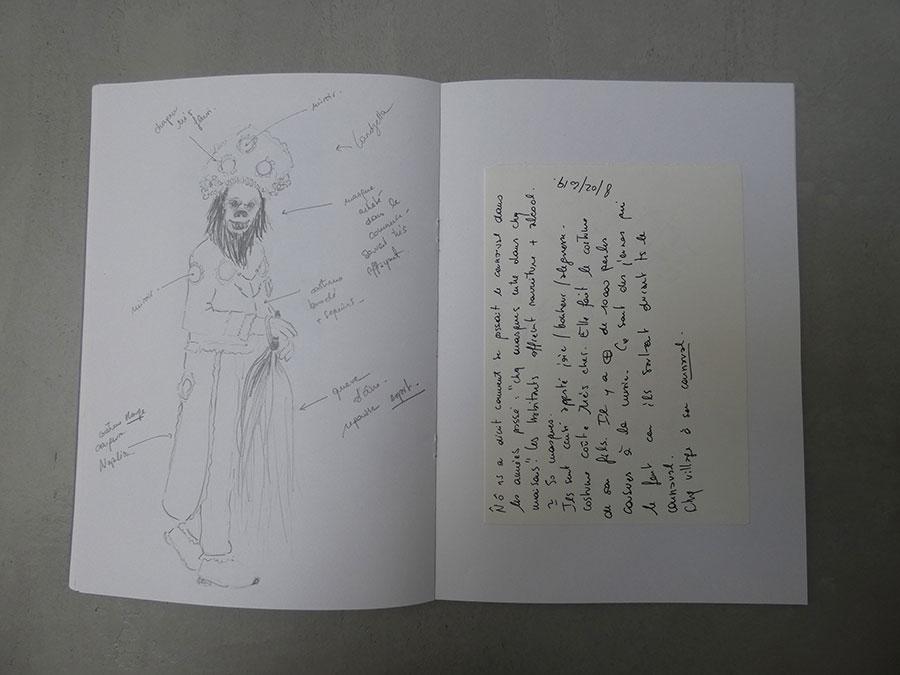
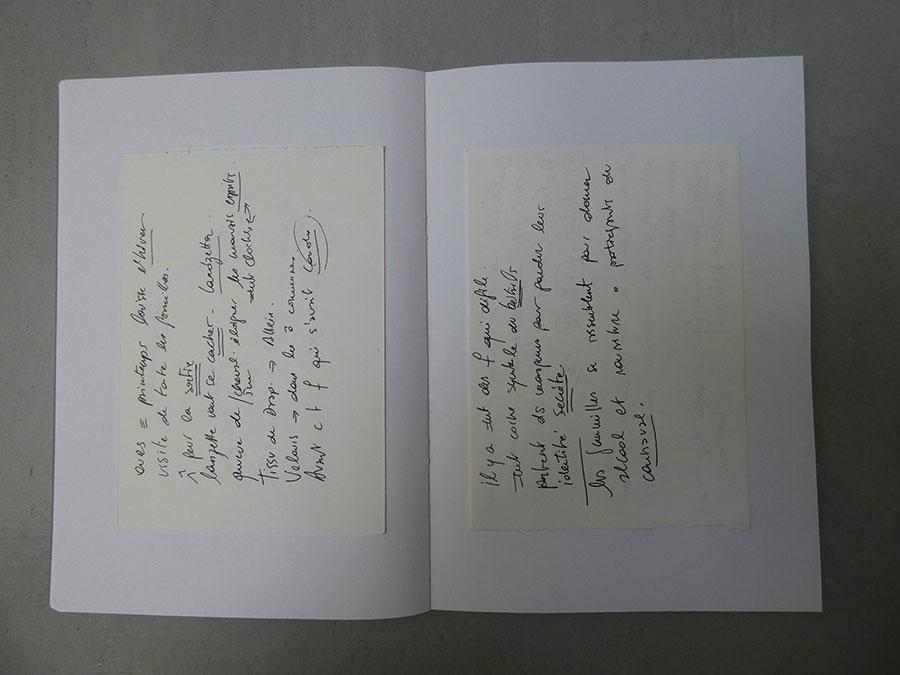
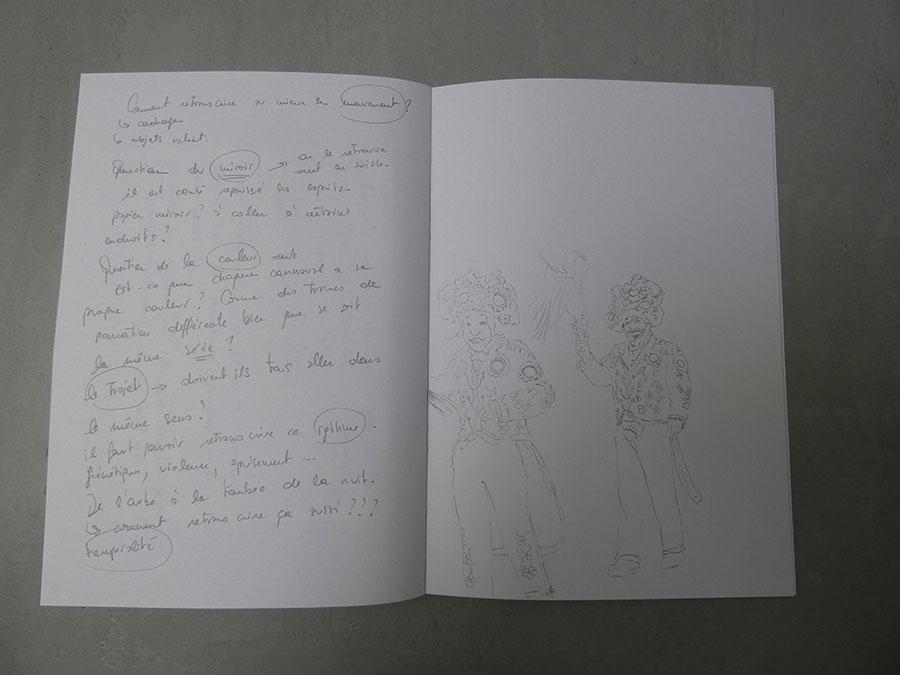
> FRANCE
February 24 / Prats-de-Mollo la Preste, France / La Fête de l’Ours / February 2 marks the end of Winter Solstice and the return of spring. According to popular belief, on this day in the Pyrenees bears stop hibernating. People watch the skies since the weather will determine the bear’s attitude and thus the coming harvest.
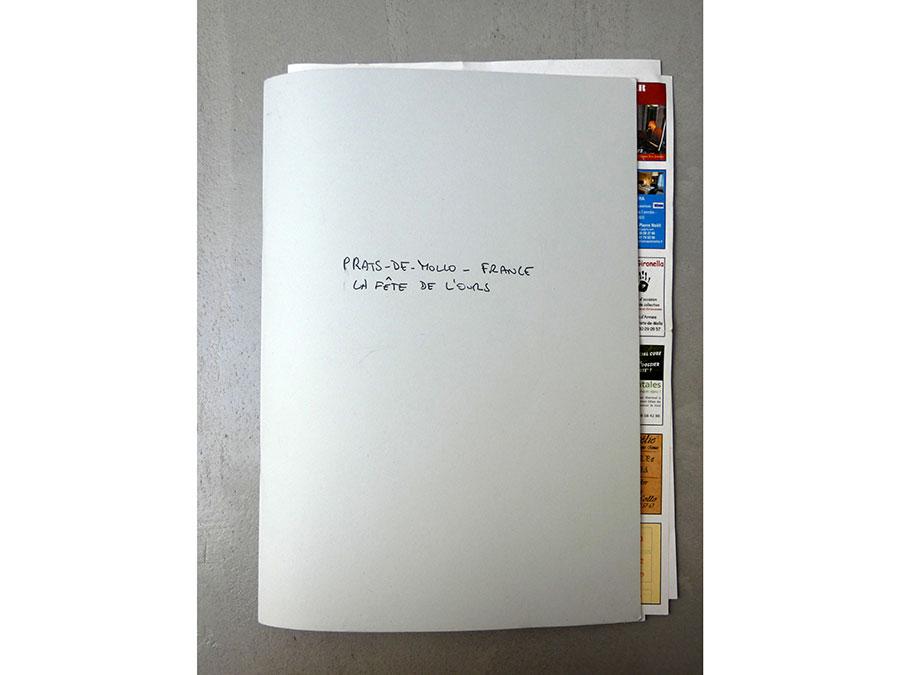
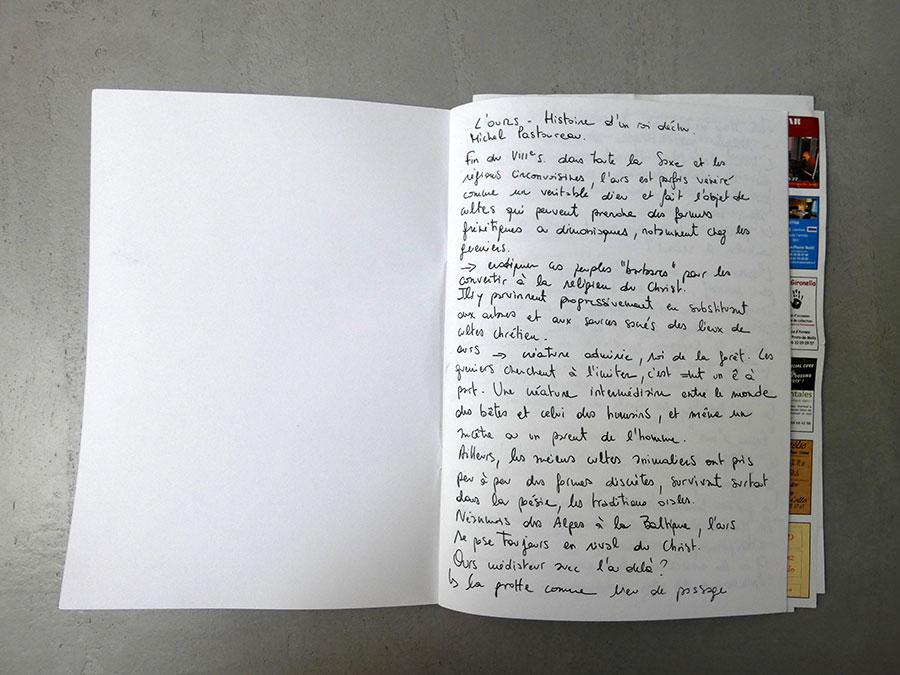
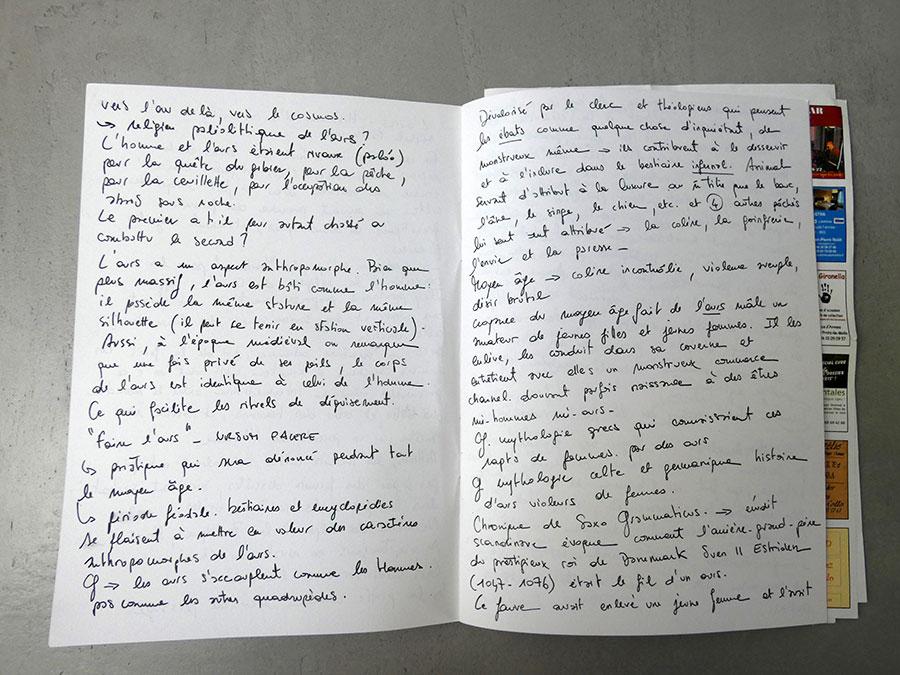
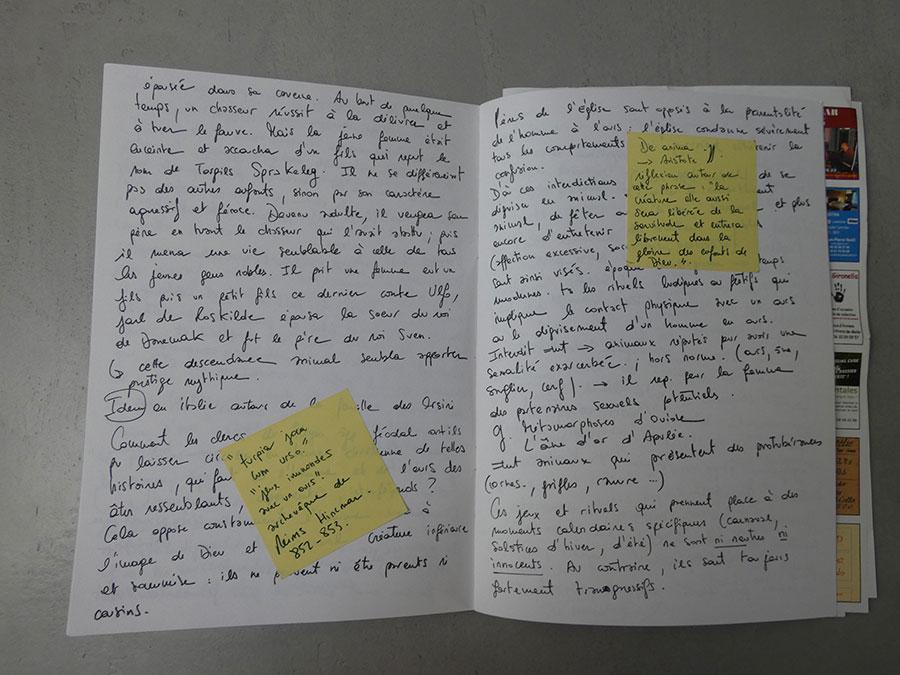
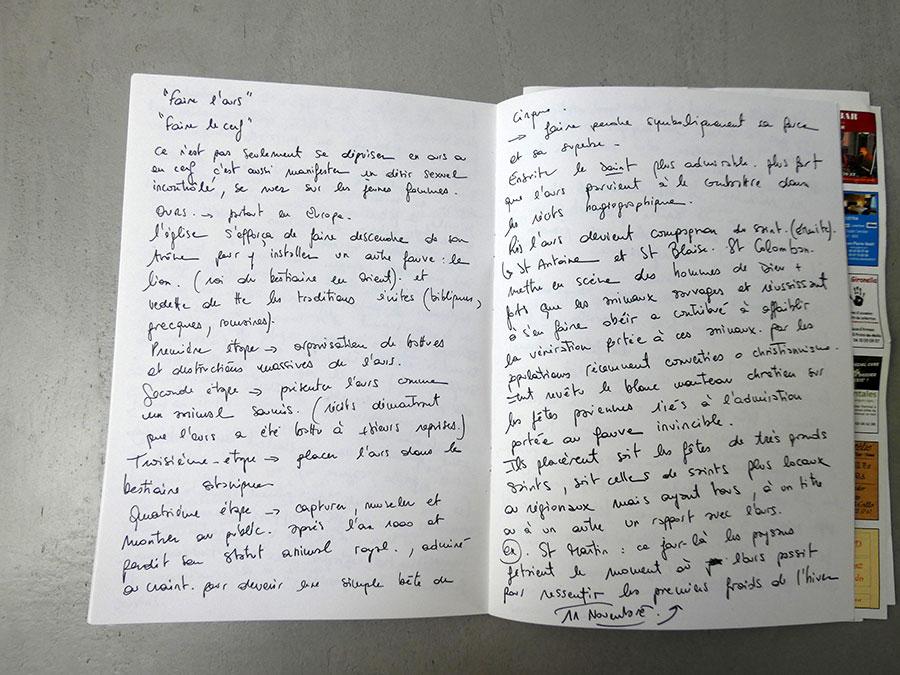
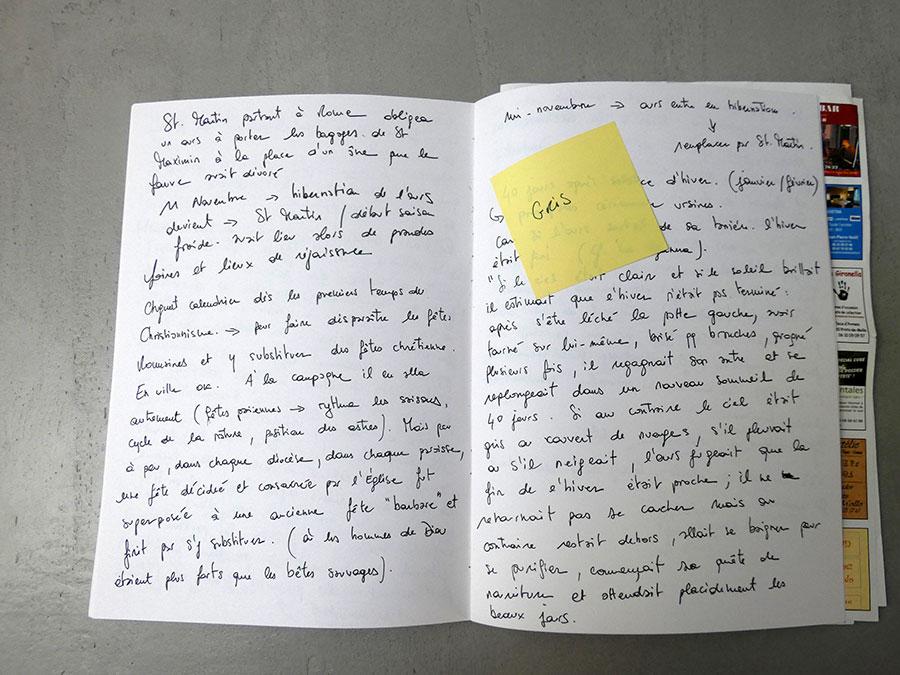
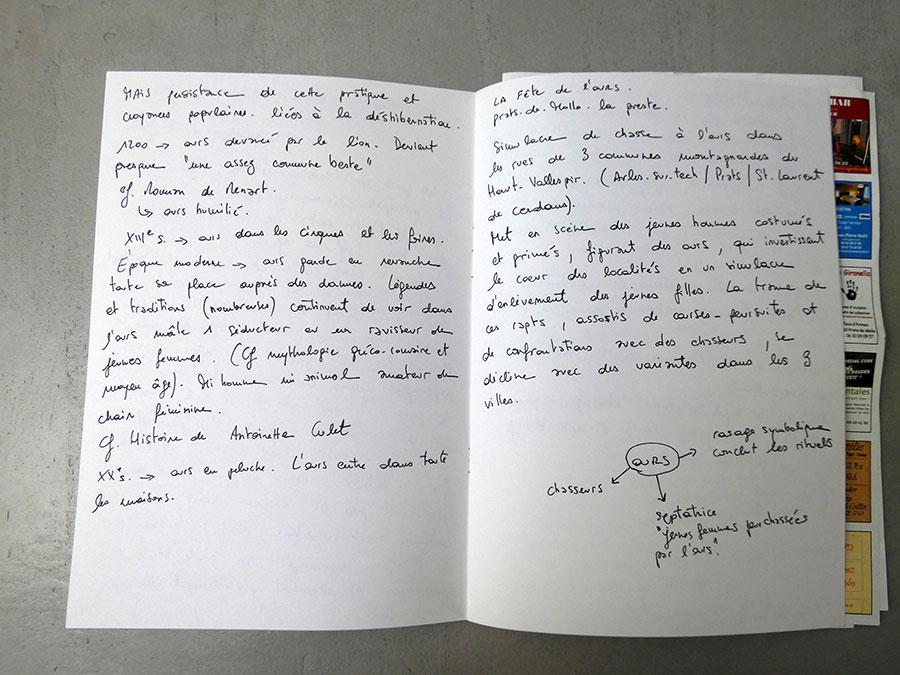
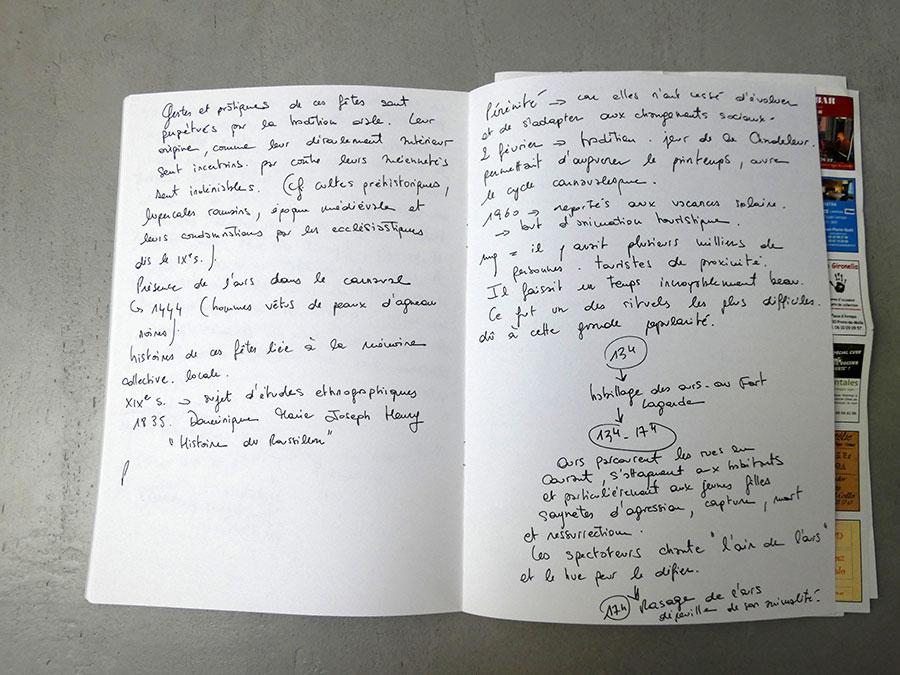
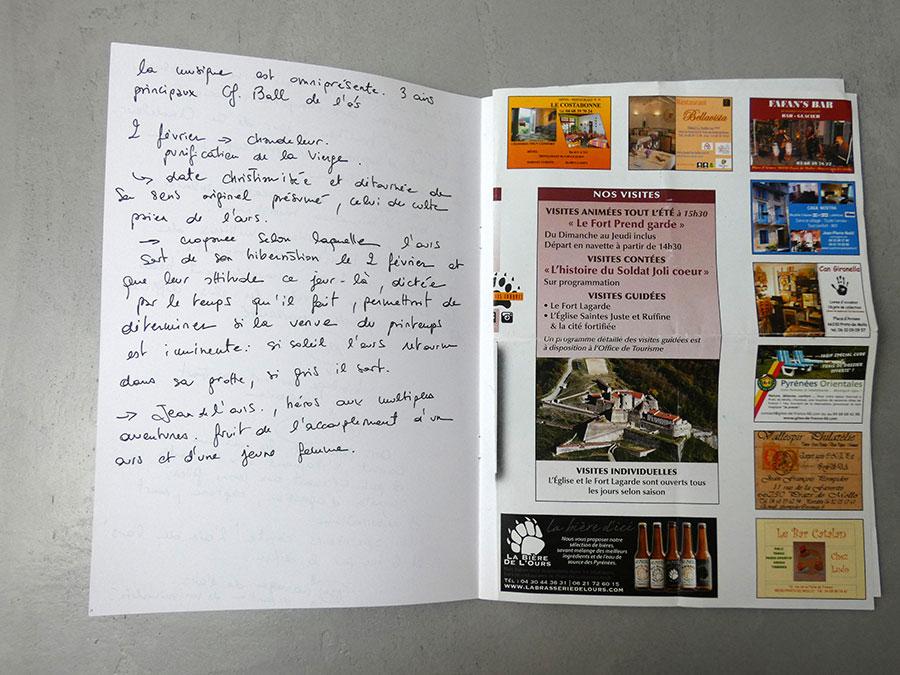
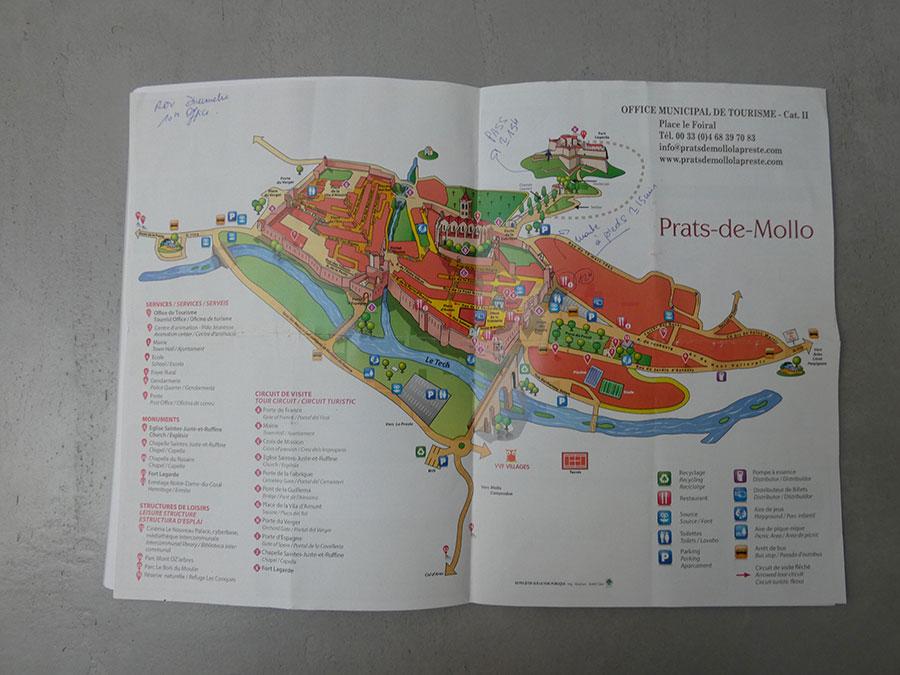
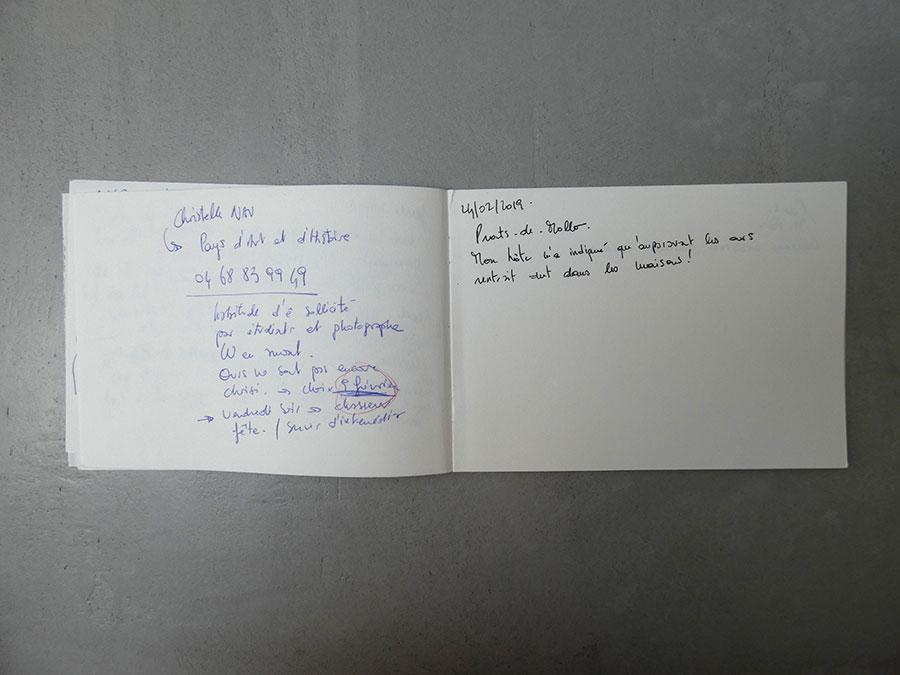
> BELGIUM
March 5 / Binche, Belgium / Le Carnaval des Gilles / Symbolically, carnival societies/carnival celebraters dance in city streets to chase winter away. There’s laughter, songs, and dancing as feet pound the ground to re-awaken the sleeping earth, while imagining the sunny days to come.
